

CUT AND
New Faces, Familiar Courage
As the nights grow long, Tallinn once again becomes a meeting place for cinema – for filmmakers both experienced and emerging, each shaping a region that continues to evolve while remaining true to its roots.
This year, Lithuanian legend Juozas Budraitis receives PÖFF’s Lifetime Achievement Award, honouring a career that spans generations and highlights how deeply rooted the region’s cinematic history is.
The new generation of Baltic filmmakers continues that story with quiet determination. Lithuanian director Vytautas Katkus, whose The Visitor won him the Best Director award at Karlovy Vary, finds drama in stillness and emotion in everyday gestures. Estonian filmmaker Eeva Mägi continues to reinvent cinema language through her independent Mo films — raw, intuitive, and defiantly personal. From Latvia, Alise Zariņa offers a sharp, tender voice on stories of identity, womanhood, and belonging. Together, they represent a new Baltic confidence: small-scale, deeply human, and unmistakably their own.
Documentary cinema also takes centre stage. A new competition section for Baltic documentaries was introduced at PÖFF, recognising that the region’s documentarians are too accomplished to stay in the background. Their films demonstrate a rare balance of precision and emotion. And while Vladimir Loginov’s Edge of the Night competes in the International Documentary Competition, it clearly belongs to the same creative wave reshaping nonfiction storytelling here.
The same energy runs through the Baltic shorts at PÖFF Shorts, where emerging filmmakers continue to surprise with their honesty, humour, and experimentation.
The foundations remain strong around them. Regional film funds continue to be robust, with a new one in Vilnius injecting fresh energy into cross-border collaboration and creative independence. Industry@ Tallinn & Baltic Event continues to bring the wider industry together, covering everything from debut features to high-end TV series.
And as PÖFF celebrates 25 years of Just Film, its youth and children’s section, we are reminded that the future of Baltic cinema begins early – with curiosity, courage, and the simple joy of discovery.
The masters are honoured, the new generation is rising, and the region remains steady – rooted, open, and quietly confident that its best stories are yet to come.
Eda Koppel Editor in Chief


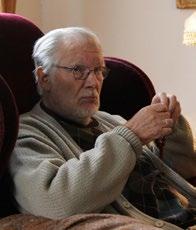


Baltic Film is published by the Tallinn Black Nights Film Festival
E-mail: info@poff.ee, I poff.ee
Editor in Chief: Eda Koppel
Contributing Editors: Mintarė Varanavičiūtė, Kristīne Matīsa
Contributors: Tara Karajica, Andrei Liimets, Elen Lotman, Maarja Hindoalla, Peeter Kormašov, Daniela Zacmane, Egle Loor, Signe Somelar-Erikson, Martina Tramberg, Leana Jalukse
Linguistic Editing: Paul Emmet Design & Layout: Profimeedia
Cover: Alise Zariņa, Eeva Mägi, Vytautas Katkus
Agnese
Photo by Viktor Koshkin
Photos by
Sohvi
Viik-Kalluste, Uldis Cekulis
UNITED by WOLF PACK
PÖFF has become a major Baltic cultural force, known for bold programming and international reach. This year, it launches a campaign to secure its financial future.
Tiina Lokk, Head of the Festival, discusses PÖFF’s role for filmmakers across Estonia, Latvia, and Lithuania, and how shifting public and private funding impacts its sustainability.
Wolwes are strong in packs
HBy Martina Tramberg
Photo by Sohvi Viik-Kalluste
ow do you define the festival’s role in the Baltic film ecosystem today?
Over the past decade, PÖFF has established itself as the flagship film festival of the Baltics — a stepping stone for films to gain prominence and attract festivals, sales agents, and distributors. Its strength derives from the synergy with Industry @Tallinn & Baltic Event: today’s project at Industry could be tomorrow’s film in the festival line-up.
PÖFF is the largest export platform for the Baltic film industry. Its broad international reach lets films compete in the context of auteur-driven cinema. Each year, it hosts around 70 countries and nearly 2,000 international guests.
The Industry section addresses the needs of the Baltic film sector, focusing on co-production markets, training programmes, and conferences, with TV Beats developing local TV series. Most importantly, it connects filmmakers with partners genuinely interested in collaboration, where many co-productions and deals begin.
What prompted the festival to launch a new fundraising campaign, Join the Wolf Pack, at this moment?
Fundraising of this kind is common worldwide, especially in the U.S., but less so in Europe, where national
and regional funding often covers up to a third of a festival’s budget. In Estonia, a fragile economy has reduced private sponsorships and state support, while high inflation further strains budgets. The amounts provided by the private sector and the state have also declined.
To uphold its A-class status, PÖFF cannot reduce its budget without impacting quality. Instead of increasing ticket prices, we encourage those who can support the festival directly.
How does PÖFF strengthen collaboration and visibility among Baltic filmmakers internationally?
The festival landscape has its logic: Venice showcases the best of Italian cinema, Locarno focuses on Italian, Swiss, German, and French films, while Berlin and Munich highlight new German films.

The Baltic states have small, uneven film industries, but together they create a strong regional identity that’s easier to promote. As one of the last major festivals of the year, PÖFF complements the “Big Four” — Venice, Cannes, Berlin, and Toronto — by giving films from smaller nations, including the Nordics, valuable international exposure. No one visits solely for Estonian films, but the Baltic and Nordic presence makes Tallinn an appealing hub for producers, directors, and distributors alike. The magic word for PÖFF is synergy.
Where do you envision PÖFF — and the Baltic film scene more broadly — in five to ten years?
Predicting the future is never easy, but I hope the Baltics will soon have strong studios, cash rebates, skilled crews with enough technical workers alongside creative talents, and better funding for local films to raise artistic quality. Filmmaking should be regarded as an investment promoting culture and the economy. Es-

pecially now, global interest in our films and culture is growing — a powerful way to ensure our voices are heard.
On a personal level, what keeps you motivated to lead such a large and complex festival, and what does success look like to you when the Baltic community stands behind PÖFF?
A festival is a constantly evolving organism. The one I started 29 years ago is completely different from the A-class festival it became under FIAPF. Building it in a small market with limited resources was a huge challenge, but within ten years, we earned a respected place among the world’s leading festivals. The journey was challenging — but thrilling.
Above all, I am a visionary and an ideas person. I remain fully engaged as long as there are projects in progress and unfinished goals. However, the time is approaching to start passing things on. Although I am
great at delegating and connecting different people’s ideas, there must soon be new perspectives and directions. A festival must never become fossilised or grow old along with its founder.
What would it be if you could express the festival’s spirit in one sentence?
Synergy, auteur cinema, and a democratically liberal festival where the filmmaker, not celebrity glamour, is at the centre. Friendly and caring.
As Tiina Lokk makes clear, the campaign is about more than balancing budgets — it’s about securing a future where Baltic cinema stands confidently on its own terms. For over two decades, PÖFF has been more than a festival; it has been a cultural bridge linking the Baltic states to the wider film world. Now, as the festival calls for renewed collaboration, the message is unmistakable: the strength of Baltic cinema lies in shared responsibility and vision. BF
Tiina Lokk, Head of the Festival, discusses PÖFF’s role for filmmakers across Estonia, Latvia, and Lithuania.
JOIN THE WOLF PACK

To see,you must
Chasing a fox across an airport runway, tracing fresh pawprints in the snow, helping tearful flight attendants photograph a baby hare nestled in their palm, freeing a gull’s wing from barbed wire fencing, or relocating a swarm of bees away from sensitive airport equipment — such is the curious daily routine of professionals with the rather ominous job title “scarecrows”
By Kristīne Matīsa Photos by Uldis Cekulis, VFS Films
look!

It’s also the name of the Latvian–Lithuanian co-produced documentary Scarecrows, which opens this year’s Baltic Competition at the Tallinn Black Nights Film Festival (PÖFF), symbolising cinema’s – and especially documentary film’s – power to reveal unexpected territories.
The filmmakers describe their Scarecrows as an “airport western,” with its protagonists cast as “runway rangers” operating in a paradoxical environment. Next to the urban citadel of global travel lie forests, meadows, and water – a meeting point for species, each with its own flight path. Humans board giant “metal birds,” for whom real birds pose a genuine threat. Even a tiny snake slithering across the tarmac could trigger disaster. That’s why “bird and wildlife control specialists,” as they’re officially known, patrol nearly 700 hectares of open terrain – a space no fence can truly secure. Yet the most humane aspect of this unusual profession is that it’s not about violence. It’s about learning to recognise and understand animals, so they can be gently persuaded to leave the airport grounds. In truth, scarecrows protect not only aircraft and passengers, but also the animals themselves – preventing fatal collisions that would go unnoticed inside a roaring jet.
THE FORCE OF NATURE
Director Laila Pakalniņa, cinematographer Māris Maskalāns, and the scarecrow team – Mareks and his colleagues – filmed across all seasons over five years at Riga Airport, rarely stepping inside the terminal buildings. Life outdoors, immersed in nature, is nothing new for them. Māris Maskalāns is Latvia’s leading wildlife cinematographer, happiest spending the night in a forest hide with his camera, waiting for a rare bird at sunrise or a woodland scene to unfold. At the airport, he sits in the grass beside a fox, patiently hoping a mouse might appear. Perhaps the strangeness of the setting sparks even greater inspiration than the forest itself. In any case, Pakalniņa and Maskalāns’s earlier documentary Leiputrija / Dreamland (2004), which explored animal life at a landfill site, caught the attention of the European Film Academy and was shortlisted for a nomination. It has since been shown widely at festivals and retrospectives. Pakalniņa credits Maskalāns with teaching her patience – a skill vital for all her subsequent films. “To see, you must look,” she says.

Equally serious, talented, and seasoned are the professionals at VFS Films, the documentary studio that first earned its reputation under the name Environmental Film Studio. Over time, its thematic scope expanded, and it now produces high-quality, expertly crafted films on a wide range of subjects – not just “about birds”. Yet its connection to nature remains strong. Even the studio’s sole fiction feature to date, Upurga (2022), tells a story of nature’s mystical and unstoppable force.
VFS Films is led by internationally acclaimed producer Uldis Cekulis, whose career spans over 30 years. Interestingly, he initially trained as a physicist before entering cinema in the 1990s as a cinematographer – including work on one of Pakalniņa’s early films. Perhaps that’s why he views each film not merely as a “production unit for market distribu-
tion,” but as a work of art to be refined to perfection. For more than a decade, Cekulis has championed international co-productions, often with Lithuanian partners. Scarecrows is co-produced with Lithuanian studio Moonmakers, headed by producer Giedrė Žickytė. The film was edited by Ieva Veiverytė, with sound design by Jonas Maksvytis, and music composed by Paulius Kilbauskas and Vygintas Kisevičius – all in Lithuania.
THE PAKALNIŅA ERA IN CINEMA
About thirty years ago, director Laila Pakalniņa (b. 1962) unwittingly opened a new chapter in Latvian documentary filmmaking. Fresh from film school, she made three documentaries in quick succession, exactly as she envisioned them –and this “Pakalniņa Trilogy” was promptly recognised with a FIPRESCI award at the Cannes Film Festival in 1996. That
AS A FILMMAKER,
I see my goal as creating art, not producing a product for global consumption. And this art has wings (and a soul) to cross borders. I know that today is not the easiest time to say something like this. But even now, creating art remains important. Is there a weapon or recipe against fake news, internet trolls, populism,

dumbing down, etc.? Yes, there is: an individual with his or her unique thoughts and feelings. So, I see the transnational appeal of my films – art is also needed in Europe. To preserve something that has become very fragile but still remains very important today – personal emotion and individual thinking. To help people become personalities, not just part of the crowd.



marked the start of a new cinematic journey. Since then, walking that same path, Pakalniņa has become Latvia’s most internationally acclaimed contemporary filmmaker.
She has written and directed over 30 documentaries, five live action shorts, and six fiction features – with several more currently in development. Her work has screened in official selections at Cannes, Venice, Berlinale, Locarno, Karlovy Vary, Tallinn, Oberhausen, Nyon, IDFA and other major festivals, earning numerous accolades along the way.
Many of Pakalniņa’s films are in black and white, though the choice to use or avoid colour is always deliberate. Scarecrows, too, often leans towards monochrome – the grey of concrete runways, autumn rain, or winter snow – yet in every season and at any hour, the neon-yellow safety vests of airport staff and the vivid runway markings flash like warning beacons, signalling that this is a zone where vigilance must never lapse.
Another hallmark of Pakalniņa’s work is her minimalist titling: nearly three-quarters of her films bear single-word names, just like Scarecrows. She explains this with a charming analogy:
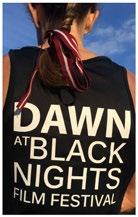
“I usually don’t think about what to call a film — the name usually comes with the idea. It’s like, well, you decide you’re going to knit a hat. You start knitting, and you know all along that you’re knitting a hat. It’s the same with a film. I know I’m making a film about a ferry, the mail, a bus, and so on. I know that right from the start.”
SINCE THE TALLINN MARATHON
Pakalniņa’s connection with PÖFF includes a notable milestone. A decade ago, when PÖFF was officially recognised as an A-list festival, her fiction feature Ausma / Dawn (2015) – a LatvianEstonian-Polish co-production – was selected for the main competition. Its

world premiere took place on 18 November, Latvia’s Independence Day, and the film subsequently reached the European Film Academy shortlist and the longlist for the Academy Awards.
To mark its selection, Pakalniņa ran the full 42-kilometre Tallinn Marathon in September, turning the event into the world’s longest film-release announcement: the back of her shirt bore the message that Dawn would premiere at PÖFF in November. She also ran at sunrise on the day of the premiere. In fact, she runs every morning at every festival she attends – and has completed more than ten marathons. She runs daily at home, too. “You won’t believe it, but I do it for the films!” BF

Scarecrows
Director & Scriptwriter: Laila Pakalniņa
Cinematographer: Māris Maskalāns
Editor: Ieva Veiverytė
Composers: Paulius Kilbauskas, Vygintas Kisevičius
Sound director: Jonas Maksvytis
Main Cast: Mareks Arbidāns
Producer: Uldis Cekulis
Co-producer: Giedrė Žickytė
Produced by: VFS Films (Latvia), Moonmakers (Lithuania)
Year of release: 2025
90 min
Main team of “airport western” – “scarecrow” Mareks Arbidāns, cinematographer Māris Maskalāns and director Laila Pakalniņa.
THE ART OF EVERYDAY THE
Vytautas Katkus is one of the most recognized filmmakers of his generation in Lithuania. As a cinematographer, his work spans more than thirty short and feature films, including Aistė Žegulytė‘s documentary Animus Animalis (2018) and Saulė Bliuvaitė’s Toxic (2024). But Katkus is not only behind the camera – he also directs. This summer, his debut feature The Visitor premiered at the Karlovy Vary International Film Festival, where he received the Best Director award.
By Mintarė Varanavičiūtė Photo by Audrius Solominas
In this conversation he reflects on his path in cinema and the creative process behind the quiet, human stories.
Let’s start from the beginning. How did cinema find its way into your life?
I wasn’t one of those people who grew up watching films all the time, dreaming of becoming a filmmaker. For me, movies were more of an entertainment. I imagined myself doing something more technical, maybe working with computers or numbers. But then, quite early on, I realized that film and technology aren’t so far apart. In cinema, you always have a tool in your hands, something to create with – and that means there’s never any routine, which I love. Once I started exploring filmmaking, I found myself watching more and more movies, music videos, anything that told a story through images.
You graduated as a cinematographer, but later started directing. Where did you learn to direct?
There isn’t really one clear answer. I think I learned a lot just by being around people – friends who studied directing, the directors I worked with as a cinematographer, and, of course, from the films I love watching myself. I never had a single moment when I decided, “Okay, now I’m a director.”
It actually started with a small idea for a script, something drawn from real moments in my own life
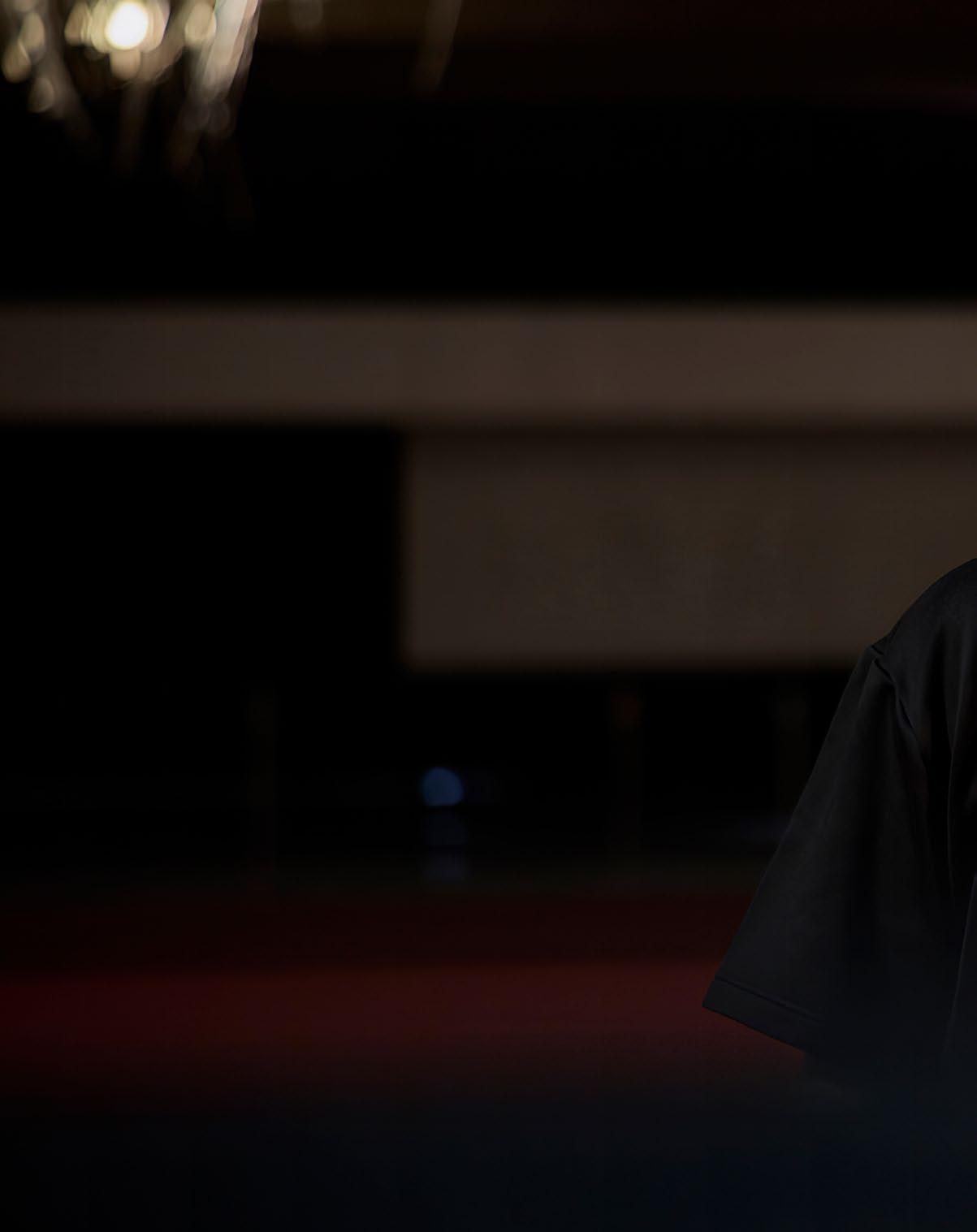
– things I didn’t want to forget. I sent that idea to a few friends in film, and from time to time I’d come back to it, changing scenes in my head, trying to see what it could become.
Back then, I was really fascinated by films where the image itself becomes a kind of character – where you can tell a story or create a feeling just through visuals, something that’s hard to put into words. I wanted to see if I could do that too – to tell a story purely through what you see. At one point, I asked myself whether to invite a director friend who already had experience, or to just try it on my own and see where it would lead. In the end, I decided to do it my way.
Your short films Community Gardens (2019), Places (2020), and Cherries (2022) have all screened at major festivals – from Cannes to Venice. Let’s go back to 2019 – how do you remember that time?
When producer Viktorija Seniut and I finished Community Gardens, we didn’t really have big plans for it. We didn’t even know much about how the festival world worked. So when we got the news that the film had been selected for Cannes Critics’ Week, we were honestly shocked – and incredibly happy. Then it hit us that the festival was just a month away, and the film wasn’t even completely


finished! That moment taught me a lot about the importance of letting go – about knowing when to say, “It’s done.”
Critics’ Week took such good care of us. They didn’t just select the film – they welcomed us, introduced us to the community, and made us feel part of something bigger. That recognition gave me a quiet kind of confidence. After the screening, I felt that maybe I was moving in the right direction. I realized that I could make the kind of films that feel true to me – and that there might be at least a few people who connect with them.
Where do you find inspiration for your work?
Mostly in everyday life – small, ordinary moments where nothing much seems to happen, yet something shifts inside. I’m drawn to situations that aren’t about what you see directly, but about what you feel underneath – relationships with parents, friends, the simple act of being together. So inspiration usually comes from emotional states, not from big events. Of course, I’m also inspired by other art forms – music, painting, photography, literature – but those come later, when I’m looking for ways to wrap everyday themes in a cinematic form.
Do you find time to watch films yourself?
I try to watch as many films as I can. You can learn something from every film. Of course, sometimes I
Inspiration for Vytautas Katkus comes from everyday life –small, ordinary moments where, at first glance, nothing much seems to happen.

have to watch them for technical reasons, but I prefer to watch as a viewer, not as a cinematographer analyzing how something was shot. I want to be immersed. I enjoy seeing a wide range of films – a lot of independent and arthouse cinema from all over the world. I think it’s important to understand what’s happening in film right now, where it’s heading, how it’s changing.
Do you have any “rules” when making a film?
I like working with individuals who are not only great professionals but also genuine people. That’s why I often make films with friends, or with people who later become friends. I want filming to feel comfortable and human, not stressful or overly rigid. I believe that to create a film full of emotion and atmosphere, everyone on set needs to feel good, supported, and respected.
Vytautas Katkus won the Best Director Award at the Karlovy Vary International Film Festival.

The Visitor premiered at Karlovy Vary alongside Gabrielė Urbonaitė’s Renovation, where you worked as cinematographer. What was that experience like?
I’d heard that Karlovy Vary really values filmmakers and attracts people who genuinely love cinema – and it’s true. What mattered most to me was having our team at the premiere. We’d lived and worked together for a month, and everyone gave more than what their job required. Since Gabrielė’s team was there too, there was a strong sense of mutual support.
I remember thinking I’d feel calm after the premiere – but the next morning I woke up anxious, wondering how the film would be received. Before the premiere, I could still change things. After that, the film had to live on its own.
You co-wrote the screenplay with Marija Kavtaradze, your longtime friend and collaborator. How did that process go?
Marija and I have known each other for more than half our lives, and we’re close friends. Writing together was a really warm, natural process – we didn’t set strict rules about who does what. Marija has more experience


in writing, but she always tried to capture in words what I wanted to express visually. The idea itself came from old memories – fragments of moments that somehow stayed with us and began to connect.
You often work with non-professional actors. In Cherries, you acted alongside your father, and The Visitor also features real people from your life. What does that bring to the film?
It’s something I think about early on, but I usually confirm during the process. In Cherries, I liked the idea of acting with my father, but we still did casting and took time to decide. With The Visitor, I wanted a mix – some professional, some non-professional actors. From the start, it was clear which roles needed trained performers, and which could come from real people we knew. That mix adds a sense of honesty – a bit of documentary truth. Non-professionals bring their natural selves, while professionals give structure and confidence.
Sound also plays a key role in The Visitor. Can you tell us more about that?
I worked on the sound with Julius Grigelionis. Before filming, we watched a lot of movies together and talked about how they used sound – how bold or experimental they were. It was a great learning experience. For this film, I wanted everything we recorded on set to feel real. The songs you hear in the film were actually playing – from phones and radios – so the actors naturally reacted to them. It’s not easy in post-production, but that authenticity matters to me. For example, if the camera is far away, the voices also sound distant. Sometimes we shaped the sound around what a character hears or feels. The idea was for sound to not just accompany the image, but to deepen it.
Both lead roles in The Visitor were played by non-professional actors.
The island in the film is visually striking. How did that idea come about? When we were writing, we imagined a real island, but once we decided to shoot in Lithuania, we knew we’d have to build it. No one on the team had done anything like that before, so it became a fun learning process. The island was the only thing created entirely from scratch – but it needed to work both visually and physically. It’s like a place from a childhood dream, somewhere you’d want to reach. There’s a sense of quiet surrealism, like in the whole film, where you’re never quite sure what’s real and what’s imagined.
Which of your latest projects as a cinematographer are coming out next?
In November, Aistė Žegulytė’s documentary Holy Destructors will premiere at the International Documentary Film Festival Amsterdam (IDFA) – a project we worked on for nearly six years. That same month, Gerda Paliušytė’s documentary Ship will be released in Lithuania, and in spring, Renovation will also premiere locally. Both Holy Destructors and Renovation will be presented at POFF, too. BF
THE VISITOR 2025 | fiction | 111 min | Lithuania, Sweden, Norway End of summer. Danielius (in mid 30s) makes a return to his hometown to sell his parents’ flat. Having nowhere to rush, he reconnects with people and the town that’s no longer his. He is confronted with a quiet sense of loneliness. But instead of resisting it, he allows himself to explore it.
Director: Vytautas Katkus Scriptwriters: Vytautas Katkus, Marija Kavtaradze Cinematographer: Vytautas Katkus Editor: Laurynas Bareiša Sound Designer: Julius Grigelionis Production Manager: Gabrielė Misevičiūtė Production Designers : Lisanne Fransen, Ieva Rojūtė Costume Designer: Morta Jonynaitė Make-Up Designer: Jurgita Globytė Cast: Darius Šilėnas, Vismantė Ruzgaitė, Arvydas Dapšys
Producers: Marija Razgutė, Brigita Beniušytė Co-Producers Elisa Pirir, Anna-Maria Kantarius Produced by: M-Films (LT), Staer (NO), Garagefilm International (SE) Sales: Totem

The island is like a place from a childhood dream, somewhere you’d want to reach.
by
Photo
Paulius Makauskas
Oscar Season
The Baltics Bring Their Best
The Baltic film trio – Estonia, Latvia, and Lithuania – is again stepping onto the world stage with their official entries for the 98th Academy Awards.
By Eda Koppel
Baltic cinema’s relationship with the Oscars has been a slow but steady ascent. A decade ago, Estonia’s Tangerines (Mandariinid, 2015) became the first Baltic feature nominated for Best International Feature Film, opening doors and raising expectations for the region.
Then came Latvia’s breakthrough last year, when Gints Zilbalodis’ animated masterpiece Flow not only became the first Baltic film to win an Oscar – for Best Animated Feature, but also earned a nomination for Best International Feature Film. This double distinction made headlines worldwide.
The night marked a significant milestone for Baltic cinema. The ceremony’s host, comedian Conan O’Brien, even joked, “The ball is now in Estonia’s court.” A year later, the challenge has been accepted –and expanded.
ESTONIA: ROLLING PAPERS
BY MEEL PALIALE
Estonia’s official submission, Rolling Papers by Meel Paliale, captures the restlessness of youth in a world of endless freedom and no easy answers.

The film follows Sebastian as he navigates friendship, ambition, and uncertainty with humour and tenderness – qualities that feel unmistakably Estonian.
Produced by Tallifornia, the film exemplifies a confident new wave of local filmmakers unafraid to blend irony and sincerity. The Estonian Film Institute praised it for “reflecting the spirit of a free society with all its possibilities and uncertainties.”
LATVIA: DOG OF GOD BY LAURIS AND RAITIS ĀBELE

Latvia continues its adventurous streak in animation with Dog of God, an audacious rotoscope feature by brothers Lauris and Raitis Ābele.
Set in 17th-century Livonia, the film blends religion, myth, and madness with painterly motion. It premiered at the Tribeca Festival in New York, where critics praised its bold visuals and haunting spirituality.
The Latvian selection committee observed that Latvia has established a presence in the global film scene through “unusual animation”, and Dog of God is its next daring chapter. Following Flow’s Oscar triumph,

Rolling Papers
A moment of triumph as Latvia’s Flow makes Baltic cinema history.

it serves as a reminder that Latvian animation is no longer a niche – it’s a movement.
LITHUANIA: THE SOUTHERN CHRONICLES BY IGNAS MIŠKINIS
Lithuania’s choice, The Southern Chronicles by Ignas Miškinis, takes us to the chaotic optimism of the 1990s, when the country and its youth were redefining freedom.
The film has become a national sensation: over 411,000 viewers, twelve Silver Crane Awards, and the title of Lithuania’s highest-grossing film.
Committee chair Neringa Kažukauskaitė described it as “a film bursting with vitality and authenticity” – a statement that captures its nostalgic energy and modern relevance.
BALTIC SHORT ANIMATION
TAKES FLIGHT – TWICE
Estonia’s animation scene, long a source of quiet national pride, is also back in Oscar contention with two acclaimed stop-motion shorts now qualified for the race.
Winter in March by Natalia Mirzoyan (Rebel Frame, Estonia / ArtStep Studio, Armenia) narrates a young Russian couple fleeing their homeland after the invasion of Ukraine. Mirzoyan creates a tactile, dreamlike journey through guilt and exile using puppet animation, fabric, and embroidery. Combining puppet animation with embroidered textures makes it intimate and political – and it has already won the

Heart of Sarajevo and Cannes La Cinef third prize.
Anu-Laura Tuttelberg offers a poetic contrast with On Weary Wings Go By, an Estonian–Lithuanian co-production between Fork Film and Art Shot. Filmed over three winters on the Estonian coast and in northern Norway, the film follows a porcelain girl wandering through a frozen world where birds have flown south – a gentle reflection on time, nature, and transience.
RUN for the Golden Man
The short premiered at Locarno, screened at over 85 festivals, and collected major prizes, including DOK Leipzig’s Golden Dove, and Animafest Zagreb’s Golden Zagreb Award.
Mirzoyan and Tuttelberg’s works reaffirm Estonia’s place as one of the world’s leading voices in artistic stop-motion – small-scale, handmade, but with global resonance.
THREE NATIONS, ONE STORY
From Estonia’s introspective realism and lyrical animation to Latvia’s fearless mythmaking and Lithuania’s raw post-Soviet energy; the Baltic film industries enter Oscar season with a mix of distinct styles and shared ambition.
If last year belonged to Latvia, this year might very well be Estonia’s or Lithuania’s turn. As always, the true victory lies in how these three small nations continue to punch well above their cinematic weight. As someone said, smiling, “The Baltics used to whisper at the back of the world’s cinema hall. Now they’re sitting in the front row and have brought subtitles.” BF
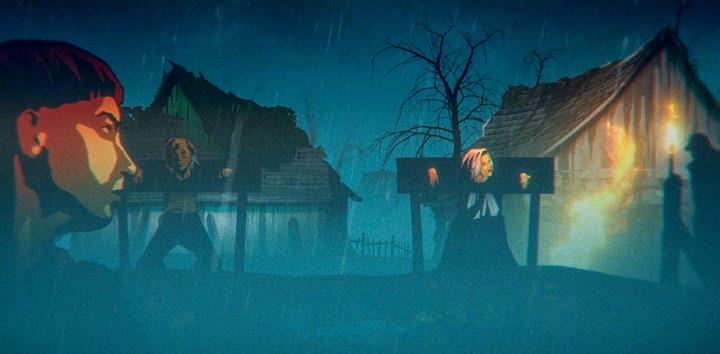
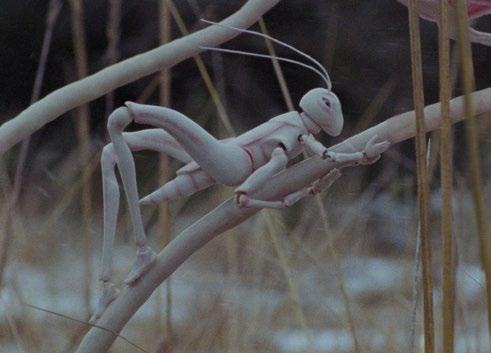
Winter in the March
The Southern Chronicles
Dog of God
On Weary Wings Go By
Baltic animation soars between belief and dream.
Two Baltic films capturing the echoes of change, from the warmth of freedom to the chill of departure.
AT THE EDGE NIGHT OF THE
Documentary filmmaker Vladimir Loginov is known for films like Anthill (2015) and Celebration (2019), with Hippodrome (2022) being his latest. His style can be described as observational and poetic. At the Tallinn Black Nights Film Festival, his new documentary Edge of the Night (Ööäär, 2025) will have its international premiere in the Doc@PÖFF International Competition programme.
By Peeter Kormašov Photo by Max Golomidov
Edge of the Night doesn’t feel like the familiar Tallinn but rather like a city in a foreign country. You also avoided the usual nightlife spots. When someone says “nightlife,” you immediately think of clubs -which we do have in the film - but I wanted to avoid clichés. It might seem that I collected these moments one by one, but actually, it all happens every night. Especially when we were shooting at the emergency call centre – it’s crazy! It seems impossible that every second there’s a new call coming in.
Watching the camera focus on the main character, the blonde woman, you can really feel the tension. The call in the background, where a woman has barricaded herself in the bathroom from a violent husband... It’s even more intense because you don’t see the situation. For me, this was a great example of how sound alone allows you to imagine what’s happening and how reality is created through sound. We used the same effect with a man waiting in a hospital while his wife gives birth.
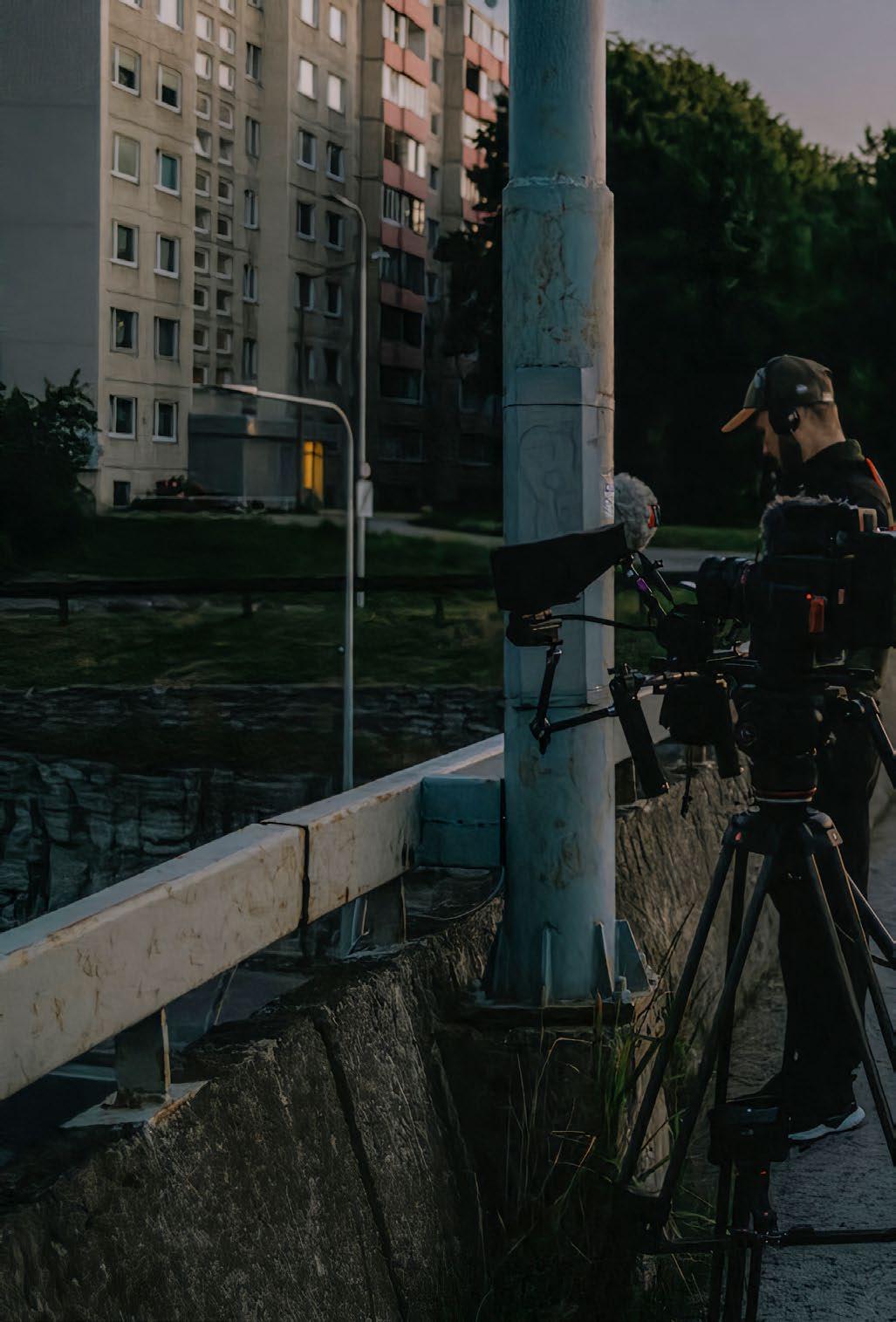
Was the cinematographer again Max Golomidov?
Yes. It was me, him, and the sound designer Dmitry Natalevich on site. The producer Janika Möls also made a tremendous contribution, I’d say at least as much as for a feature film.
Was there anything especially captivating that you had to leave out of the final version?
We filmed at the Tallinn Observatory, and I wanted to make a connection with the cosmos. The footage was good, but I couldn’t find a place for it. We also had to cut scenes from the Tallinn water works hangars in Paljassaare.
I wanted to include Rusalka (Mermaid, a popular warship memorial in Tallinn) and even rented a crane, but on screen it didn’t look the way I wanted. Still, it was an interesting experience; nowadays, you’d normally film something like that with a drone.
The other sculptures in the film work well, I think. The portraits of graveyard sculptures are also inhabitants of the city. That was the biggest ethical question for me: they didn’t give permission to film them, but I’m still using the footage.
EDGE OF THE NIGHT
Director: Vladimir Loginov
Cinematographer: Max Golomidov
Sound: Dmitry Natalevich
Editor: Hendrik Mägar, Vladimir Loginov
Producer: Janika Möls
Production: Anthill Films (Estonia)
Co-production: Korraks lm (Estonia)
Festival distribution: Raina Films
Andy Norton, andy@rainafilms.com
Inka Achté, inka@rainfilms.com
Production Year: 2025
Languages: Estonian, Russian, English
Duration: 92 min
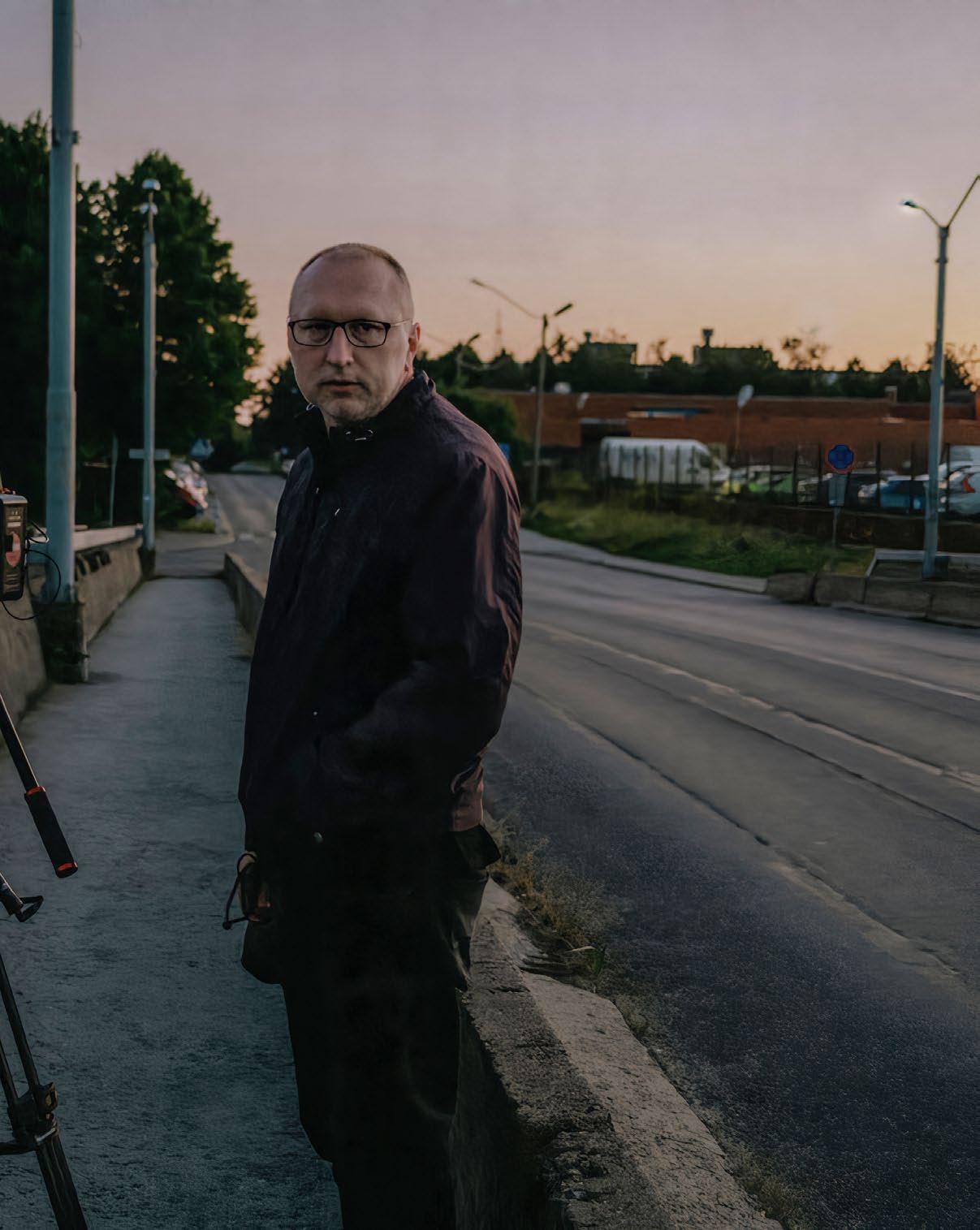
How did you get so close to the swingers? Why did they let you film them? In a way, they go there to show themselves. Maybe they’re not ready for so many people to see them, but we don’t show faces clearly. We asked whether they wanted to cover their faces or not.
People there are super friendly, looking for a partner or a friend. They smile, chat, and encourage body positivity. A nice crowd, many from abroad, like Finland and Latvia.
We shot there a couple of times. Some people said it was okay to film them but not to show it in the movie. That’s understandable, it’s a private world, even with politicians among the visitors. They have their own Telegram group, which surprisingly has around 10,000 members.
We also see other alternative clubs. Usually the “crazier” or more underground a place seems to the “normal” world, the nicer the people are.
Always. In my experience it’s often the opposite – the danger comes from where you least expect it. Even biker clubs are full of completely normal people.
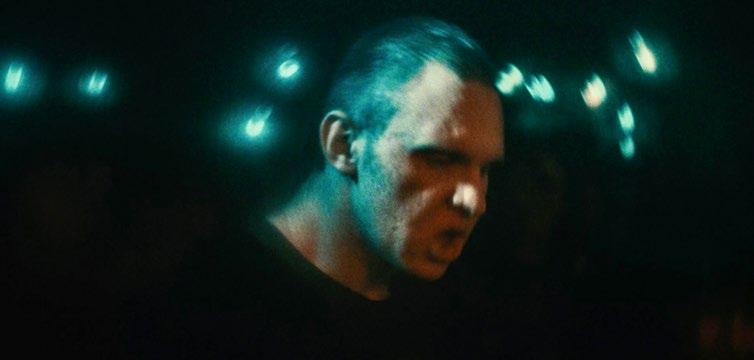
What about the young guys wrestling at the bus station? It looked like they were just having fun.
Yes, and it’s also easier with young people. They film themselves all the time. If you see something foreign or uncomfortable, it doesn’t mean it’s uncomfortable for them – it’s their normal life.
You think you’re filming an interesting face, something dramatic – but not for them. Will the audience see it as I saw it? How will the people themselves see it? I have no ill intentions, what’s there is pure beauty. Also, the viewer is a co-author, as in any art form.
You’ve said you don’t want to solve problems with your films. I can’t. Even if I show something, I don’t want to criticise it. People live their lives as they wish. Even if you feel you should help them, very often that’s not true – it’s just your own perception. Of course, when someone is sick or in danger, that’s a different story. But usually, on a human level, there’s no difference, and the problems are the same.
Was it hard to get close to people?
Sometimes you see a person for the first time, start filming, and they just continue their lives like nothing’s happening. Some people are already “in character,” like police officers or firefighters. Others ask where the footage will be used – “Will something happen when my boss sees it?”
We didn’t need too many people. The woman in the emergency call centre became the main character – she volunteered when they asked at work who wanted to participate. There were a couple of candidates, and we met with them.
What other obstacles did you face?
At the maternity hospital I thought it would be easy to find parents happy to have such footage later. But women are in
For me there is no distinction between a feature film and a documentary.

a completely different reality before childbirth and if you don’t have an agreement beforehand, it’s not happening. Also, KAPO (the Estonian Internal Security Service) checked on us several times. The water works, the emergency call centre, and the airport are all objects that automatically report activity to them.
Did you consider including police stations or homeless shelters?
I didn’t want to show too much police or ambulance work – it’s been done too many times, it would just be another cliché like the clubs. It would also make a different film, and you can’t show patients on screen anyway.
The guy rummaging through the trash – I don’t know for sure if he’s homeless. He might be a dumpster diver. Again, all people are the same. Of course homelessness is a problem, but it can also be a choice. Some are offered help and reject it.
Again, I don’t want to put labels on anything. For me, everyone is the same.
How did you choose the locations? What kind of story did you want to tell?
As often, I didn’t want to tell a story. I just had this thought that at night everything is different. When you don’t sleep, your thoughts seem super clear, even genius –but by morning they become total nonsense.

How reality changes in your head is fascinating. My initial thought was to see if that’s really the case. During editing I couldn’t find a connecting thread, and then director and producer Liis Nimik sent me an article from Aeon magazine called “Spinning the Night Self,” about insomniacs and the positive sides they find in their condition. Why was I even looking for something different from my original idea?
The article was excellent – like a short story. I wrote my own text and was looking for someone to read it with a deep voice. I didn’t want an actor since they read too perfectly. I also didn’t want to make a radio drama. I found the Estonian rapper Reket (Tom-Olaf Urb) to read the text, and used the voiceover as a connecting element instead of a main character.
Your films often deal with places or worlds that are disappearing. That’s especially true of Hippodrome (2022), which has since been demolished. With Edge of the Night, you seem to have changed the subject.
I think I’m looking not for what’s disappearing, but for what exists. In a way, Edge of the Night is the same and those fascinating night-time thoughts that are gone by morning. Everything is different at night. Even people who watch the film and want to have the same experience won’t have it. Just fragments, to experience this all in one night is impossible.
Jim Jarmusch also comes to mind, since his films often take place at night and create this distinctive nocturnal reality.
It’s especially different when you’re not part of it – when you just observe that world for hours. Filming a kiosk where people buy shawarma, you see all kinds of people – young, old, someone with a Mercedes, someone with a tractor... Like in Buddhist philosophy, you just sit on

head of programming at DocPoint. They represent art films, documentaries, and shorts. At the moment we’re waiting for responses from other festivals, and Raina Films is building a strategy.
Actually, even though people make a distinction between documentary and fiction, I don’t understand it – for me, there’s no difference. Edge of the Night isn’t strictly a documentary either.

the riverbank and everything flows past. People often say my films are slow-paced. They are slow, but at the same time full of themes and places. Don’t rush, and you’ll get everything.
The film will premiere at the Tallinn Black Nights Film Festival. It’s the only Estonian film shown in the Doc@PÖFF International Competition. Do you have other screenings planned?
We have a Finnish distributor, Raina Films, and Inka Achté, who is also the
or “Who’s your main character?” Once I was at a pitching session for a film about the war in Ukraine. One powerful scene had a completely black screen – the lights go out in a window when the bombing starts. TV producers said, “We can’t show that – there can’t be a black screen, even for a few seconds. Viewers will change the channel.”
Incredible, but that’s the reality. They say, “We don’t have a shelf for you.” It’s

I agree. Most of the time I felt I was watching a fiction film. People often say that about my work. With Anthill, they said the acting was bad – that’s funny. When you think about early cinema - the Lumière brothers, Dziga Vertov - there was no distinction. And with Godard’s last films, I’m not sure if they’re documentaries or fiction. I don’t need to name it; I’m just watching the world.
But when you pitch a film, decision-makers say, “This isn’t our format,”
the same with festivals: they need an audience, and it’s easier to attract people with familiar formats like comedies. There have to be political themes, like the conflict between Palestine and Israel. No festival director sits there thinking, “I really need a film about night-time.” You have your fans, and other screenings will come later if the film is accepted. Even some Oscar winners went through the same struggle – they had trouble getting funding at first. You need a decision-maker with good taste and passion. BF



Healing Old Wounds
Latvian director Alise Zariņa is on a mission to heal old wounds and raise questions while making us feel good in the process.
By Tara Karajica Photo by Agnese Zeltiņa
In her latest endeavour, Flesh, Blood, Even a Heart, the ostensibly dark topics of slow death, fear of abandonment, emotional estrangement, and the contempt some feel for their parents; mix effortlessly in a surprising and captivating blend of humour and humanity. Zariņa discusses the film, her work, her activism, contemporary Latvian Cinema, and what she is up to next.
Can you talk about your time at the Baltic Film and Media School?
I really liked it! I went to France to study advertising and it was really hard for me as a foreigner in a different country. It was weird when I came to Tallinn –there were lots of foreign people too. It was also not my country, of course, but we immediately clicked. And I remember, in the first year, all the guys were so confident that they were going to make great films, and all the girls were more realistic and shyer. I befriended those guys and we became really good friends and worked together. I still go to PÖFF more or less every year. I have this nostalgia for Tallinn. It really gave me a new perspective on everything.
How did Flesh, Blood, Even a Heart, come about?
Several of my friends lost their fathers more or less the same year, and most of them had really bad relationships with them. They were shocked how hard the process of grieving for somebody, who you thought you had already grieved, was for them. At the same time, my grandfather was about to pass away, and through my own grief I observed that weird feeling one gets in hospitals.
When I went to Berlin for a script consultation for this film, the French-German lady told me: “Well,
what you have written is so Kafkaesque.” But actually, everything I had written about the hospitals was either from my own experience or from collecting people’s stories. Nothing is made up from thin air, even if I have put the legal disclaimer that everything is made up so the hospitals wouldn’t get mad at me. When I was in the hospital and I knew my grandfather was dying, I was observing what was happening around me all the time. And I knew I was in a film nobody wants to make. It was very important for me not to critique the doctors or the nurses, but the system itself, because it’s all about two things: post-Soviet times, and lack of money, and somehow those two things came together. For me, even if the film turns out to be not that great, if I managed to catch this unique experience we still have in post-Soviet countries, that’s already something. Because I know that most of us unfortunately go through that at some point.
Liv, the protagonist, is in a very vulnerable place. She is reliving her childhood trauma, her relationship with her parents – especially her father – is difficult, her marriage is falling apart… I’m not trying to create a character that is very specific to the times, but rather create her in a very particular moment of her life, when she is holding onto the little things she has. I was trying to push through this moment with something we call the “Childless Mother” moment when you’re forced to take care of everybody around you, but you have very little understanding of how to take care of yourself. I wanted to capture that moment in her life. If I think about the character in a bigger sense, I don’t think she’s a person who wants a family right now. I think at this point she just wants to hug her inner child. But, of course, it comes out of this need to make a normal family. I think that if it were real life, she wouldn’t go for a swim, she would go to therapy, honestly. Liv is more of a symbol of this first post-Soviet generation – a woman who is a bit lost and who has to rebuild herself.
There are so many themes in your film. It’s a story of slow death, of a broken heart, of fear of aban-
DIRECTOR

donment, of suffocation of our inner child, of contempt for our parents, of emotional estrangement, of how our upbringing has an impact on our life. Why was it important to delve into all these elements in this particular film?
It was important to give these glimpses of a situation where you can actually be in the character’s skin a bit, and feel how this world is kind of falling on her. With everything I’ve done so far, I’ve tried to keep it light, humane. This is my second feature. I’m now starting my third feature on an idea level, and the further I go, the more I want to experiment with how far can I go into the darkness to find some kind of lightness there. Making fun of death or a broken heart is a risky thing. Like I said before, when I was in the hospital, it kept striking me how absurd it all was. It’s important for me to find these little relatable moments that unlock it.
It’s mostly empathy and connecting my character to the audience – at least that’s how Cinema works for me. I can admire beautifully made films but, at the end of the day, I’m still that person who will go to the cinema because she wants to feel. There’s also another element in the film – modern relationships and their various iterations – that you explore in different ways. Can you elaborate on that?
For me, the three-generation span was important because the sixty-year-old women who have really taken up their duty of taking care of the men, and they
wouldn’t leave them, and they feel responsible – that’s the mother. She is quite literally taking care of the man, who is her ex. Liv, on the other hand, is trying to quit this way of living. And I really want her to be. That’s my wishful thinking. That means this generation is learning a lot. Marcis’ parents appear for a very, very short period of time, but they are the other kind of stereotype: the illusion of a normal family in which the mother has this soft power in the family, and that creates situations where Marcis is a bit helpless because he’s used to being told what to do. That comes again from the generation before, and he has to really learn how to parent and how to manage this new family. Liv wants something, but when she’s asked what she wants, she can’t actually articulate it. Neither of them has role models, so they have to reinvent that. Then, there is the young generation, which is much more open and much more communication oriented. When the young girl gives advice to Marcis, it’s cute and funny and naïve, but I think it’s very refreshing to see how they already do not repeat these mistakes, and how they reflect much more. It’s about three different ways of communicating, three different models.
Was the process healing or cathartic?
It gave me a lot of space to think about different things. I had a very interesting interview during the shooting, when a journalist came to see the set, and she was asking me: “What’s the film about?” and I’m like: “It’s about how we’re still angry at our parents to a certain degree.” And she’s asking: “And it’s about forgiveness and how you should forgive.” I’m like: “Well, not necessarily.” And she goes: “Maybe it’s about how you can keep being angry, but forgiveness is important.” I’m like: “Well, yeah, but I mean, that’s not about that.” And then, I’m looking at the journalist and I’m realizing she’s talking to herself. I thought that was a really funny episode. I thought about that a lot afterwards. When we think about closure, we think about this clean slate and that the past is the past. I thought that maybe this sort of film can help understand and accept that some issues are unresolved. Sometimes, it’s better than saying: “I’m trauma free. I’ve healed myself. I’ve found a new me.” It’s really important to

Alise Zariņa and the DoP of the film Mārtiņš Jurevics on the set.
Alise Zariņa with the childactress Ērika Vilisone.
see what happens when the film comes out, how it’s going to be seen, how people will relate to it.
Can you talk about your writing, activism and feminism?
That’s a form of procrastination! I read and I write both about social topics and Film. I’m trying to write less about Film. I used to write about local films. I do not do that because I don’t think it’s fair to be making films and writing about films. I did have a dream that I would one day write a very critical review of my own film as a performance, but I have not done that yet. That’s still on my list.
What I like about living in a small country is the feeling that you can actually do something – you can reach people. Every time I think about moving abroad for better weather, better politics, or something else, I also think that I’m very grateful that the size of my country has helped me actually matter a little bit. Maybe it’s an illusion, but it’s a good illusion that in a small country you can, by relatively small means, get attention on a subject. I went to a protest and I drew myself a blue eye and did a little speech and it reached people. I don’t think I can wake up in the morning, go to a protest and get on TV just because I did a little activism thing anywhere else. That’s why I keep doing that. I also feel a bit responsible for my country. I feel responsible that I can’t just complain because I like complaining, as most people do. But, at this point, I’m also a bit tired because I have the feeling that things are going in circles. I question myself a lot.
How do you see Latvian cinema today?
It’s getting better in Latvia now thanks to Matīss Kaža and Gints Zilbalodis. Flow got a lot of attention and I admire them and what they have done. They showed what you can do with a low budget, but when they talk about the film, they talk a lot about that. That’s not the norm, and I think that’s very important because, of course, it all depends on money, but we’re finally getting contemporary stories out. That’s very important to me. I think dwelling on the past is important too, but I think we’ve been too passionate about that. I’m seeing people telling more contemporary stories, stories about the recent past, and that makes me happy. I still think that we have to work on normalising women’s stories instead of separating them. We have a very good film community in which people stand up for each other more and more. That’s what I appreciate the most. There’s a lot of support and it’s moving in the right direction. Of course, more money, more time, more films, more exposure, would be great, but I’m an optimist, and I haven’t heard anyone say that we don’t need women’s stories in a long time. That’s also good.
What are you working on next?
I’m working as a co-writer on a true story that happened in Latvia in 2022 from a very, very personal perspective. What I can tell you, and what’s on my mind a lot, is something I call “new patriotism,” because the
What I like about living in a small country is the feeling that you can actually do something.
old kind of patriotism – we don’t need that. That’s horrible. That’s like nationalism, and nationalism will become very strong and very present in Europe in the future. So, I’m thinking a lot about how to redefine this notion of patriotism for my generation, how to talk about the place, the people and our feelings for the homeland from a new perspective, and not from a place of bravery or fear, and not being better than others. Maybe the next logical step is for me to try and see how to place ourselves on a map, and talk a bit about the map itself. It’s called Not My War BF

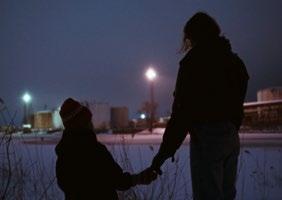

FLESH, BLOOD, EVEN A HEART
Drama, 90 min, Latvia
Scriptwriter & director: Alise Zariņa
Director of photography: Mārtiņš
Jurevics
Production designer: Juris Žukovskis
Editor: Armands Začs
Sound designer: Matīss Krišjānis
Composer: Oskars Jansons
Costume designer: Ance Beinaroviča
Makeup designer: Emīlija Eglīte
Casting by Beatrise Zaķe, Laik/A Casting
Cast: Ieva Segliņa, Gatis Maliks, Leonarda Kļaviņa-Ķestere, Ērika Vilisone, Eduards Johansons, Januss Johansons, Kate Oliņa
Producers: Alise Rogule, Roberts Vinovskis
Associate producer: Alise Zariņa
Produced by Mima Films

Ieva Segliņa plays the leading character Liv.


STARTING a Movement
Director Eeva Mägi, premiering
her film Mo
Papa at PÖFF’s Critics’ Picks programme, talks about Estonia’s answer to the famous Dogma movement.
By Andrei Liimets Photos by Sohvi Viik-Kalluste
Your previous film Mo Mamma was a very personal story, based on your own relationships with your mother and grandmother. Mo Papa, apart from the generational themes, has little in common with its predecessor. Where does the story stem from?
Mo Papa doesn’t have the same kind of personal background — it’s not about my father or family relationships. With Mo Mamma, the idea of a trilogy emerged — a series of differently made films, from which the Mo movement has now grown. I started planning an experimental film and was reading about Ancient Greek mythology, Kronos and Uranus — the father killing his sons out of fear they would kill him. That led me to look into different cases in Estonia where either a father had killed a son or a son had killed his father. I found an article about a boy who had killed his father “because of poor upbringing.”
I started researching why things like this happen — spoke with a police investigator, an acquaintance from the prosecutor’s office. It’s easy to condemn in such situations, but very difficult to understand what’s really going on. That’s how I arrived at the story of Mo Papa, where a convicted person is stuck in a cycle of trauma he can’t escape. Things just keep happening, and it seems easier for society to simply eliminate someone like that.
A key aspect of the Mo movement is that nothing is written down — that gives the freedom for the story to grow organically. I heard a story from an acquaintance: his mafia-connected father was killed, his mother committed suicide, and eventually, a major mafia figure raised him — carrying the guilt until his death, believing it was all his fault. That led to the creation of the character Eugen — someone who was placed in an orphanage at a young age to later discover he has a
brother, feels like he missed out on something, longs for understanding and love, but ends up doing something very reckless.
We visited the Tallinn prison multiple times with lead actor Jarmo Reha. I was afraid the story would be too grim, too unrealistic. But to them, it felt very believable. We started adding more, because in that trauma cycle, things just keep piling on. For example, you attack someone in prison because you don’t know how else to express your emotions — you don’t know any other way.
Jarmo lived in the character the entire time. He only had a basic phone, let us film in his home, did the kinds of odd jobs Eugen does in the film — at a moving company, shovelling snow, working at a funeral home. It’s common to get out of prison and have nowhere to live or work. You start from zero. It’s a very difficult return.
In the film, the titular papa ends up fading into the background. Was that the original plan?
I wanted to intertwine different stories. I’ve heard many times about fathers walking past their children on the street, not speaking to them. Often there’s no great tragedy involved — they just don’t take any responsibility. I don’t know why, but there are many fathers locked in their own lives and mindset that nothing can change. They just coast through life without taking responsibility for their children or seeking resolution — even though everyone is hurting.
At the same time, you don’t portray the father as a cartoonish villain. He is just passive.
I don’t think he’s bad. It’s unfortunately typical in such cases — fathers who just can’t look their children in the eye.
DIRECTOR

You have a background in law and have seen the justice system up close. How much do you believe prisons rehabilitate people?
I don’t think they rehabilitate at all. Imprisonment should be used less, because it doesn’t change anything. Of course, there are some people who are extremely violent or maniacal and need to be separated from society, but most problems start elsewhere. We should be solving those problems and helping people — not locking them up. Thankfully, more services are being offered now. But people still love the idea of punishment — the first reaction is always to send the guilty to prison. Unfortunately, that doesn’t change anything.
What does Eugen lack the most? Is it family support or help from the state?
Everything starts with family. He was given away — his parents didn’t raise him. Missing out on parental love is incredibly hard to compensate for, even if orphanages do good work. Some kids come out of the system and manage fine, but Eugen is trapped in this trauma cycle. No one wants to give you unconditional love unless you’re family. That creates a loop of selfblame and hatred. You constantly feel the lack of something. That’s when irrational behaviour starts — you take out your need for love on others, replicate the same behaviours. It pulls you into a strong centrifuge that’s very hard to escape. But you can, if you’re surrounded by understanding.
To me, the most beautiful line in the film is when Stina asks, “What’s the most beautiful thing someone’s said to you?” and Eugen replies, “That it’s not your fault.” It’s very hard to be freed from guilt — even prison officers told us that the media tends to label ex-prisoners, writes stories about how things aren’t safe anymore after someone is released.
There’s a scene between Eugen and Stina involving a bug that crawls on a shoulder. Was that improvised?
Completely random! Often, we start filming knowing the situation, but not what will happen. Sometimes we
MO PAPA
Drama, 88 min
Director: Eeva Mägi
Cinematographer: Sten-Johan Lill
Cast: Jarmo Reha, Rednar Annus, Ester Kuntu, Paul Abiline
Editor: Jette-Krõõt Keedus
Sound Designer and Composer: Tanel Kadalipp
Production Designer: Allan Appelberg
Costume Designer: Ulvi Tiit
Make up Designer: Liisi Põllumaa
Producer: Sten-Johan Lill, Eeva Mägi
Produced by Kinosaurus Film

search for half an hour, saying lines, and then suddenly something clicks — the whole crew knows immediately that something is happening. That’s the divine creative impulse — you can’t force it. You have to wait through the chaos and not interfere, even though it’s tempting. Directors fear chaos, but I think the best moments come when you don’t know exactly what you’re doing and let it unfold.
In that scene, a spider fell on the actor, and everyone immediately knew what to do.
methods.
You’re almost like a documentarian of fiction. Interestingly, when it comes to documentaries, I’m the opposite — I can’t just observe. I always think: nothing happens by chance.
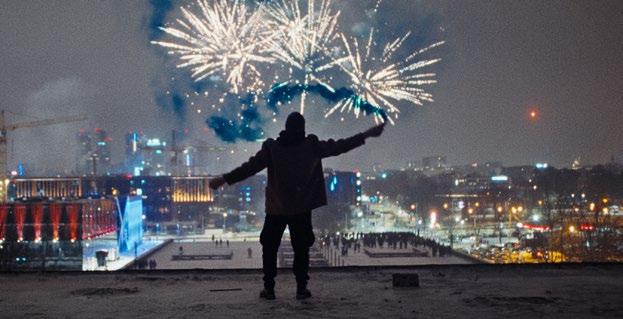
Mo Papa was filmed with a small crew on real locations using guerrilla-style

Mo Papa rests heavily on Jarmo Reha’s shoulders. Why did you choose him for the role?
He’s a friend, and it all just happened naturally. We were sitting in a wine bar in early December, had just received a rejection on a funding application, and suddenly this film idea started rolling. I had no doubt who should play the lead — he was perfect for it. And the method suits him. Going forward, I’d like to make films without fixed roles like director, cinematographer, or production designer — instead, everyone is a co-author. We go wherever the road takes us. It’s a big collective creation. I’m so grateful to them — we had no money; this was made with very few resources.
Mo Mamma was also born out of a rejected funding application and was made on a small budget. For some, that would be discouraging, but for you, it’s become a series. How so?
It started with Mo Mamma, then came the idea for Mo Papa, then the trilogy, and now it’s become a movement. Mo Amor is finished, and Mo Hunt has been filmed. Life itself is the driving force — I haven’t set limits, just let creativity flow. For a long time, I was haunted by Werewolf, a film that didn’t get funding. Now I’m grateful for every rejection — otherwise, I might be sitting in some big production company waiting around. It’s so easy to get sucked into the machinery that pulls you away from the creative core. Every change needs approval from so many people. You start thinking that there’s no other way. I don’t even know who’s on set for big films anymore — our team is so small.
Sounds like an Estonian Dogma 95. What is the Mo movement all about?
It’s similar in some ways. This year in Cannes, young Danish filmmakers launched Dogma 25 — a counter-movement to large, expensive, long-development projects that often don’t justify the cost. I wouldn’t say
You do have an exceptionally talented cinematographer.
Sten-Johan Lill is amazingly talented, and his ability to manage in scarce conditions is impressive. The key is in that scarcity. I’m thinking about writing a Mo Manifesto. We don’t have a written script, but that doesn’t mean there’s no script. Written isn’t the only form — a script can be an idea that grows. I always have the story in my head. The more organically it grows, the stronger it becomes. If I write something down, it gets stuck there — and I start approaching it differently. Generally, we also don’t use makeup, although the hairstyle in Mo Papa was done by Liisi Põllumaa.
This approach also limits the kinds of stories you can tell. Period dramas or sci-fi would be difficult unless you go completely abstract.
True. None of us have assistants. Everyone is responsible for their own field. The expectation is that everyone on set watches the monitor. We review all the footage together every night. We don’t have long project-based development. The way funding is given to films has become kind of terrifying. These massive applications, psychological analyses of characters — it pulls you away from creativity.
Directors fear chaos, but I think the best moments come when you don’t know exactly what you’re doing and let it unfold .
Mo Papa rests heavily on Jarmo Reha’s shoulders.
Mo Papa looks much worse than a 2-million-euro film. Our budget ended up being 80,000.
DIRECTOR

You said that limitations have propelled you for ward. Would you even want to work with a bigger budget?
It’s not so much that limitations have propelled me forward — it’s the rejections. I haven’t tried to align myself with the funding criteria; I’ve let the creative process flow freely. Of course, I’d like to have some money, but I actually think that current budgets — and now all the producers will probably hate me — are too big. You can make things more cheaply; the whole machinery around production is too large and unnecessary. It would be better to give smaller sums to more films.
But on the other hand, directors often live hand to mouth. From that perspective, it seems there isn’t enough money in film. Yes, because those big budgets don’t reach the cre ative core. Directors still get very little. The mas sive production machine eats it all up. The equip ment is very expensive, and it comes with a huge crew. We, on the other hand, always film using natural light.
Even Netflix and streaming platforms orig inally came with the idea that Hollywood is wasteful and films can be made more cheaply. But in reality, the technical quality has dropped, the films often look the same, flagship productions still have huge bud gets, and there hasn’t really been a new level of quality or huge public interest. Doing things differently is also extremely uncomfortable. For example, with Mo Papa we shot outdoors in –26°C. We had to take breaks because Sten-Johan couldn’t pull the focus anymore — his hands were too cold. On a regular set, there would be a heated trailer and so on. A typical New Year’s Eve fireworks shot would be planned — they’d blow everything up just for the film, and stage a big crowd scene. We just decided to shoot, instead of partying, on New Year’s Eve. We were in the right place at the right time. All the locations are real, and we use guerrilla methods. As the saying
goes: it’s easier to ask for forgiveness afterwards than to ask for permission beforehand. (laughs — AL)
What’s next for the Mo movement? Two films are already in the can. Is there a common thread between them?


They’re all completely different. We’re currently Mo Amor. It’s a fairy tale, a chamber drama about a trans man who has kept it secret from his exes and invites them to a summer house to come out and ask for forgiveis about a theatre director and a burned-out ballerina — a story of suppressing pain, but also of finding meaning through it. was generally well received but reached very few viewers at the domestic box office. The themes you describe now might be even more difficult for audiences. How much do you think about your audience — or are you more focused on festivals?
I think a lot about the audience. I always have an abstract viewer in mind. I don’t believe in dividing films into “festival films” and then “light entertainment” that people enjoy. You have to reach your audience. Wider marketing would require a budget — and we don’t have that. But I could resonate BF
EEVA MÄGI is an Estonian writer and director working in both fiction and documentaries. Her shorts Lem(2017) and The Weight of All the Beauty (2019) received international recognition, with the latter being longlisted for the Oscars. Her debut feature (2023) garnered a jury mention at the Tallinn Black Nights Film Festival. Mägi has received several awards, including the Estonian Cultural Endowment’s Young Filmmaker Award. Mo Papa (2024) is her second feature.
Mo Hunt, the fourth film of Momovement was shot this summer.

IDA HUB
EMERGING HOTSPOT FOR BOLD FILM INNOVATION AND PRODUCTION
In northeastern Estonia, Ida-Viru County is quietly reinventing itself - transforming from an industrial heartland into one of the Baltic region’s most intriguing creative frontiers.
By Teet Kuusmik
At the center of this transformation stand two key forces: the Viru Film Fund and the IDA Hub Film and Multimedia Innovation Centre. Together, they form the backbone of a creative ecosystem that combines funding, infrastructure, and innovation.
The Viru Film Fund, managed by the Ida-Viru Enterprise Centre (IVEK), offers up to 40% cash rebates for productions filmed in the region. With no artistic restrictions and no minimum spend, it has earned a reputation as one of the most flexible and filmmaker-friendly incentive schemes in Northern Europe. This approach has already attracted international productions such as The Agency and The Swedish Torpedo, while supporting homegrown titles like Mud on

FUNDS
Your Face (Taska Film) and At Your Service (Stellar Film).
The rare concept of IDA Hub film innovation center unites a modern space for film production, skilled local production support, and technology-driven startup innovation. Behind this concept stand three partners: Ida-Viru Investment Agency, Tehnopol Science and Business Park, and Ida-Viru Enterprise Center.
Ida-Viru Investment Agency (IVIA) is developing the largest studio complex in the Nordics, due for completion in early autumn 2026. The facility will feature two large sound stages, 1,200 m² and 2,000 m², alongside post-production suites, workshops, offices, and full on-site support. Designed to meet both domestic and international production standards, the complex aims to offer filmmakers a
complete, cost-efficient alternative within Northern Europe. To date, 50% of the construction work has been completed, and the construction company is moving ahead of schedule.
Film and Multimedia Accelerator, powered by Tehnopol, which offers a strong and practical journey, from hackathons and bootcamps to acceleration and growth, helping teams with bold ideas reach market readiness and attract investment. Each team is supported by a dedicated lead mentor, a seven-part training program, and access to community events and top industry experts. The accelerator focuses on early-stage tech startups developing tools for the next generation of storytelling - from XR and animation to AI-driven production and post-production innovation. To date, 11 teams have joined the accelerator, and the most promising ones will pitch their solutions on the stage of PÖFF Industry.
Ida-Viru Enterprise Centre (IVEK) runs the Film Industry Incubation Programme, a hands-on initiative for professionals and entrepreneurs looking to enter the audiovisual sector. Participants receive practical training, work with a mentor from the industry, and get guidance from a business consultant, helping them build industry connections and transition into film and TV production. The programme focuses on essential behind-the-scenes roles: from logistics and photography to hair and makeup and set construction.
Together, these initiatives are turning Ida-Viru into a full-spectrum creative region, one where stories are imagined, produced, and brought to life. Backed by the EU Just Transition Fund, this evolution represents more than cultural growth; it’s a blueprint for regional renewal, where creativity and innovation build the foundations of a more resilient future for northeastern Estonia. BF
by
Photos
IVIA Behind the Ida Hub concept stand three partners: Ida-Viru Investment Agency, Tehnopol Science and Business Park, and Ida-Viru Enterprise Center.
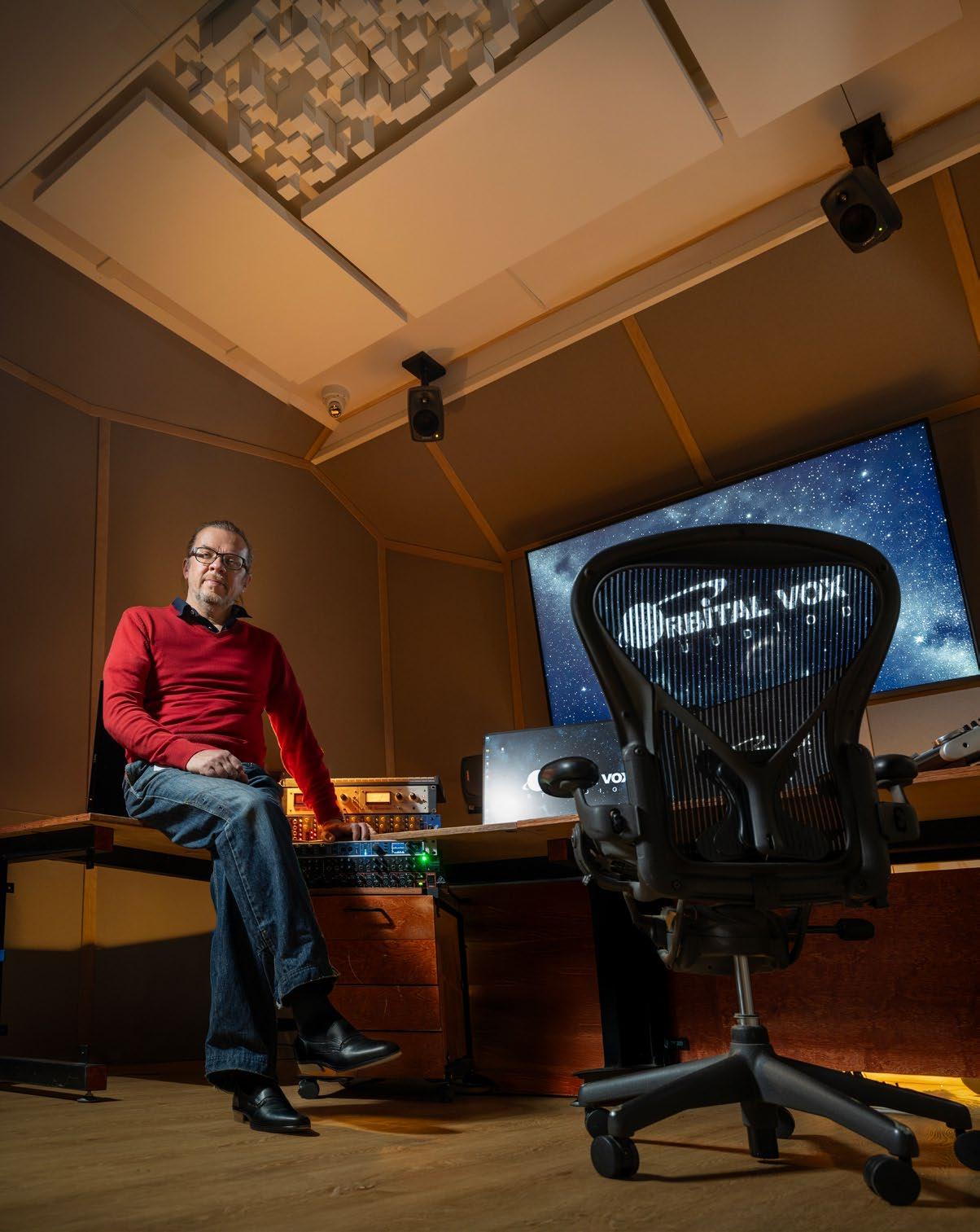

E�ERY SOUND T� LLS A STORY
Orbital Vox Studios has been part of Estonia’s sound and post-production scene for over thirty years. What started as a small home setup has recently evolved into a new chapter – a modern studio where technology supports creativity more smoothly than before. Its founder, Uku Toomet, describes how a personal passion has developed into a lifelong project – and what motivates the team to keep moving forward.
By Eda Koppel Photos by Viktor Koshkin
How did Orbital Vox Studios begin, and how has it evolved? It started from a simple wish to record my own music. Professional studios were too expensive, and friends often weren’t happy with their recordings. I used a Soviet cassette deck, a few microphones, and a small mixer. The sound quality was rough, but the spirit was there.
Later, I got a job at Estonian Public Broadcasting, where I worked with many local artists and learned a lot about recording and mixing. At the same time, I continued working with underground musicians in my home studio. Step by step, I bought better equipment, and the studio gradually became more professional. I named it
Orbital Vox – from the band Orbital and the Latin word vox, meaning “voice.”
Today, we are a team of six plus freelancers, working on commercials, dubbing, film sound, and colour grading. I manage the studio and teach film post-production at the Baltic Film and Media School.
What have been the key milestones in Orbital Vox’s journey?
The first was moving from my bedroom to a real studio, 30 years ago. The second was working on international projects – our first was dubbing Pixar’s The Incredibles, which taught us a great deal about professional workflows. The third significant step was building our new studio based on modern standards. The new space turned out even better than we had hoped.
POST-PRODUCTION
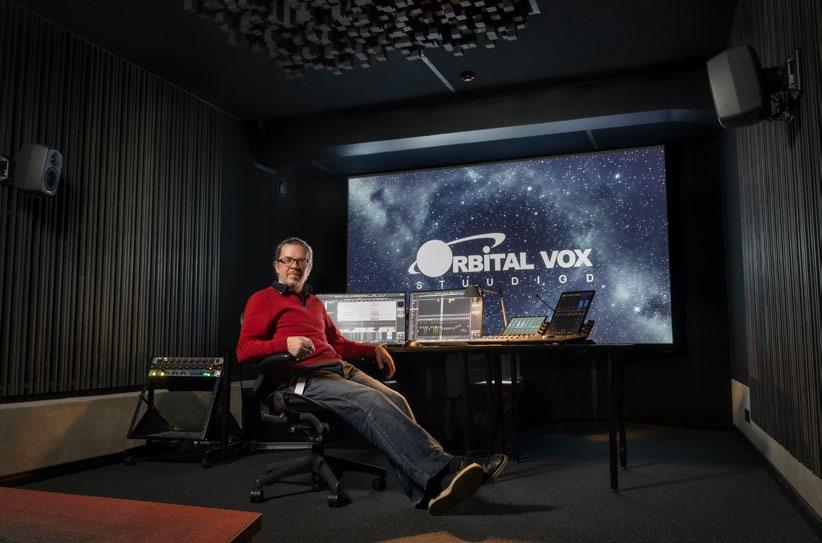
What inspired the move to your new studio, and what makes it special?
We had long outgrown our old space, and when the building was set for demolition, we took the opportunity to move. Eventually, we found a good location in the city centre – an old print factory with thick limestone walls, ideal for acoustics. Now we have floating rooms with high ceilings, modern speakers, proper ventilation, and even a small kitchen and lounge area. All rooms are interconnected, allowing us to switch easily between recording and mixing. The studio has been built on proven professional principles, making it one of the most refined and distinctive in the region.
The design is simple and calming –natural oak, soft colours, and good lighting. It brings a sense of ease that offsets the studio’s high-tech nature.
How has the new space changed your work?
Better acoustics and a well-designed environment help improve focus, and we can now achieve the desired results much faster. The workflow has become more seamless, and the atmosphere feels more inspiring. Inside the walls, there are about 10 kilometres of cables – but ultimately, it’s the small visible details on the surface that shape the overall impression of the space.
What were the main challenges during the move?
The biggest challenge was maintaining continuous work. For some time, we op-
erated two studios simultaneously. Moving all the servers and IT systems was also a major task, but everything went smoothly thanks to careful planning and teamwork.
How does technology shape your work, and what kind of new equipment do you use in the studio?
Our film mixing room has cinema-grade speakers and a large acoustically transparent projection screen. One room follows Dolby Atmos specifications, while the others use 7.1 and 5.1 systems, enabling several projects to run simultaneously. The studios will serve us well for our own projects, but are also available for outside productions that bring their own sound engineer. The cinematic mixing room, in particular, is unique in the area and has attracted considerable interest.
Technology is essential, but it’s still only a tool. What matters most is how it supports the creative process. Our sound directors have a strong musical sense and value projects that allow artistic freedom.
The studio has always been a place where creativity and technology meet –where ideas take shape. Creativity is natural and harder to control, while the technical side can be studied and improved. Working in a studio means balancing these two worlds, even though the technical side often takes the lead.
The real goal is to understand the creator and help express their vision in a form ready for playback. The path to-
ORBITAL VOX’S STUDIOS:
A - 7.1 Cinematic Mixing
B - 5.1 Editing and Mixing
C - 7.4.2 Editing and Mixing of Immersive Sound
D - Colour Grading with 5.1 Sound Mixing
E - 5.1 Sound Editing and Mixing
MIC BOOTHS:
A - 13 m² B - 6 m² C - 6 m²
SERVICES:
Cinematic and TV Mixing
Editing, ADR, and Sound Design
Dubbing, Commercials,
Voice Talent Roster
Colour Grading
Post-Production Supervising
Cinema and TV Deliverables
ward mastery never truly ends. With good tools and smooth workflows, ideas can flow more easily into reality, leaving more time and energy for the artistic part of the work.
Which projects stand out in Orbital Vox’s history?
There have been many interesting ones –film sound design, ADR, and museum installations. We’ve worked for directors like Christopher Nolan, Ilmar Raag, Priit Pärn and many others. Each project has been a worthwhile experience.
What are your plans for the next few years?
We want to work on more films, explore new sound formats, and continue improving. The main goal is to keep learning and stay curious.
What motivates you personally?
It is rewarding to work with creative people and help bring their ideas to life. My main task is to create a working environment where people feel supported and inspired.
What advice would you give to young sound designers or filmmakers?
Do what you believe in. Learn from others, but trust your own direction. Try many things, be brave with new ideas, and never stop learning. Creativity doesn’t fit into a strict schedule.
The world is never complete – keep inventing, questioning, and enjoying what you do. BF


SOUTH ESTONIA Made for Stories
South Estonia feels like a secret place made for stories — cinematic, grounded, and emotionally honest. It’s a region where nature, history, and people intertwine quietly yet powerfully.
By Signe Somelar-Erikson

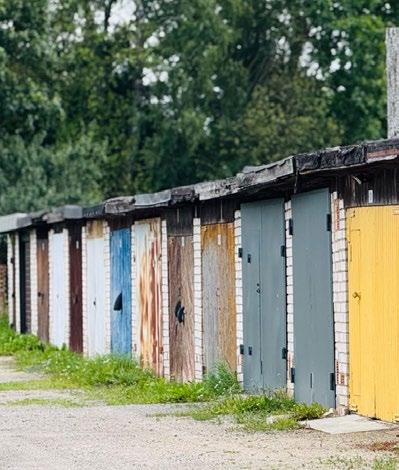

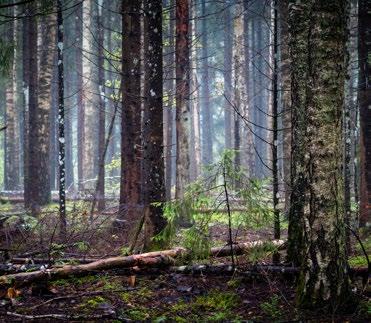
WHERE PLACES TELL STORIES
South Estonia does not announce itself very loudly. It reveals its character in slow layers – through mist rising over bogs, deep forests where silence has weight, townscapes where every corner seems to hold a story, and villages where time moves differently.
Tartu itself offers a visual timeline – medieval, classicist, wooden and post-Soviet layers coexisting within one city. Within an hour’s drive, the scene shifts to Lake Peipsi, South Estonian forests and wetlands, and villages where living traditions shape daily life - from the Old Believers’ communities to the distinctive culture of Setomaa.
“It’s the compact diversity that makes South Estonia special,” says location scout Markus Bensch ( The Bourne Ultimatum , V for Vendetta ). “You can move from Soviet modernism to untouched na -
Photos by Lori Balton, Markus Bensch and Heikki Leis



“Coming back to Estonia felt like coming home. Everything here feels cared for, loved — there’s a quiet harmony between people and place.”
Lori Balton
ture in twenty minutes. That’s production gold.”
This diversity has already inspired internationally recognised films. The Oscar-nominated documentary Smoke Sauna Sisterhood captured the deep-rooted smoke sauna spirituality in Võrumaa. The feature film
The Black Hole, partly shot in Tartu’s post-Soviet Annelinn district, turns the everyday reality of housing blocks and garages into a stage where human longing meets the cosmic and surreal. Estonia’s 2024 Oscar entry 8 Views of Lake Biwa, filmed on the shores of Lake Peipus, combines Japanese poetic sensibility with the beauty of South Estonian landscapes.
THROUGH THE SCOUTS’ EYES
In 2023 and 2025, world-renowned location scouts Markus Bensch (Germany) and Lori Balton (USA) visited South Estonia during location tours organised by the Tartu Film Fund. Both described the region as “compact - yet visually rich, a cinematic secret waiting to be discovered.”
“Even a morning walk through Tartu turns into a scouting trip. Every bridge, every park, every street corner could be a scene.”
Markus Bensch
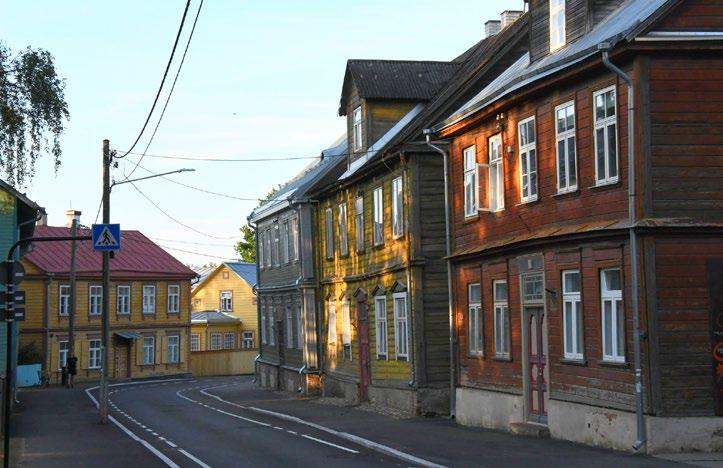
Their journeys through Valga, Karula National Park, Setomaa, the sandstone walls of Härma, the cobblestone streets and wooden quarters of Tartu and the Old Believers’ villages along Lake Peipus left a lasting impression. South Estonia, they say, can stand in for many worlds — or simply be itself.
At the heart of this creative ecosystem is the Tartu Film Fund, established in 2015 and now the largest regional film fund in Estonia. It supports both local and international productions and has become a trusted partner for filmmakers drawn to the region’s atmosphere and authenticity.
Every two years, the fund hosts Location Session Tartu, a professional networking event that brings together filmmakers and scouts to explore South Estonia’s potential. It reflects a simple belief: that great locations – and great stories – begin with an attentive eye.
As Lori Balton puts it, “Tartu’s energy is gentle but alive – creative, walkable, human in scale. That balance is rare.” BF
SOUTH ESTONIA
• Support intensity: Up to 35%
• Supported productions: 50+
• Annual budget: €150,000
• Application rounds: March and October
• Eligibility: Estonian co-producer required
Find your story in South Estonia. tartufilmfund.ee

Markus Bensch and Lori Balton
EVENT

25 Still Still
Fearless, Young
The first head of JustFilm, Elen Lotman, and current director Mikk Granström talk about the festival’s journey, its fearless identity, and the next generation set to carry it forward.
Photo by Aron Urb
Just Film is already 25! When I first met you, you were an active high school student from the German Gymnasium, organising a school film festival and asking for Just Film tickets as a prize for your competition program. Now you are the CEO of PÖFF, which has become an A-category festival. What would you say to that high school kid I met years ago?
First of all, I’m truly glad that you are the one doing this interview, the founder of Just Film and the person who started it all. Twenty-five years is a long time for any festival, and it’s almost unbelievable to think how far we’ve come since those early days. I still vividly remember our first meeting a million years ago. Those were wild and wonderful times; it felt almost mystical to organise a film festival at the German Gymnasium. The idea really took root: young people loved creating their own festival and screening their own films. For a brief moment each year, our school turned into a little film school, and that was just amazing. Looking back now, I’m still surprised that we were allowed to do all
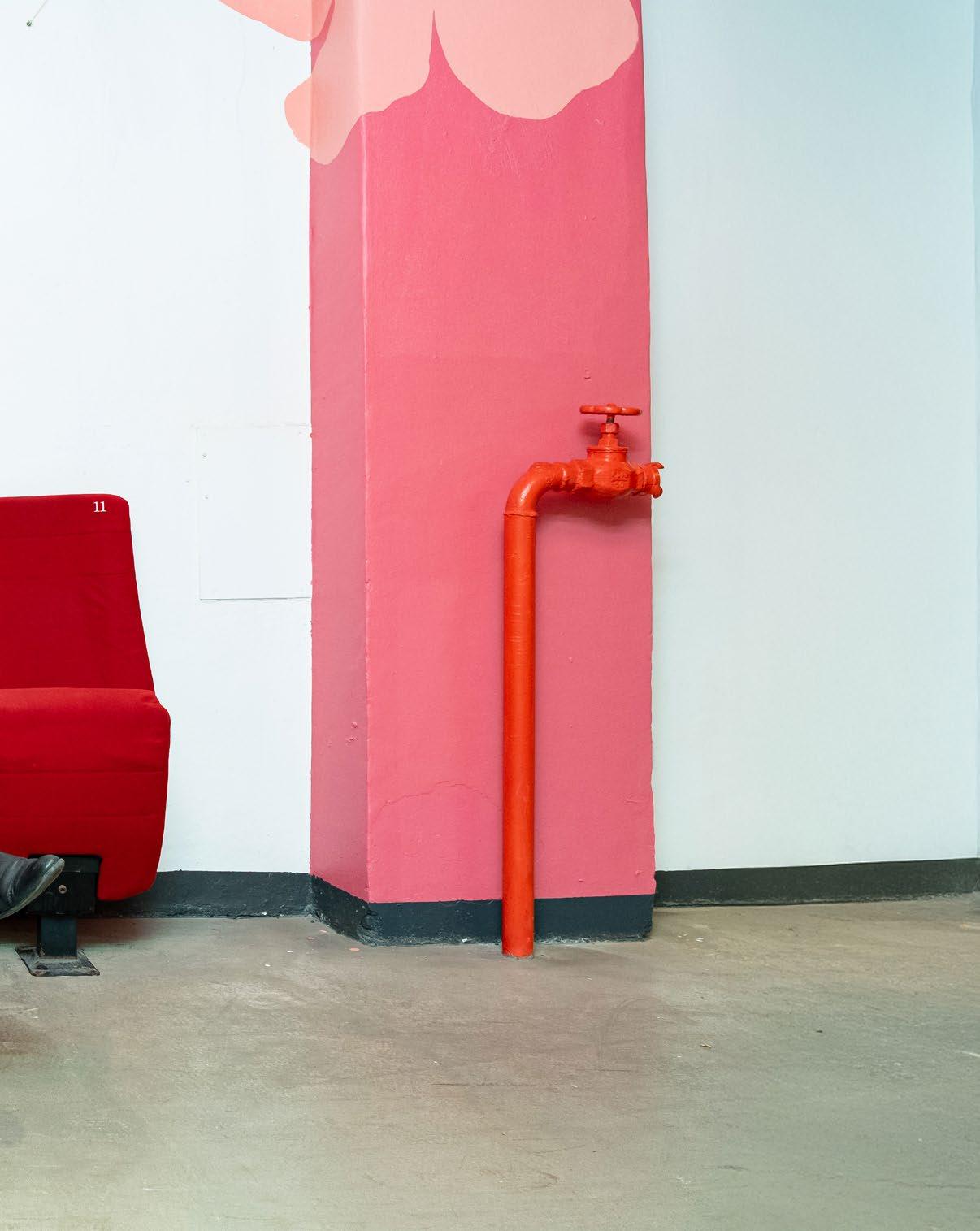
that. But we were, and for that, I’ll always be grateful to the teachers who trusted us. Even back then, my dream was to one day work for PÖFF. I just never imagined it would happen so soon, thanks to you. It has truly been a journey worthy of a film script, full of twists, turns, and unexpected scenes. If I could say something to that high school version of myself, I’d probably tell him to be a little calmer, to listen to other people more. Classic advice, I know. But at the same time, that youthful recklessness, that beautiful kind of ignorance, is what keeps you moving forward.

When I invited you to run Just Film, you were very young. I was still a film student when I started. Should the director of a youth film festival be a young person?
That’s a really good question, and one I’ve actually thought about a lot. Under your leadership, Just Film was bold, youthful, and full of energy. When I took over, I was about the same age you were when you started, and I immediately embraced that same philosophy: that Just Film should be a bit rebellious by nature.
We’ve always believed that if there’s a topic or a film that matters – something we truly feel should be shown – we do so, regardless of the circumstances. I believe that spirit has remained with Just Film throughout its 25-year history. When we receive international feedback, people often highlight the courage, freshness, and honesty of the programme. Filmmakers also take note. That’s what sets Just Film apart from many other youth and children’s film festivals across Europe. There’s a certain energy, a youthful fearlessness that permeates everything we do. It’s part of our DNA, and I don’t think it should ever change. Interestingly, when I attend other European youth film festivals at 38, I often find I am still the youngest festival director in the room. This reflects that, in many countries, these festivals are run by much older individuals, which isn’t necessarily wrong; it’s just a different cultural and institutional context. However, the fact remains: if Just Film wants to stay true to its original
We’ve always believed that if there’s a topic or a film that matters – something we truly feel should be shown – we do so, regardless of the circumstances.
ABOVE: Just Film opening in 2024.
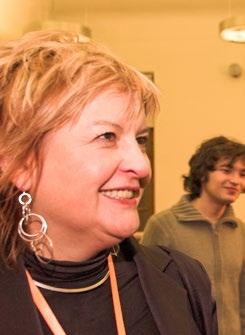
spirit, it must also keep passing the torch. The festival has now reached a point where I feel prepared to delegate more creative responsibility to the younger generation. Fortunately, we already have a strong young programming team emerging, ready to lead Just Film into its next chapter.
How do you think young people’s film viewing habits have evolved during the time you have been running the festival?
Young people today still go to the cinema, but they also watch films everywhere: on streaming platforms, on their phones, laptops, etc. Their “film world” is much bigger and more accessible than it was for us growing
up. Their horizons are broader, their taste is more diverse, and they are much more aware and demanding when it comes to quality. You can’t underestimate a young audience. They recognise authenticity instantly; they can tell when a story is honest and when it’s not. What’s beautiful is that, even though they live in a fully digital age, they haven’t abandoned the cinema experience. Watching a film together on the big screen still matters. People are social creatures by nature; they come to the cinema not only to see a movie but to feel something collectively, to laugh, cry, and think together. That sense of shared experience remains powerful. At Just Film, we’ve seen this very clearly. When the right film meets the right audience, the reaction in the cinema hall can be electric. In a way, young viewers are teaching us how to evolve, how to curate, communicate, and create in a world where boundaries between cinema, social media, and learning are constantly shifting. And that, to me, is incredibly inspiring.
You recently defended your PhD on teaching strategies. Does this topic relate to your experience at the festival?
I came to this subject quite naturally. I was often invited to schools to talk about films and to teach, but I quickly realised that I actually didn’t know how to teach; I lacked the right tools or understanding. So, I decided to address that. I returned to university to

bridges between the worlds of education and film, and I believe some of the most meaningful conversations today happen at this intersection.
What are your biggest lessons in teaching film?
There’s an old truth in learning: what’s learned quickly is also quickly forgotten. I always tell my students that it’s not so much about what we teach, but how. The how has become increasingly important, especially considering everything happening around us. Even when teaching film, we first need to understand what learning actually is and how it occurs. That has probably been my biggest lesson—realising that before you can teach film, you must first understand learning itself. Once we grasp that, teaching becomes a joy. And when we combine that understanding with the richness of cinematic expression, we can genuinely change the way students think, feel, and see the world. But one thought keeps coming to mind when I consider this question— from the Estonian psychologist Aaro Toomela, who once wrote: “A mouse put on a pair of trousers, sewed the rest into a rocket, and flew to the heart of the world.” He highlights that the funniest thing about that sentence is that you can imagine it. That perfectly illustrates how the human mind works—it’s more powerful than any machine ever built. We just need to learn how to use the incredible creative potential we already possess.

study pedagogy, then educational leadership, and later continued into a PhD programme, focusing on what learning truly is and how we can best support effective learning. In a way, film guided me along this path. Interestingly, everything I learned during my various studies has been extremely useful in running a festival. Managing an educational institution and leading a major cultural organisation like PÖFF have more in common than one might think: both are about people, motivation, creativity, and vision. This background has also been a great asset in organising Just Film. When I work with teachers and educators, I feel we’re speaking the same language. I understand their challenges much better because I’ve studied and experienced them myself. It has helped me build stronger

Estonia is a small country. The primary audience for any youth film festival is usually local viewers. Why would a youth film with international ambitions want to premiere at Just Film?
That’s a great question, and I believe the answer lies in visibility and connection. When a film premieres at Just Film, it immediately gains international visibility; many of the films shown here are discovered by programmers from other festivals. Just Film has become a recognised launchpad, a place from which films truly take flight. Having that international exposure at the start of a film’s journey can make a significant difference. Our Industry programme enhances this effect further. Due to its connection with PÖFF’s extensive Industry@Tallinn & Baltic Event platform, filmmakers
LEFT: The director of PÖFF Tiina Lokk and the first Head of Just Film Elen Lotman 2005.
Just Film audience in 2008.
RIGHT: Mikk Granström started as the Head of Just Film in 2006.
EVENT
who premiere here suddenly become part of a much larger professional network. Together, they form a bridge between youth cinema and the professional film sector, between future audiences and future filmmakers. When we discuss what makes Just Film special, this is undoubtedly one of the key elements. Our festival has established itself as a trendsetter in the international youth film scene. This year, for example, all the films in our competition programmes are premieres – a remarkable achievement that reflects the high level of trust filmmakers worldwide now place in Just Film. Many of these films later travel to other major European and global festivals, and each year, we host programmers from these festivals who visit specifically to discover new voices and stories. This is something we can genuinely be proud of; it is the result of 25 years of steady, meaningful growth. However, Just Film is also respected for another reason: our strong commitment to film education. Estonia is already renowned worldwide for its forward-thinking, robust education system, and this provides us with a solid platform to explore how cinema can support meaningful and effective learning.
How do you see the future of young people’s cinema habits, given the changes in the festival audience over the years?
It’s always difficult to predict the future, but I’ll try. People have predicted the death of cinema for decades: first with the rise of television, then with digital cinema, and later with the explosion of VOD platforms. There have been other moments like this in history. And yet, it’s quite amusing. Cinema still remains. It continues to evolve, but it doesn’t vanish. The truth is, if we actively work to keep the habit of going to the cinema alive, if we don’t undermine it ourselves or create “monsters” that aren’t truly there, then even AI cannot replace the magic of the big screen. There is something deeply human about watching a story un-
Just Film has reached a point where Mikk Granström feels prepared to delegate more responsibility to the younger generation.
fold together, in a dark room full of strangers, experiencing the same emotions at the same time. That experience is timeless. Regarding youth films, I believe their future is robust, perhaps stronger than ever. Young audiences are open-minded, emotionally intelligent, and globally connected. They seek stories that honestly reflect the world they live in. If filmmakers continue to tell these stories with authenticity and courage, young people will keep attending cinemas, because they will see themselves on screen. So yes, the world is changing, technology is progressing, but the need for stories remains. That’s why I am optimistic. Cinema, especially youth cinema, will always find a way to reinvent itself as long as we believe in it.
What are your ambitions for Just Film Festival?
There’s still a great deal to do and many opportunities ahead. One key focus is to strengthen our work in film education, exploring new, creative ways to connect learning and cinema, and supporting teachers with practical tools they can use in classrooms. I believe film has immense potential to inspire critical thinking, empathy, and creativity in young people, and we want to continue developing that aspect of the festival. At the same time, we aim to expand our Industry section, making Tallinn an even more prominent meeting point for professionals specialising in youth and children’s content. The more we can attract international filmmakers, producers, and educators to visit, the more visibility our festival and region will gain. We also plan to experiment with innovative ways to actively involve young audiences, not just as viewers but as co-creators, programmers, and storytellers. Their participation keeps Just Film lively, fresh, and relevant. So yes, there is still much to look forward to. As long as we remain curious, open, and connected to both our young audience and the international community, I believe the best years of Just Film are still ahead. BF
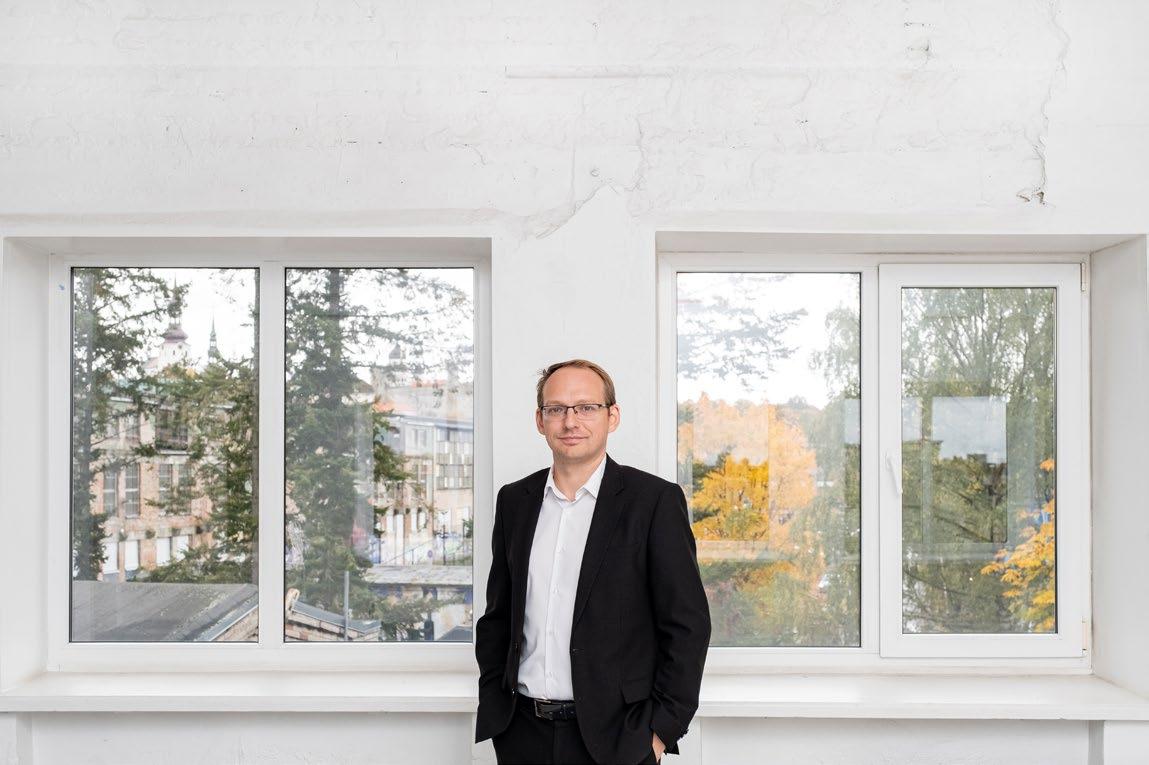
EMERGING HOTSPOT FOR BOLD FILM PRODUCTION IN THE NORDICS
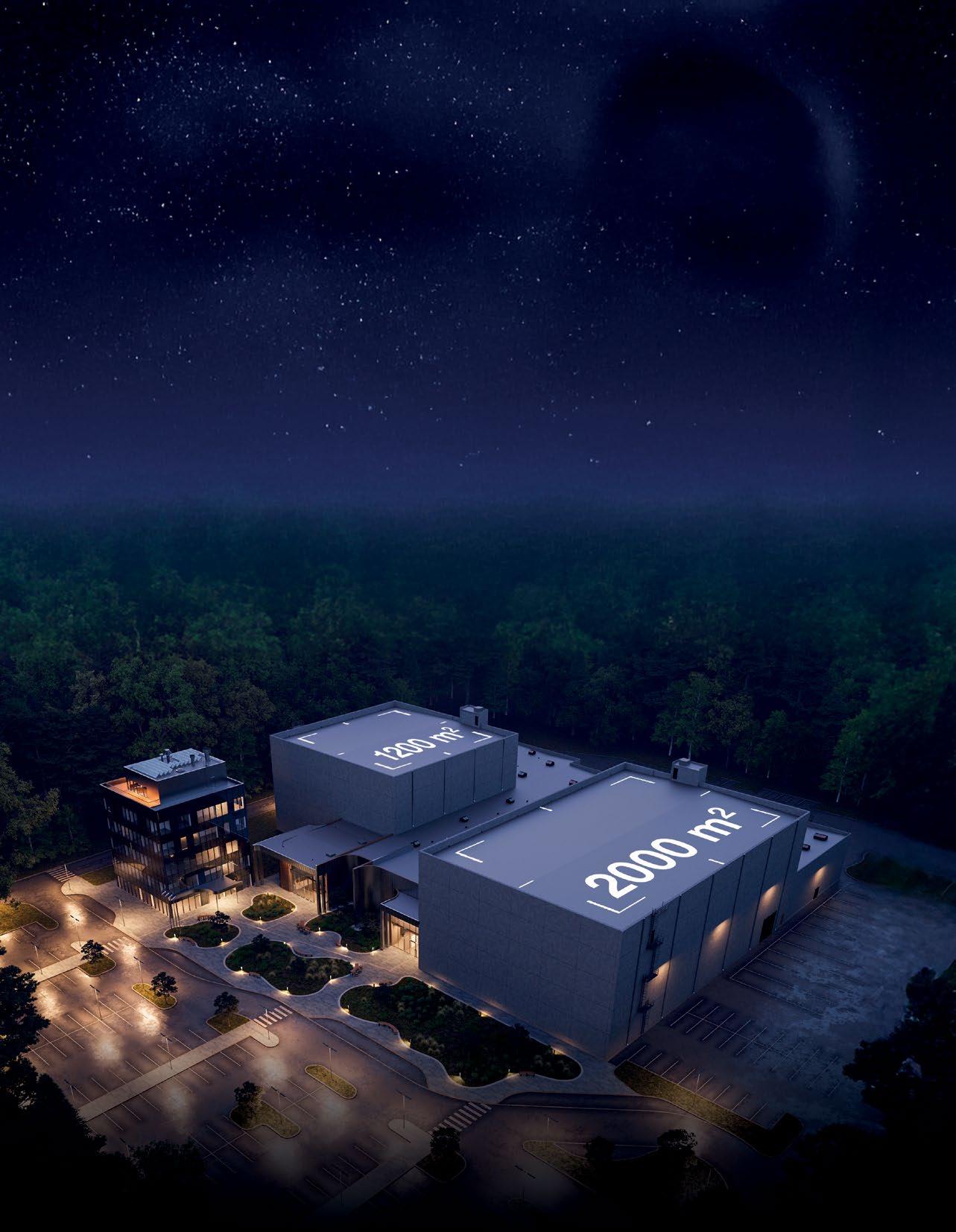

Multi-purpose studios opening Sept 2026 For film industry companies For film & multimedia tech startups


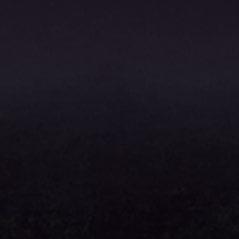

LEGEND

TO EXIST, Not to Perform
A celebrated figure in Lithuanian film and theatre, Juozas Budraitis has left a profound and lasting imprint on the country’s cultural landscape. Born in 1940, he rose to prominence in the latter half of the 20th century, gaining recognition both at home and abroad.
By Mintarė Varanavičiūtė
Over his life, he has played more than 120 roles and received numerous awards, including the Lithuanian National Prize for Culture and Arts (2013), the Silver Crane (2016), and the Golden Crane (2023).
Those familiar with his work often say that Budraitis’s gift lies in his quiet ability to reveal the inner life and emotional depth of his characters.
This year, at the Tallinn Black Nights Film Festival, Budraitis will be honored with a Lifetime Achievement Award. To mark the occasion, we share a conversation between Budraitis and his friend, philosopher and filmmaker Nerijus Milerius, who will present his documentary about the actor, Old Man’s Journeys, at the festival.

SOME OF THE MOST NOTABLE LITHUANIAN FILMS FEATURING JUOZAS BUDRAITIS:
• Nobody Wanted to Die (dir. V. Žalakevičius, 1965)
• Feelings (dir. A. Dausa, A. Grikevičius, 1968)
• June, the Beginning of Summer (dir. R. Vabalas, 1969)
• Saduto Tuto (dir. A. Grikevičius, 1974)
• The Homestead Empty Time (dir. A. Grikevičius, 1976)
• His Wife’s Confession (dir. A. Grikevičius, 1984)
• Our Father (dir. M. Ivaškevičius, 2010)
• Garden of Eden (dir. A. Puipa, 2015)
• Other Side of Silence (dir. A. Puipa, 2019)
• Cinephilia (dir. A. Puipa, 2021)
NM: You’re probably the only actor in Lithuania who never studied acting for theatre or film. That’s something that always intrigued me. How did it happen that you studied law and ended up in cinema? When did you realize you wanted to be an actor?
JB: At first, it was curiosity. I was drawn to that atmosphere, that kind of phantasmagoria that can’t be described in words – the things that happen on a film set. It wasn’t so much about wanting to act, but about wanting to breathe in that air, to feel the spirit of the set. And, of course, perhaps even more important was the need to be around someone like Vytautas Žalakevičius – a man from a completely different sphere, fascinating and magnetic even in his presence. When the film Nobody Wanted to Die began to take shape, that’s when the desire to express myself appeared. Since I hadn’t studied acting, I turned to self-observation. I would think: how would I feel if I found myself in the same situation? What would I bring out, and what would I hold back?
Photo by Mika Savičiūtė
LEGEND

NM: Although you didn’t study acting, you learned a lot from your surroundings. Your father worked with the blind, and your mother in a psychiatric hospital. Could you talk more about that?
JB: I think in life you don’t really learn, you experience. We’re so used to doing everything quickly, always rushing somewhere. Moments like touch, sensation, the birth of light – we often take these for granted. But when you focus on them, you experience so much more. Interacting with the blind immersed me in a deeper reflection on human presence and touch. Just watching them read Braille with their fingertips – you need such sensitivity to recognize the letters and read entire texts. And being in a psychiatric hospital, I observed people’s daily lives, their routines, their interactions. Entering someone’s world is always difficult, especially one so different from your own. Those experiences left a deep mark on my life and my work.
NM: You like to say that entering cinema happened almost by accident, that a classmate literally pushed you into it. What happened there?
JB: My friend and I had decided to check out some
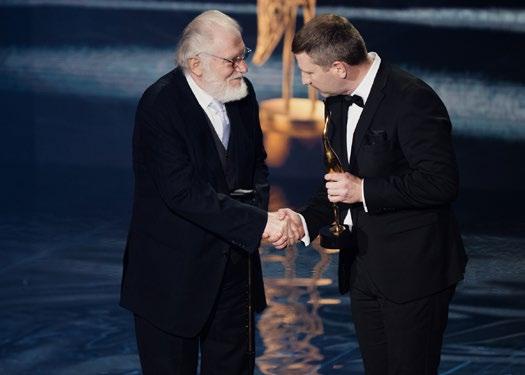

girls auditioning for a film. I was leaning a bit forward, and he, without thinking, pushed me. I stumbled over and ended up right in the middle of the room, in front of the girls. As I was thinking of how to get out of that situation, a woman’s voice called out: “Stand up, young man.” She asked if I wanted to try acting too. I said, “No, no, I don’t want to,” but she insisted I take her number. I forgot about that note, but later I found it tucked in my pants pocket and decided to see what she would say, which led to being offered the chance to spend the summer in Ignalina, filming the movie as one of the main character’s friends. “We’ll pay you,” she said. What could be better? Summer, lakes, Ignalina, and a little fun on set.
NM: Nobody Wanted to Die was the film that left the strongest impression on you. The director himself, Vytautas Žalakevičius, had a huge influence on your life. Would you say he was your director?
JB: Yes, I still consider him my director, even though he’s not here anymore.
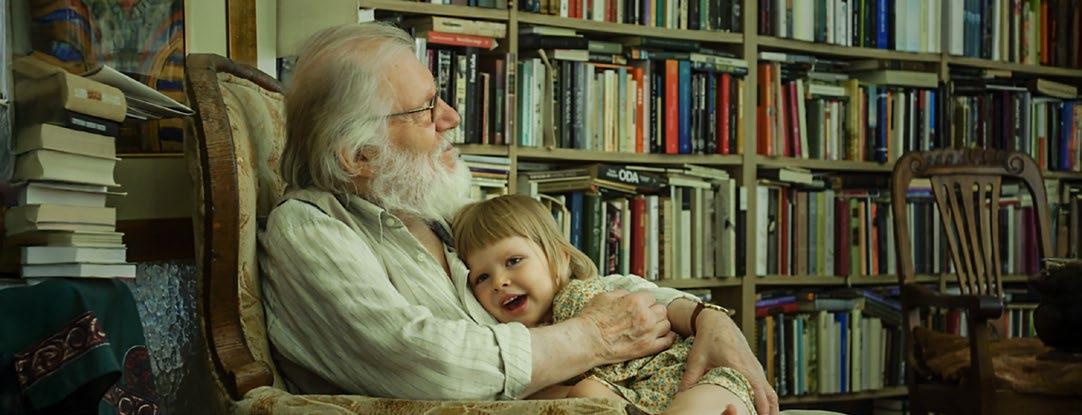
Still from the documentary Old Man’s Journeys. Juozas Budraitis around 1970.
Juozas Budraitis won the Golden Crane in 2023.
Juozas Budraitis in Nobody Wanted to Die
Photo by Andrius Zavadskis
Photo by AHOY

NM: What was so special about his working style?
In our documentary, you mentioned filming a very sensitive scene that made you cry, a moment where you felt you had crossed the line separating art from reality. Did he often demand complete commitment from his actors?
JB: He wanted truth – the real essence of a person, not just acting. I think cinema is the medium that can capture that kind of authenticity, the true core of a human being. In those moments, your whole inner world is

showing through your eyes, gestures, and voice. Žalakevičius didn’t want superficial realism, like delivering lines naturally or simply following a dialogue. He wanted the lines to carry a deeper message – a message that could come either from practiced techniques, as many actors rely on, or directly from your own being.
NM: You also acted a lot abroad. Which foreign directors did you connect with the most?
JB: Probably the Czech director Jan Schmidt. We were good friends until his passing.
NM: You appeared in his film The Lanfier Colony, back in 1969, is that right?
JB: Yes, that’s right. The film’s rehearsals were interesting. He asked me to play with two little sticks, to
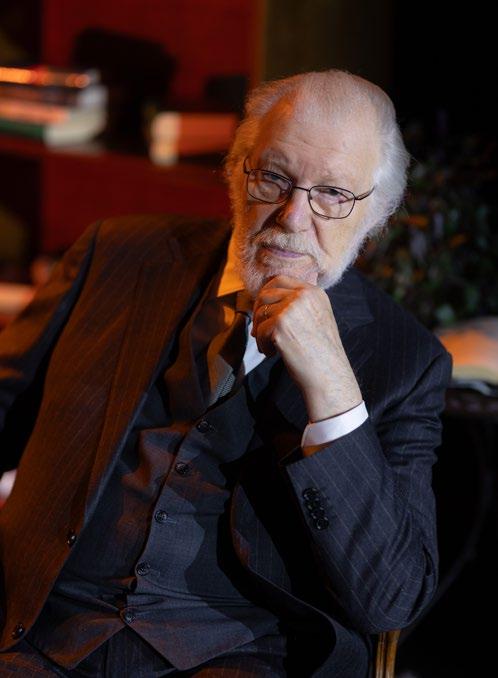
arrange them, just to see what I would do. Somehow, I managed to step out of my adult mindset and arrange them the way a child would. That simple act meant a lot to him. He valued genuine expression, which, I think, Antonioni later recognized when he saw the film. I wasn’t acting, I was existing.
NM: So, Michelangelo Antonioni saw you and wanted to invite you to his new project. But you weren’t allowed to go?
JB: There was a long story behind it. Letters had to be written to Goskino, and they came up with all sorts of reasons, asked for a script – Antonioni said he didn’t have one, it was in his head. A whole bureaucratic ceremony was created to prevent me from going. That kind of stream of lies can be very effective. Antonioni never made that film in the end, though I hear the script has been bought and someone plans to make it. I can’t wait to see it someday.
NM: It must feel strange to see actors in a film knowing you were meant to be there originally.
JB: I don’t think it will. I’ve really come to accept that what’s gone is gone – no need to dwell on it.
NM: At one point, you turned to directing yourself and made two short films. What did that profession give you that acting couldn’t?
JB: I’ve always been the kind of person who doesn’t quite know what he wants most – to paint, to make music, to write, or something else. I want everything. But nothing completely. Always on the surface. But directing... that was different. It was a way to express
by
Juozas Budraitis at his 85th birthday celebration this October.
Juozas Budraitis in his first play The Master Builder (1980).
Photo
Mika Savičiūtė
Photo by Andrius Zavadskis
LEGEND

myself through image and sound, where photography, music, and painting all come together. That’s what drew me in. Žalakevičius suggested I study and gave me a week to think.
NM: He was the head of that course, right?
JB: Yes. And when he proposed it, I thought: the master who created me is offering another element to complete my formation. That completion was this all-encompassing act, a true search for self. I didn’t hesitate – by the third day, I knew I would go. Of course, complications emerged later, because I wasn’t interested in the superficial. I was drawn to deeper themes, which weren’t appreciated then.
NM: As a film actor, you were also invited to theatre. That’s a completely different world –long rehearsals, constant practice. What did the stage give you?
JB: The stage gave me… self-torment. I struggled because I was inexperienced, untrained. I had to work hard to realize I was doing it wrong. Theatre is a different art – you need a different sensitivity, the ability
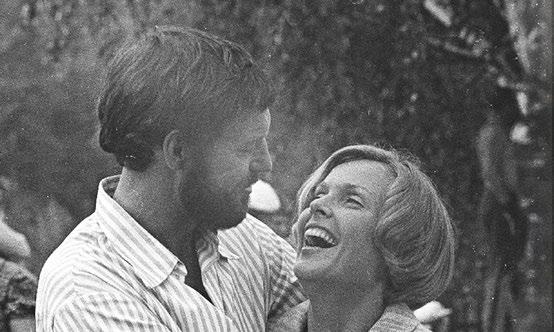
to communicate, articulate, project your voice, manage dialogue. You have to dare to open up, in a way. To dare to appear more foolish than you are. Because you always try to make yourself seem smarter. And then you deliver a line and sound ridiculous – the intonation is off, something just doesn’t land. In short, nine years of torment.
NM: Because you spent nine years at the National Kaunas Drama Theatre.
JB: Yes. But there was joy too – a kind of admiration for myself. Learning to recite three hours of Shakespeare without error, putting all the energy into it. Moments like that tie you to theatre. If you start young, it’s hard to imagine life without it. For someone who truly wants to be an artist, theatre is essential. My friend Regimantas Adomaitis truly wanted that –and he became a great actor. Mastered the stage perfectly, which didn’t hurt his film work either. For me, he’s definitely an example.
NM: When you think about your own inspirations, which actors from abroad have been examples for you?
JB: Jeremy Irons, Jack Nicholson, Gene Hackman. There are more, but those three are the most impressive.
NM: And what about them? For example, what is it about Jeremy Irons that attracts you the most?
JB: He matches my own closedness, that inner observation in silence. I think almost all his roles have that. I just watched one of his films the other day – a kind of action movie, lots of fighting. Irons was great, as always. I just keep wondering why he agreed to that role at all.

Selfie of Juozas Budraitis in Paris, 1979.
Regimantas Adomaitis and Eugenija Pleškytė while filming Saduto Tuto, photo by Juozas Budraitis.
Vytautas Žalakevičius with the Zenit camera of Juozas Budraitis, 1973.
NM: Sometimes people just want something different.
JB: That’s true. Once a director from Azerbaijan kept trying to persuade me to film there. I refused. They came with a whole team, kept offering more money. I said, “Don’t raise the price, I just don’t want to go, especially with a transfer.” But then they said my family could come too, swim in the Caspian Sea, live in a villa with full comfort. I thought, why am I being so selfish? Let my family enjoy it. So, I agreed. Maybe Jeremy Irons had similar circumstances.
NM: And which actresses have impressed you the most?
JB: At one time, Monica Vitti, also Giulietta Masina, Anna Magnani. From the modern ones – Meryl Streep.
NM: We’ve shown parts of the documentary Old Man’s Journeys, and one young directing student said he recognized you from The Queen’s Gambit.
JB: (Laughs) Just one scene…
NM: But how did that one scene come about? What was the experience like?
JB: I was amazed that they chose me based on a photo. I didn’t know the script, just the scene I was in. My English isn’t strong enough for a full conversation, but Scott Frank, the creator, was very attentive. We talked through an interpreter; it was a very pleasant conversation. What struck me the most was that he stayed by the camera the whole time. Nowadays, no one does that – everyone watches a monitor and passes instructions through an assistant. I wish it had lasted longer. Later, people called to congratulate me for the Netflix role. That surprised me.
NM: Juozas, here we are now among easels and paint tubes, and many people also associate you with a camera in your hand. How important are painting and photography to you?
(Juozas picks up a camera, starts photographing Nerijus. Asks him to adjust his pose.)
NM: Looks like that question was too simple for you (Laughs).
JB: When you don’t know what to do, sometimes you just take a brush and paint a bit. It’s like touch training, a kind of meditation. They say the tiniest particles of our body heal best during meditation. If a person meditated even ten minutes, that would already be a lot. And when you paint, you’re meditating all the time. When your mood is bad, when you feel down, you just set up a canvas and, without thinking, start painting. You can draw without looking, just feeling it.
NM: And photography came before cinema?
JB: Yes. When I was fourteen, I bought my first 6x6 medium format camera.
NM: You’ve photographed so many of your fellow actors – that’s a whole treasure chest of memories.
JB: That’s actually why I started photographing. Not to make exhibitions. More like a diary, so I wouldn’t forget. I can look and remember: “Ah, that’s how it was on that set”, “Here’s Adomaitis napping after lunch.” So many memories fade. Some come back, but many disappear. And back then, there was more time. Eight-hour days. Light was always an issue – if it was cloudy, we didn’t film. Everyone just sat around somewhere. I was an observer. I’d take one frame, then move on to another.
NM: Is there a film you’ve watched ten times? The ones that you keep returning to?
JB: There are a few. I’ve rewatched Robert Bresson’s Balthazar and Mouchette. Federico Fellini’s Amarcord. I’d like to watch 8½ again but can’t find it anywhere. I’ve seen Béla Tarr’s The Turin Horse about six or seven times – it stunned me, mesmerized me. And Nobody Wanted to Die – I’ve probably seen it fifteen times. Not on purpose, but because it was being screened somewhere, and I had to be there. BF

Nerijus Milerius together with Juozas Budraitis.
Photo by Eitvydas Doškus
LITHUANIAN FILMS @POFF
This year, the Tallinn Black Nights Film Festival will showcase a record-breaking lineup of 17 Lithuanian feature films, seven of which will celebrate their world premieres.
By Mintarė Varanavičiūtė



Selected for the Critics’ Picks Competition is China Sea, the second feature by Jurgis Matulevičius, which will have its world premiere at the festival. After accidentally injuring a girl in a street fight, martial arts champion Osvaldas is banned from competition and spends his days at his Taiwanese friend’s restaurant. When he tries to rebuild his life as a coach and falls for a mysterious woman, his violent past resurfaces. The film is produced by Ieva Cern, in co-production with partners from Taiwan, Poland, and the Czech Republic.
Making its world premiere in the Baltic Film Competition, Borderline by Ignas Jonynas (produced by Rūta Jekentaitė and Martynas Mickėnas) tells the story of Vilius, an ornithologist haunted by guilt and loss, who becomes entan-
gled in a dangerous smuggling scheme that forces him to confront his past and reconnect with his daughter. The film stars Šarūnas Zenkevičius, recipient of the European Shooting Star Award at this year’s Berlin Film Festival. Also competing in the Baltic Film Competition are The Visitor by Vytautas Katkus, Renovation by Gabrielė Urbonaitė, Hunger Strike Breakfast by Karolis Kaupinis, The Activist by Romas Zabarauskas, and a Lithuanian co-production Becoming by Zhannat Alshanova.
The Visitor follows Danielius, who returns to his Lithuanian hometown after years in Norway to sell his parents’
house, finding himself caught between past and present. Having had its world premiere at the Karlovy Vary International Film Festival, where it received the Best Director Award, Katkus’s debut feature was produced by Marija Razgutė and Brigita Beniušytė in co-production with Norway and Sweden.
Another Karlovy Vary premiere, Renovation, marks Urbonaitė’s feature debut. The film portrays 29-year-old Ilona, whose seemingly perfect new life begins to unravel when apartment renovations start and she forms an unexpected bond with Oleg, a Ukrainian construction worker. The film was produced by Uljana Kim, together with co-producers from Latvia and Belgium.
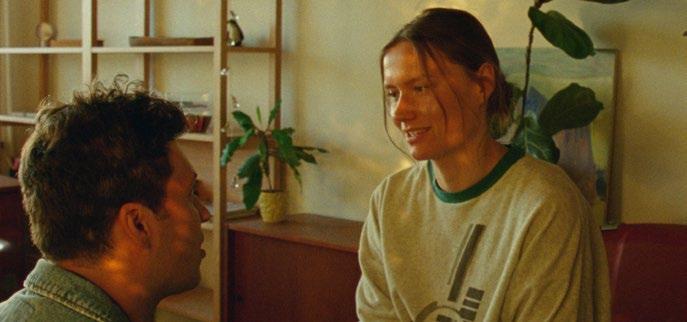

China Sea
Renovation
Borderline
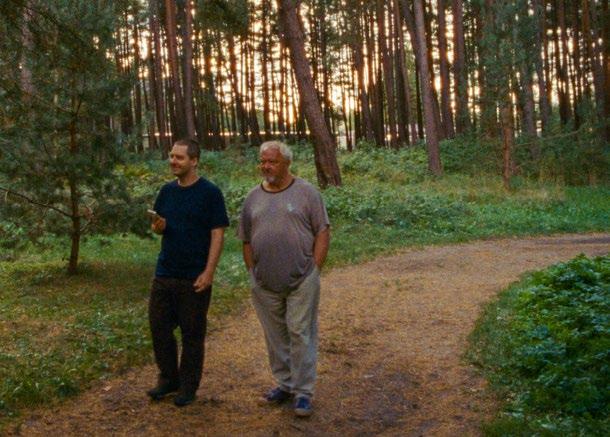
Set in the early 1990s, Hunger Strike Breakfast follows Daiva, a news anchor who loses her job when Russian soldiers seize the TV station. Together with several peers, she launches a hunger strike to reclaim it. The film, produced by Marija Razgutė with co-producers from the Czech Republic and Latvia, premiered at the Warsaw Film Festival.

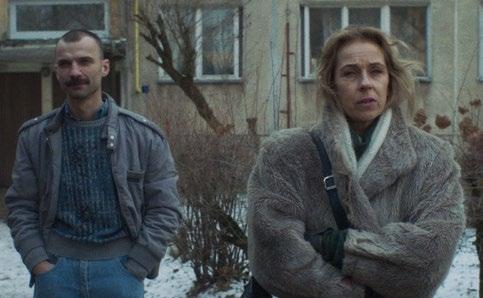
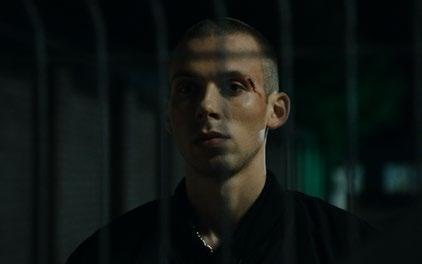
Celebrating its international premiere, The Activist (produced by Romas Zabarauskas and Gabrielė Misevičiūtė) depicts a young printing house worker Andrius – portrayed by last year’s Black Nights Stars programme participant Robertas Petraitis – who discovers his activist boyfriend Deividas murdered. Frustrated by the indifference of society and the police, Andrius takes justice into his own hands.
Becoming tells the story of 17-year-old Mila from Kazakhstan, who finds belonging in an open-water swimming team led by the enigmatic coach Vlad (played by Valentin Novopolskij). When her place on the team is threatened, she must de-
cide how far she’s willing to go to protect it. The film was made by an international team from France, Kazakhstan, the Netherlands, Lithuania, and Sweden, with Marija Razgutė as co-producer and Brigita Beniušytė as associate co-producer.
Presented in the same programme out of competition is Two Prosecutors by Sergei Loznitsa, a French-GermanDutch- Latvian-Roma nian-Lithuanian co-production (Lithuanian co-producer: Uljana Kim). Having premiered earlier this year at the Cannes Film Festival, the film examines human helplessness in the face of a relentless totalitarian regime.
The Doc@PÖFF Baltic Competition will feature Holy Destructors by Aistė Žegulytė, Laguna by Šarūnas Bartas, A Goodnight Kiss by Giedrė Žickytė, and two world premieres: BIX Almost

Nirvana by Emilis Vėlyvis and Scarecrows by Latvian director Laila Pakalniņa, a Lithuanian co-production.
Coming to Tallinn from its IDFA premiere, Holy Destructors is a poetic documentary about fungi that reveals the remarkable work of bio-archaeologists and restorers. Produced by Uljana Kim and Migla Butkutė in co-production with France and Latvia, the film reflects on humanity’s futile struggle against decay, reminding us that destruction is a prelude to renewal.

In Laguna, which premiered at the Venice Film Festival’s independent section Giornate degli Autori, Šarūnas Bartas confronts the loss of his daughter Ina Marija. Travelling with his youngest daughter to

The Visitor
Hunger Strike Breakfast
The Activist
Two Prosecutors
Becoming
Holy Destructors
Laguna
IN FOCUS
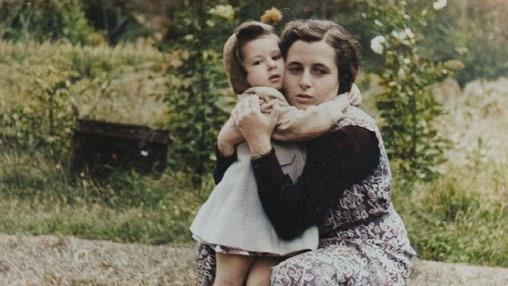
Mexico’s Pacific coast, he revisits the place where Ina Marija spent her last holiday with him. The film was co-produced with France, with Lithuanian producers Šarūnas Bartas, Alina Lu, and Jurijus Stančikas.
Director and producer Giedrė Žickytė returns with an international premiere of A Goodnight Kiss, a heartfelt portrait of Irena Veisaitė – Holocaust survivor, theatre scholar, and human rights advocate. Co-produced with Estonia and Bulgaria, the film is both a personal tribute and a timeless reminder of how compassion and intellect can shape the world.
Known for his action comedies, Emilis Vėlyvis turns to creative documentary with BIX Almost Nirvana (producers Uljana Kim and Saulius Urbonavičius, exec. prod. Vaiva Martišauskaitė). The film reunites the legendary rock band BIX, formed in 1987, capturing their rebellious spirit and recalling the era when they once shared the stage with Nirvana.



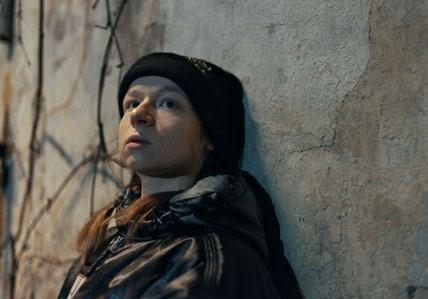
Featured in the International Youth Competition Programme by Just Film – the Youth and Children Film Festival of PÖFF – is the world premiere of Dovilė Gasiūnaitė’s They Call Me Danka, produced by Artūras Dvinelis. Adulthood is difficult – especially at fifteen. Forced to be the grown-up in her family and constrained by circumstances that limit her potential, Danutė learns to survive by turning responsibility into her only protection.
tine
nature and technology
balance.

In the Old Gold: Classic Films Come to Life programme, dedicated to restored film heritage, audiences will be introduced to Andrius (1980) by Algirdas Araminas – a poetic tale about a ten-year-old boy with a pure and trusting heart whose imagination offers refuge from reality.
This year, the festival will also honor Juozas Budraitis, one of Lithuania’s most distinguished film and theatre actors, who recently celebrated his 85th birthday, with a Lifetime Achievement Award. To mark the occasion, two films – both world premieres – will be screened in Special Screenings
One of them, Old Man’s Journeys by director and philosopher Nerijus Milerius (producer Stasys Baltakis), is a reflective documentary weaving together Budraitis’s cinematic roles and life memories into a single stream of recollection.
The second, Sand in Your Hair by Mantas Verbiejus (producer Živilė Gallego), tells the story of Malvina, a former ballerina in her mid-eighties who rediscovers love and freedom after meeting Kipras, a painter her age. The film, which also features Juozas Budraitis, celebrates resilience, independence, and the courage to defy expectations. BF

Latvian director Laila Pakalniņa’s Scarecrows, co-produced by Giedrė Žickytė, reveals the unseen world behind every take-off at Riga Airport. Shot across four seasons, the film finds beauty in rou-
and tension in progress, where
coexist in fragile
A Goodnight Kiss
BIX Almost Nirvana
They Call Me Danka
Scarecrows
Old Man’s Journeys
Sand in Your Hair
Andrius

VILNIUS FILM FUND IS ESTABLISHED
Vilnius City has established Vilnius Film Fund - the first city film fund in Lithuania. With more than 90% of the country’s film industry concentrated in the capital, Vilnius aims to position itself as a vibrant international co-production hub, and to support films that enhance the city’s global visibility.
By Vilnius Film Office
The Vilnius Film Fund will provide financial support for the production of documentary, animated, and feature-length co-productions between Lithuanian and international filmmakers. Through this initiative, the city seeks to stimulate economic growth, strengthen international competitiveness, and shape Vilnius’ image as an attractive, film-friendly location.
When selecting projects, the fund will assess their financial benefits to the city, international potential, and involvement of local film professionals. The maximum support per project will be up to €30,000.
According to the Head of the Vilnius Film Office, Jūratė Pazikaitė, this new initiative will encourage the sustainable development of the local film industry, foster the exchange of experience between international and Lithua-

FUNDS
nian professionals, and promote the creation of high-quality film productions.
Co-productions have already proven to be a remarkable success story for Vilnius and Lithuania. Director Marija Kavtaradze’s film Slow - a Lithuanian, Spanish, and Swedish co-productionwon the Directing Award at the Sundance Film Festival and was screened in cinemas around the world. Meanwhile, Laurynas Bareiša’s Drowning Dry, co-produced between Lithuania and Lat-

via, received the Best Direction Award, and its leading cast was honoured with the Best Performance Award at the Locarno Film Festival. Another successful example is film No. 24, a Lithuanian–Norwegian co-production, which premiered on Netflix and earned wide acclaim from both critics and audiences.
“Vilnius’ appeal for co-productions lies in a unique combination of three strengths that perfectly complement each other: a competitive national tax incentive scheme, a highly skilled and talented pool of film professionals, and an exceptional diversity of architectural styles and filming locations – all located conveniently close to one another,” says J. Pazikaitė.

She emphasises that Vilnius is truly a film-friendly city, where location owners are open to new productions and the city actively supports creative ideas and filming needs.
“We hope that the name of Vilnius will be heard even more often at international film festivals, and that Lithuanian films will continue to be recognised and celebrated around the world,” Pazikaitė adds. BF
Photos by Armands Virbulis
Photo by Audrius Solominas
Filming Mubi.
Filming Sisi.
Filming Sisi.
Filming Little Fighter.
Photo by Lukas Šalna
A True Bohemian’s LAST WILL
A documentary–detective film included in the Baltic Competition of the Tallinn Black Nights Film Festival follows the search for a poet’s ashes - missing for thirty years - in order to scatter them in Paris. The film’s director, 30-year-old Jānis Ābele, had never even met the poet, Anatols Imermanis, in person. Yet he is the one destined to fulfil the last wish of a true bohemian.
By Daniela Zacmane
Your latest work, The Last Will, is a documentary. Until now, your featurelength works have been fiction. What did you discover in the documentary form? During my studies, I thought I’d never look towards documentary cinema. My focus was entirely on fiction films; documentaries were something we used merely as research material for narrative projects. That was a mistake – but understandable. About 80% of documentaries worldwide are extensions of
journalism, sociology, or anthropology told through the language of film. And frankly, that bores me. But filmmakers like Agnès Varda and Abbas Kiarostami opened a new horizon for me. Documentary, in truth, is a free form. The Last Will is, in a way, a documentary infused with elements of fiction, since many scenes are carefully controlled. A text was written, a structure created. Producer Guntis Trekteris even said it was one of the most detailed documentary scripts he had ever seen!

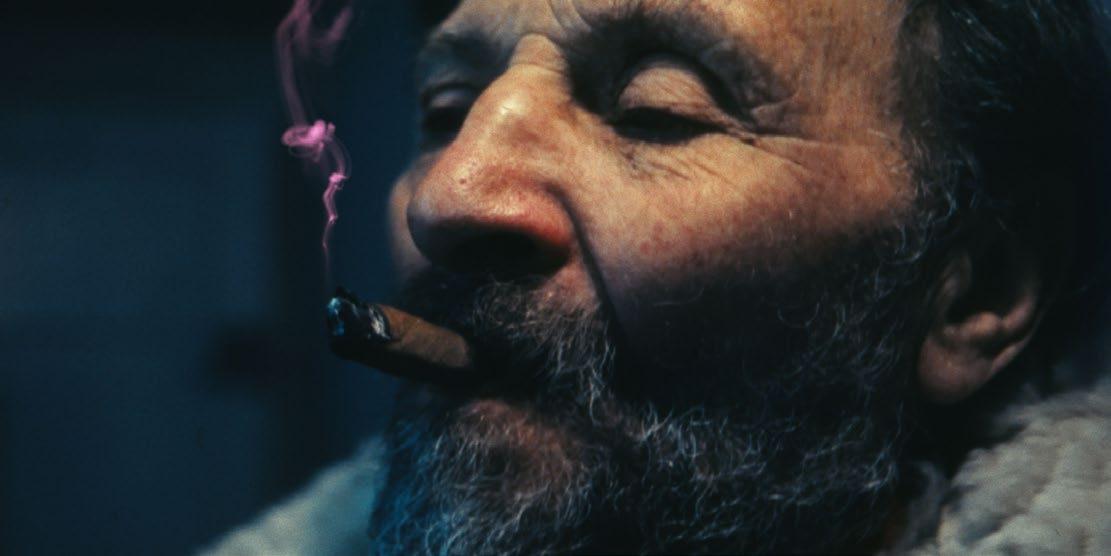
THE LAST WILL
Director: Jānis Ābele
Screenwriters: Jānis Joņevs & Jānis Ābele
Cinematographer: Toms Šķēle
Editor: Andris Grants
Sound Designer: Ernests Ansons
Producers: Guntis Trekteris, Jānis Ābele, Dita Birkenšteina
Produced by: Ego Media & Chaland Films (LATVIA) Year: 2025

The film carries features of fiction, like a detective story, for instance.
In our case, the detective framework was an excellent structure for telling a story centred on a missing object: the urn containing the ashes of poet Anatols Imermanis. Much credit goes to screenwriter Jānis Joņevs, a great fan of detective stories. Personally, I tend to agree with Hitchcock, who once told Truffaut he didn’t like detective stories because they placed disproportionate weight on the ending – on the solution. But in the 21st century, detective stories have been wonderfully deconstructed.
A major success of the film, I think, is the presence of poet Semjons Haņins (real name Aleksandrs Zapoļs) in the role of the “detective.” Within his poetically bohemian aura, everything becomes elegant. He de-vulgarizes the world around him – and that’s crucial when it comes to Imermanis. Yes, his phlegmatic temperament is fascinating.
Director Jānis Ābele appreciates freedom that documentary filmmaking gives, however film about Anatols Imermanis was made in strong structure.
LATVIAN DOC Knock Knock
Was it important that Haņins himself is a wellknown poet?
We needed a living protagonist. A detective. Of course, we weren’t going to hire a real detective. Nor an actor – this is, after all, a documentary. So, we started looking through the list of poets. Poets, to be honest, aren’t usually the most natural performers in front of a camera. Yet Haņins carries a kind of magnetic, ironic grace – and between him and Imermanis there seemed to be a deep kinship in how they perceive life, a few subtle points of contact. Haņins had also written about Imermanis before. In a way, he had already begun to unravel the mystery of our protagonist.
Thinking about international audiences – what might resonate with them about Imermanis, this Latvian poet and writer?
His bohemian spirit and his lust for life are timeless. When we presented the project at Baltic Sea Docs, a Ukrainian expert immediately noted that Imermanis wasn’t glorifying prostitution – he was glorifying free-
DIRECTOR

dom. His behaviour, poetry, and lifestyle were all about freedom of thought in oppressive times.
In the film, it’s clear that the Paris Imermanis dreamed of - even in death - is not the Paris of today.
Exactly. The Paris he longed for never really existed – it was born from his poetry. But that didn’t stop us from searching for it. Maybe even from not finding it.
For me, Paris itself is personally important. It’s a city soaked in cinema. There aren’t many places where you can still watch a silent film in a theatre, surrounded by other people. Of course, there’s also the Amélie or Emily in Paris version of the city – but on the other side, there’s this constant, living presence of cinematic tradition like the lingering spirit of the French New Wave.
The film also features journalist Ērika Šmeļkova, who shares an almost traumatic youthful experience with Imermanis. Yet her admiration for his courage to live an unconventional life seems stronger than her criticism. Through Ērika’s story, we gain a map of Imermanis’ personality. Yes, he had many women, but it can’t be viewed simply in black and white. Her contribution adds a lot to the portrait of Anatols as a person.
Still – weren’t you afraid of criticism from women toward the film?
We were – when starting the film, while shooting, and even now. But I didn’t make this film to glorify a poet obsessed with women and eroticism.
At the same time, I don’t believe that in the post–#MeToo world we should be forbidden from telling stories about people who, from today’s perspective, might be criticized. I didn’t want to censor myself. I tried not to judge him – who am I to do that? He has his strengths and flaws, and both are present in the film.
The documentary community, I’ve noticed, is much more politically charged than the fiction film community – and that’s something you have to be aware of.
How would you describe The Last Will in one line?
A bohemian poet’s lust for life that continues even after death.
Or maybe: The last detective story of a detective novelist himself – since Imermanis also wrote detective fiction! (Though perhaps Joņevs already phrased it that way…)
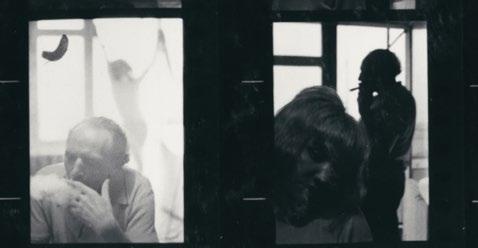
Or simply: The last trip of our local Charles Bu kowski, who loved freedom.
Director Jānis
Ābele (at the centre) with protagonistsscreenwriter
Jānis Joņevs (from left) and “detective” Aleksandrs Zapoļs (from right).
In The Last Will, the characters – one of whom rests in an urn – head to Paris. Where, in your view, is contemporary cinema heading today?
When I was studying, my period of active film explo ration coincided with the rise of the Romanian New Wave, and at that time Eastern European cinema was characterised by brutal realism.
From what I’ve seen at festivals recently, European cinema seems to be moving away from raw realism. That’s probably because the times we live in are more uncomfortable than they were ten years ago.
In your essay film through Latvian cinemas closed during the pandemic, recalling films that had a profound impact on you. The cinema theatre is clearly the true home of film era of cinema?
I won’t be original here – it’s the 1960s and 1970s in Europe. But I also love American cinema – the Golden Age of Hollywood, and later, the New Hollywood movement.
Paris is a city soaked in cinema, says Latvian director Jānis
Ābele, famous for his passion for French cinema.
Over time, however, my tastes have evolved. I used to dislike how American films from the 1980s appeared on screen, but now I’m beginning to enjoy them. I sus pect it’s because their visual texture reminds me of what I watched on television as a child – and at this age, those memories evoke a kind of warmth.
Still, even if we keep looking back at old movies for comfort, the real time is now. And I’m grateful, as a filmmaker, for the chance to give time back to certain protagonists – even to those who have turned to ashes, like Imermanis. BF





JOIN CREATIVE GATE - A FREE NETWORKING PLATFORM BUILT SPECIFICALLY FOR THE FILM AND AUDIOVISUAL INDUSTRY




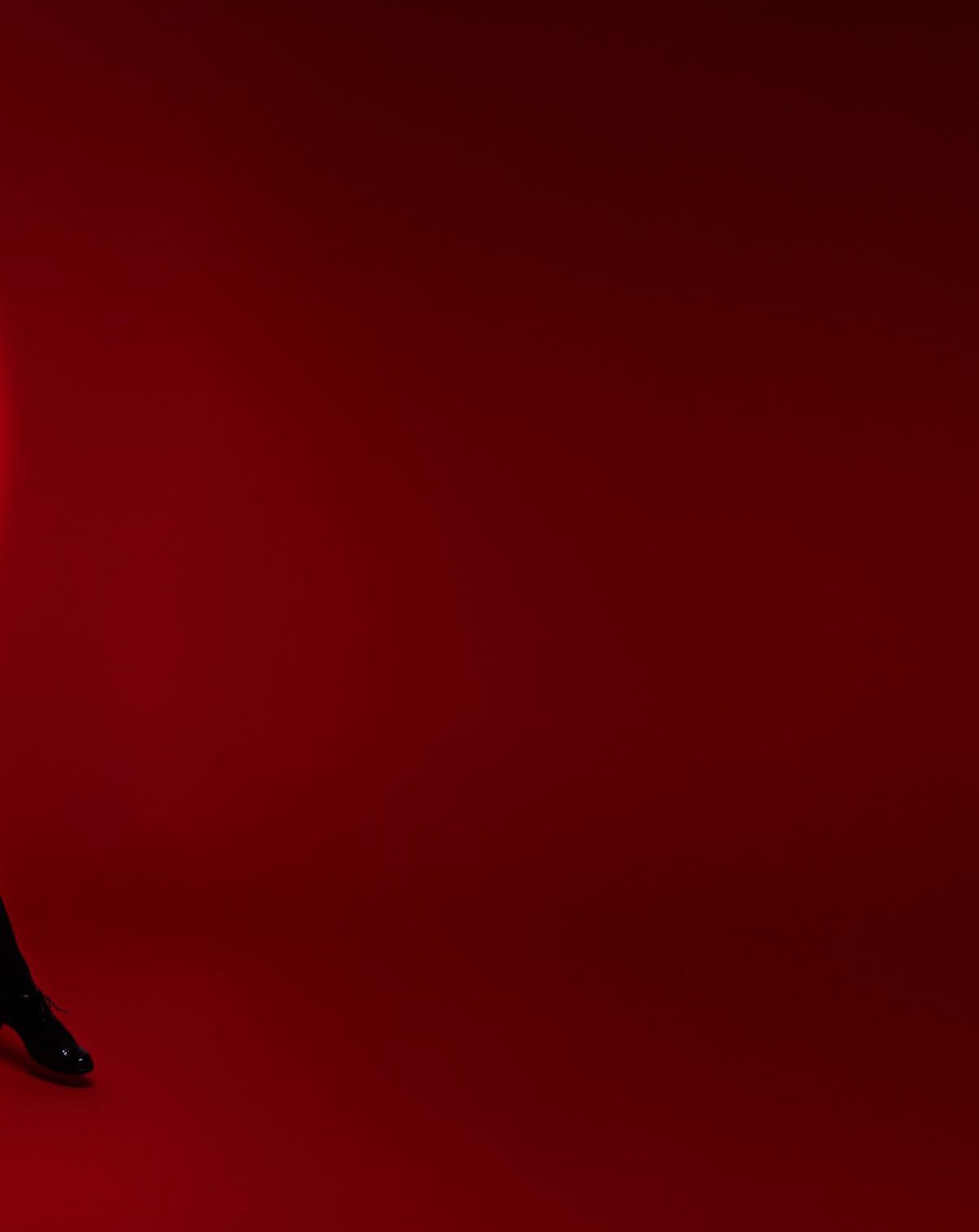
RedBeyond Noses
DOC Knock Knock
ESTONIAN
Directors Liina Särkinen and Heilika Pikkov discuss their intimate documentary My Family and Other Clowns chronicling the offstage world of Haide Männamäe and Toomas Tross – better known as the iconic clown duo Piip and Tuut, beloved by Estonian children for decades – alongside their three children: a moving portrait of a peculiar family and its resilience while navigating the push and pull of artistic work, parenting, burnout, autism, and the COVID years.
By Maarja Hindoalla Photo by Sohvi Viik-Kalluste
How did you come upon making a documentary portraying the family life of Piip and Tuut, long-time favourites of Estonian children and families?
Liina Särkinen: It began more than twenty years ago. When Heilika and I were studying to become directors, Haide Männamäe and Toomas Tross were our lecturers. They were young then, just back from theatre studies in Denmark, and they were not yet Piip and Tuut at all. When we had children of our own and started going to their shows, it dawned on us that they also had kids – and that one of them has special needs – and the idea started taking shape. I was living in the UK at the time and Heilika in Estonia, but one day the idea just burst out while we were sitting together in Estonia due to another film.
What was the story you set out to capture?
Heilika Pikkov: It was the story of the whole family, not so much about Piip and Tuut. It was about a unique family with three children, where the parents have a very intense, peculiar profession, and about how the dynamics work when one of the children is autistic, which puts an extra spin on everything. A story of Piip and Tuut as characters would have been very logical, because by then they had developed their brand and were very popular, but we wanted to do something else – to examine how such a family manages.
Did they come along with the idea easily?
L.S.: We talked about it a lot over many conversations and pleasant hangouts, and they were very open right from the start.
H.P.: Of course, they didn’t imagine what would happen over those five years…
L.S.: Neither did we!
H.P.: It was easy for them to agree without knowing that it would turn out to be perhaps the most eventful five years in their family life. They have said there hasn’t been a time like that either before or since. That period included major changes related to their eldest daughter, Emma, the COVID years, and much more. In hindsight, the timing for us as filmmakers was excellent.
L.S.: When we began filming, they were actually very tired and in a rough situation with the theatre, because they had almost no state funding – a situation that had lasted for years – and all their income was going into the theatre house. They probably also saw a chance for people to get to know what the Piip and Tuut Theatre really is through our film. What happened over those years was life itself with its twist and turns. I think it was the right time and place to tell this story.
What surprised you as film makers the most during that time?
H.P.: At first, we thought the focus among the children would be on Siim, who is autistic, but we certainly
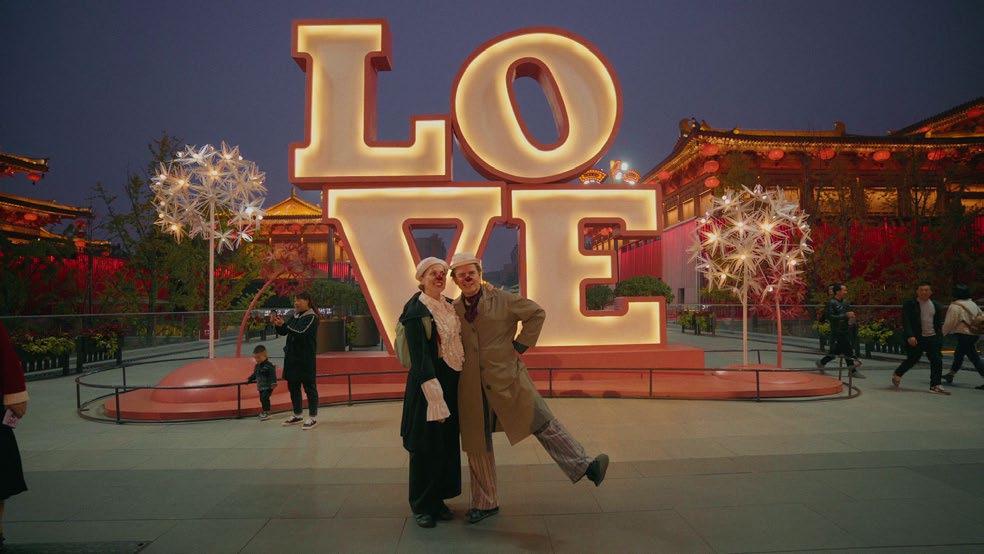
didn’t foresee what would happen with Emma. During that period she made sense about a things from her childhood. She burned out, basically collapsed, and stopped talking to her parents. We didn’t expect that, because they are very close. When we started the film, we sensed that especially Haide is very close to Emma, much closer than many mothers and daughters. Unexpectedly, we found ourselves in a situation where we were talking with Emma and realised she hadn’t discussed those things with her mother. And that she wasn’t speaking with her mother at all, yet she spoke with us. It made us think about how to proceed with this sensitive material so that no one would get hurt.
L.S.: Definitely the COVID-era material surprised us too. When we gave them a camera, we had no idea what would come back. We discovered so many wonderful things that we ourselves would never have been able to capture. For example, when Emma’s younger sister Anni decided to take the camera and record a message to Emma on her eighteenth birthday. Anni, who was quite introverted as a child, chose in that moment to open up to the camera. Moments like these stirred a lot of emotions in us. We cried in the editing room as much as we laughed.
Is there anything that particularly stayed with you from the intimate and delicate process of making this film?
L.S.: For me it has always been inspiring to try and chase a professional dream while balancing family life in a way that keeps everyone happy. Is it possible? While observing their family, many things fell into place for me.
H.P.: On a personal level it has been beautiful to observe that closeness and to think about how to sustain certain relationships in everyday life in my own family. I also have three children, at such different ages that they have very different, constantly changing


needs. How to be there for all of them. And not just in the “How was school today?” sense, but how to find those moments of closeness with each one. I have definitely learned a lot from Haide and Toomas.
L.S.: Perhaps also how not to give up. Kids at a certain age do the same mistakes several times in a row — how to remain present and keep believing in them.
H.P.: Also, that it’s completely normal that at some point anyone might boil over and raise their voice. But Emma sums it up very well in the film: even if at one point the waves clash over our heads, we calm down somewhere separately, and then everything is all right again. When my patience is about to snap, I now handle the pangs of guilt that follow much better.
How has the reception been and what do you hope the viewers will take away from the film?
H.P.: We tried quite hard to shape the ending so that it would give hope. Because they did get through the difficult situations portrayed in the film. Maybe there’s a gentle note of melancholy at the end, when they sit together and sing in the warm summer night in their Hiiumaa summer home, but still – they are together. It has actually been surprising that some people have
Toomas Tross and his son Siim enjoying the sea at Hiiumaa.
Haide Männamäe with her daughters Emma and Anni.


said they cried throughout the film. The humour reaches some, but not others. I suppose it also depends on what is going on in the viewer’s life at that moment, and from what point of view they watch it from. L.S.: Differences in people’s perceptions can also arise from whether a situation is painfully familiar or completely foreign and surprising. Of course, we knew the film would move the audience – the story moved us as well – but perhaps we didn’t foresee the sheer volume of very sincere and emotional feedback.
H.P.: Often after a screening, you might notice a very quiet audience, and then a couple of hours later, when you’ve gone home, messages start arriving – from friends, acquaintances, and even strangers sending long reflections and thoughts on the film. People either don’t want to say it out loud in the cinema, or can’t find the words right away, but then they contemplate and feel the need to write to me or Liina. Haide and Toomas have received a lot of letters as well. That’s rather unusual.
What has the response been from young people?
L.S.: Teenagers around Emma’s age have been very moved as well. Those who come with their mothers or parents probably have a lot to talk about afterwards.
H.P.: In the film Emma represents all these issues and questions teenagers are wrestling with: anxiety, finishing school, high school entrance exams, and family relationships in the background – in general, finding your way in life. We knew children would be a big part of the film, but we didn’t anticipate that such a
MY FAMILY AND OTHER CLOWNS
Documentary
Directors: Heilika Pikkov, Liina Särkinen
Producer: Ülo Pikkov
Cinematographers: Taavi Arus, Heilika Pikkov
Editors: Madli Lääne, Heilika Pikkov, Liina Särkinen
Composer: Ann Reimann
Sound Designer: Horret Kuus
Produced by: Silmviburlane
Length: 84 min
Languages: Estonian, English, Chinese
Year of production: 2025
Country: Estonia

Too-
Emma and Anni became even more closer during the shooting period.
profound insight into the world of a young person would emerge.
The film isn’t strictly chronological, but rather feels a bit kaleidoscopic at times due the use of their family archive. Why did you decide to construct the film in that way?
H.P.: What happens in the present — from the moment we, so to speak, stepped into their family — is mostly chronological. Of course, there are some editing tricks, but since the children were growing, we couldn’t make big jumps back and forth in time. We also knew they had a fairly extensive family archive. It was stored in boxes, not digitised. Even the children themselves had never seen it. From the very beginning, we knew we definitely wanted to use it, but weren’t sure to what extent or how exactly it would connect to the current story. After we had gone through the archive frame by frame and seen which moments connect with the present story and add a new layer, we began to sift those into the film.
L.S.: There was a lot of experimenting with using the archive both technically and thematically. We picked it all apart and put it back together. It was great that we had the editor Madli Lääne with us in the process, who pointed out the parts that needed smoothening out.

Haide Männamäe and
mas Tross are known as the iconic clown duo Piip and Tuut .
Sisters
Composer Ann Reimann’s subtle, yet emotional score adds to the occasional melancholy. How did you find her, and how did the collaboration go?
H.P.: I had seen A Loss of Something Ever Felt* for which she composed the music, and I remember thinking in the cinema that it was so beautiful. Because the director of the film was Colombian Carlos Lesmes, I assumed the composer must be a foreigner, but that was when I first realised it was Ann Reimann. Additionally, we wanted the composer to definitely be a woman. Ann understood very well that since there is already so much music in the film, very little actually needed to be added. However, there were specific places where her music helped us overcome some editing issues and connect certain elements. It was incredibly exciting to watch how she and the sound designer, Horret Kuus, did the final mix. It highlighted how differently a scene can be shaped with music. If you add the music a little earlier, you are doing the emotional work for the viewer, but if you place it a few seconds later, they have arrived at the same emotion by themselves and the music simply supports that.


Do you have any closing thoughts you’d like readers to take away?
L.S.: While making this film, we have realised that a fear of clowns is real. For example, there’s a sales agent with coulrophobia who told us that she can’t sell our film because of it, but also some of our acquaintances have it as well. One good friend of mine said, “You know I don’t like clowns – I usually walk out if something like that comes on – but I’ll go for your sake.” And after the screening, their eyes were filled with tears, and they said, “Maybe now I’m cured.”
H.P.: There are also a lot of people who have preconceptions not just about clowns in general, but specifically about Piip and Tuut. Yet if, for whatever reason, they end up at one of their shows or watch our film, they get a completely different perception. There’s a distinct difference that Piip and Tuut are theatre clowns, actors playing characters. Hollywood tends to twist the image of a clown.
L.S.: We encourage people that if there’s ever a moment in life to do something you thought you’d never do, then come see this film. Things can change. Challenge yourself. BF
* A Loss of Something Ever Felt, documentary, director Carlos Eduardo Lesmes Lopéz, 2022.
Liina Särkinen
Heilika Pikkov


2025 DISCOVERY CAMPUS

Meet & learn from the filmmakers who have left their mark on international cinema.


WORLD CLASS MENTORS IN TALLINN
the

Prosthetic Makeup
Designer Thomas Foldberg will take the audience behind
scenes of his career.
BALTIC FILM
Nina Paskowitz
Debra McGuire
Jessica Hausner

Every year, Discovery Campus – the continuing education programme of PÖFF and Industry @Tallinn & Baltic Event – turns Tallinn into an eye-opening meeting ground for emerging film professionals.
By Egle Loor
Over the years, hundreds of young filmmakers, and talents have come here to gain valuable insights from experienced mentors who’ve left their mark on international cinema. And 2025 will be no exception: this year, acclaimed filmmaker Jessica Hausner, and legendary costume designer Debra McGuire, will join the line-up of world-class mentors.
Triin Tramberg, Head of the Discovery Campus programme, couldn’t be more thrilled to welcome such distinguished guests: “The motto of Discovery Campus is simple – you don’t have to
make every mistake yourself. Learn from professionals who’ve already walked the path. Many of our masterclasses and lectures are open to accredited guests and day-ticket holders, so I hope regional film professionals seize the chance to learn from top-tier mentors.”
One of this year’s highlights of Discovery Campus, taking place 18-21 November, is a masterclass with Jessica Hausner, one of Europe’s most distinctive contemporary directors. She gained international recognition with Lovely Rita (2001), which premiered in Cannes’ Un Certain Regard section and marked a bold new voice in Austrian cinema. Hausner’s latest film, Club Zero (2023), premiered in Competition at Cannes and won the European Film Award for Best Soundtrack. Her masterclass will explore how image, sound, and music are interwoven to build the distinctive tone and psychological tension in her films – especially Club Zero
The Black Room, Discovery Campus’ strand dedicated to hair and makeup in 2025, welcomes Prosthetic Makeup Designer Thomas Foldberg, known for his work on Nymphomaniac: Vol. I (2013), Men & Chicken (2015), Border (2018), and The Ugly Stepsister (2025). During the closed session Foldberg will take you behind the scenes of his career, present case studies of different characters, practical requirements and technical solutions for different character design projects.
One of the highlights of this year’s programme is an open lecture by Debra McGuire, an acclaimed artist, fashion, and costume designer. Best known for her 10-year run on Friends and her longterm collaboration with David Mamet, including Phil Spector (HBO), for which she earned an Emmy nomination, McGuire’s career spans television and film – from Sonic the Hedgehog 1 & 2 to The Morning Show (Seasons 2–4). In her lecture, she’ll guide audiences through her creative journey from the 1980s to today.
The eight selected participants of Black Room will also have an opportunity to attend a workshop by Nina Paskowitz, one of Hollywood’s top hairstylists and a favourite among A-list actors. Her career began with The Night Before (1987) starring Keanu Reeves, and took off after Internal Affairs (1989), where Richard Gere’s iconic silvery hair became legend-
ary. Her film credits include The Green Mile, Iron Man, Something’s Gotta Give, Pirates of the Caribbean, and Meet the Fockers
Music Meets Film, focusing on music in film, welcomes Emmy-nominated composer Miriam Cutler, who is celebrated for her powerful and emotionally resonant scores in documentary film. With a career spanning over two decades, she has composed music for acclaimed works such as RBG (2018), Love, Gilda (2018), The Hunting Ground (2015), and Lost in La Mancha (2002). At the lecture, Director–Composer Lab: Composing the Cut, Cutler will delve into the art of collaboration, real-world case studies, and the critical stages of scoring a film. Meanwhile, Frame Within a Frame, the strand dedicated to emerging cinematographers, welcomes Roberto Schaefer, ASC, AIC, a BAFTA-nominated cinematographer whose career spans collaborations with directors such as Martin Scorsese, Nestor Almendros, Chris Guest, Marc Forster, Lee Daniels, and Don Cheadle. His credits include Monster’s Ball, Finding Neverland, Quantum of Solace, The Paperboy, Miles Ahead, Creation Stories (2021), and Netflix’s Rattlesnake (2019).
Black Nights Stars, designed for young actors and actresses, will host a panel “Netflix, Tenet, and Viking Valhalla, what opportunities do these films and series bring to actors from the Baltic Sea region?”, with acknowledged casting directors Frank Moiselle (Ireland /UK), Heli Jürisson (Estonia), and talent agent Raakel Huikuri (Lisa Richards Nordics). BF
The Discovery Campus programme is proudly carried out in close cooperation with international partners, including the International Screen Institute, T-Port, Aalto University, IMAGO Technical Committee (ITG), e-Talenta, Tallinn UNESCO City of Music. and Tier Music Publishing.
Check the schedule of events of Discovery Campus on 18-21 November 2025!

Miriam Cutler
How to Find Money in Estonia
If you want to make your film with Estonian partners, these are the film funds ready to finance your project
By EFI
ESTONIAN FILM INSTITUTE PROGRAMMES FOR FILM PRODUCTION
MAJORITY CO-PRODUCTION
• Subsidy of up to 70% of the budget.
• 50% of the subsidy must be spent in Estonia.
FEATURE FICTION:
Budget 2026: € 4,182,000
• Financing for an Estonian co-producer the maximum subsidy is € 900,000.
• Two application deadlines: April 28 and December 8.
FEATURE DOCUMENTARY:
Budget 2026: € 990,000
• Financing for an Estonian co-producer the maximum subsidy is € 150,000.
• Two application deadlines: March 24 and September 1.
ANIMATION (all lengths):
Budget 2026: € 1,065,000
• Financing for an Estonian co-producer the maximum subsidy is € 900,000 for feature animation & € 300,000 for short animation.
• Two application deadlines: February 17 and September 8.
MINORITY CO-PRODUCTION
Budget 2026: € 600,000
• For producers from all over the world. Participation of an Estonian co-producer is necessary. Bilateral treaty not necessary.
• Subsidy of up to 70% of the Estonian part of the budget.
• 100% of the subsidy must be spent in Estonia.
• Estonian creative and production related participation in a project should meet the requirements of minority co-production grading table.
• Four application deadlines: February 3 and October 13 for feature fiction and documentary. February 17 and September 8 for animation.
• Decision in 50 days.
CONTACT:
Estonian Film Institute
Viola Salu / Head of Production +372 627 6000 / viola@filmi.ee filmi.ee
FILM ESTONIA CASH REBATE
Budget 2026: € 10,000,000
Film Estonia cash rebate is a production incentive supporting the incoming production of feature films, feature documentaries, animation films, animation series, high-end TV-drama and the post-production of all previously mentioned works. An application can be made for international production service or co-production to receive a cash rebate up to 30% on eligible production costs.
• Support intensity – 20%–30% of eligible costs
• Deadlines – open call
• Applicant – company registered in Estonia
• Recipient – foreign company
• Decision – in 30 days
• Auditing and payment – in 40 days The scheme is open for:
• Feature films with a budget of at least € 1 million; minimum local spend € 200,000.
• Feature documentary with a budget of at least € 200,000; minimum local spend € 70,000.
• Animation with a budget of at least € 250,000; minimum local spend € 70,000.
• Animation series with a budget of at least € 500,000; minimum local spend € 70,000 per series.
• High-end TV-drama with a budget of at least € 200,000 per single episode; minimum local spend € 70,000 per series.
• Post-production; minimum local spend € 30,000
Supported projects include:
Sisu 2 (FI), Bubble & Squeak (US), The Agency (US), Tenet (UK/US), The Swedish Torpedo (SE), Orenda (FI), Azrael (US), Never Alone (FI)
CONTACT:
Nele Paves / Film Commissioner nele@filmi.ee / filmestonia.eu
THE CULTURAL ENDOWMENT OF ESTONIA
Public agency that supports culture, including audiovisual art, and sport.
MAJORITY CO-PRODUCTION
Financing for an Estonian co-producer the maximum subsidy is:
• FEATURE FICTION: € 200,000
• FEATURE DOCUMENTARY: € 50,000
• ANIMATION (all lengths): up to € 4,000 per minute, but no more than € 150,000 as a total subsidy.
MINORITY CO-PRODUCTION
In case of minority co-production, the amount of the benefit is up to half of the maximum rate.
• Participation of Estonian co-producer is necessary.
• There are four application deadlines: February 20, May 20, August 20 and November 20
CONTACT: Liis Viira
Curator of Audiovisual Arts endowment +372 5855 9483 / film@kulka.ee kulka.ee
REGIONAL FILM FUNDS
TARTU FILM FUND
Type of fund: regional, incentive / cash rebate
Budget 2026: € 150,000
• Support intensity: up to 35%
• Objective: production of an audiovisual work in Tartu and the region of South-Estonia
• Support for the production of feature films, animations, TV-series, documentaries, short films.
• Participation of an Estonian production company is necessary.
• Two application deadlines: in Spring and in Autumn.
Recently supported projects:
The Black Hole (EE/FI), Aurora (EE), Smoke Sauna Sisterhood (EE/FR/IS), 8 Views of Lake Biwa (EE/FI)
CONTACT: fund@tartufilmfund.ee tartufilmfund.ee
PÄRNU COUNTY FILM FUND
Type of fund: regional incentive / cash rebate
• Budget 2026: € 100,000
• Support intensity: up to 25%
• Objective: production of an audiovisual work in the Pärnu County (except Kihnu municipality).
• Support for the production of feature films, animations, documentaries, short films.
• Participation of an Estonian production company is necessary.
• No deadlines.
CONTACT:
Association of Local Authorities of Pärnu County pol@pol.parnumaa.ee parnumaa.ee/en/film-fund
VIRU FILM FUND
Type of fund: regional, incentive / cash rebate
• Budget 2025: € 200,000 (2026 TBC)
• Support intensity: up to 40%
• Objective: production of an audiovisual work in the Eastern region of Estonia.
• Support for the production of feature films, documentaries, TV-series, short films, music videos.
• Participation of an Estonian production company is necessary.
• Two application deadlines: March 1 and October 1.
PÕLVA COUNTY VALGA COUNTY
VÕRU COUNTY
Recently supported projects: Sisu 2 (FI), Myyrä (s3) (FI), The Agency (US), The Swedish Torpedo (SE/FI/EE/BE)
CONTACT: Piia Tamm piia.tamm@ivek.ee vff.ee
FILM FUND OF ESTONIAN
ISLANDS
Type of fund: regional, incentive / cash rebate
• Budget 2026: € 25,000
• Support intensity: up to 40%
• Objective: production of an audiovisual work on the islands of Saare County.
• Support for the production of feature films, animations, TV-series, documentaries, short films and film education.
• Participation of an Estonian production company is necessary.
• No deadlines.
Recently supported projects:
The Swedish Torpedo (SE/FI/EE/BE), Jungle Law (EE)
CONTACT: filmifond@sasak.ee saartefilmifond.ee
TARTU
TALLINN
SAARE COUNTY
PÄRNU COUNTY
JÕGEVA COUNTY
IDA-VIRU COUNTY
TARTU COUNTY
PÄRNU
FUNDS
How to Find Money in Latvia
THE KEY FUNDING BODIES
• National Film Centre of Latvia
• State Culture Capital Foundation of Latvia
• Investment and Development Agency of Latvia (cash rebate)
• Riga Film Fund (cash rebate)
Annual State Support for film industry 2024 (from all 4 key funding bodies) –
€ 11,349,382
Number of film productions supported by the National Film Centre of Latvia in 2024 – 39 films
NATIONAL FILM CENTRE OF LATVIA
Minority co-production scheme
• Budget 2025: € 400,000
• For producers from all over the world (except for projects whose delegate producer is a company registered in Russian Federation or Belorussian Republic or who has received or has planned to have funding from the public sources in either country). The participation of Latvian co-producer is necessary. The bilateral treaty is not required.
• Supported films: fiction features (over 65 min), documentaries and animation films of any length. The film must comply with the terms and conditions for a Latvian film (according to the Film Law, a Latvian film is a film, which is produced by a Latvian film producer registered in the National Film Centre producer’s register, and in the key creative team at least one member (director, scriptwriter, composer, set designer, animation artist or cinematographer) is a citizen of Latvia.
• The project can only be submitted by a production company registered in the producers’ register in Latvia and the
planned budget from Latvia is at least 20% for bilateral coproduction, and 10% in multilateral coproduction, or, if applicable, comply with the Council of Europe Convention on Cinematographic Co-production.
• The film’s delegate producer must be able to prove at least 50% of financing in place from his/her own country.
• 80% of the subsidy must be spent in Latvia.
• Call once a year, application time, deadline: March / April.
• Decision: 1 month.
CONTACT:
Inga Blese, Head of Production, inga.blese@nkc.gov.lv
STATE CULTURE
CAPITAL FOUNDATION
A public agency that supports different strands of culture, including audiovisual sector (various kind of projects: film productions, development, research projects, festivals, etc.).
• Supports documentaries of any length, fiction shorts and animation films.
• Applicant for film projects – Latvian producer.
• Funding for audiovisual sector in 2024: € 1,391,806 (no specific amounts indicated for film productions, depends on the competition and available funding).
• Three application deadlines: January, May, September.
• Decision: 1 month.
CONTACT
Film curator Gita Krātiņa, gita@kkf.lv
INVESTMENT AND DEVELOPMENT AGENCY OF LATVIA
Cash rebate scheme Latvia Co-financing programme for foreign productions
The programme is a production incentive supporting the incoming productions of full-length feature films, documentaries and animation films, TV films. An application can be made for international production service or co-production to receive a cash rebate of 30% on eligible production costs. The support can be combined with other public funding sources in Latvia in case if the Co-financing programme’s support together with other funding sources does not exceed 50% of the film’s total expenses in Latvia.
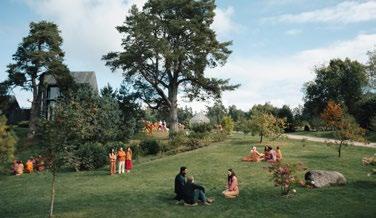
• Support intensity: 30% of eligible costs.
• Selection rounds: The selection is open for at least 1 month. If funding is available after a closed selection, the Agency announces the next selection round.
• Decision: 1 month.
• Applicant: a company registered in Latvia.
Main Eligibility Criteria for Foreign Film Project:
• An agreement with a local production company is required,
• The film must be fully or partially filmed in Latvia ,
• The project must be a new foreign film, which can include a new season, episode, or part of a film ,
• The project must use the services of individuals or legal entities established in Latvia ,
• The total production costs must be at least:
711,436 EUR for feature and animation films ,
142,287 EUR for documentaries,
• VAT contributions to the State budget must be at least 50% of the co-financing,
• The foreign producer must have at least 50% of the total filming costs available,
• Foreign funding must be at least equal to the eligible costs of the film project in Latvia,
• Filming must not have started before the project application submission date .
Estimated total available co-financing from 2025 to 2027 – 15.2 million EUR 2025 - 4,85 million EUR, 2026 – 5,07 million EUR, 2027 – 5,29 million EUR
In 2024 co-financed foreign film productions with the total of € 1 658 118.
CONTACT: jautajumi@liaa.gov.lv www.liaa.gov.lv
THE RIGA FILM FUND OF THE COUNCIL OF RIGA
Cash rebate scheme Riga Film Fund co-financing programme
The programme is a production incentive

supporting the incoming productions of full-length fiction features, documentaries, and TV films. An application can be made for international production service or co-production to receive a cash rebate of 20-25% on eligible production costs. The support can be combined with Latvian co-Financing programme’s funding.
• Support intensity: 20-25% of eligible costs (25% if the film’s story is set in Riga or with significant featuring of Riga in the story, and at least partly shot in Riga, 20% – if the film is shot in the territory of Latvia).
• Deadlines: open call until 30 September on first come first serve basis until the budget is depleted.
• Shooting must be finished and reports submitted by 30 November.
• Applicant: a company registered in Latvia.
• Annual budget: € 800,000.
• Decision: 1 month.
• The film’s delegate producer must confirm that at least 50% of financing is in place at the time of submission of the application.
The scheme is open for:
• for feature films, documentary and fiction TV projects;
• budget of at least € 700,000
Basic facts: Latvia is the member of the EU and NATO. Currency EUR. Latvia covers an area of 64,589 km2, with a population of 1.9 million. Access to high-speed internet in Latvia is among the best in the EU.
Accessibility: Riga, the capital of Latvia, has the largest airport of the Baltics just 20 min drive from the city center. There are more than 100 direct flight destinations.
Locations. Latvia and its capital Riga offer a wide
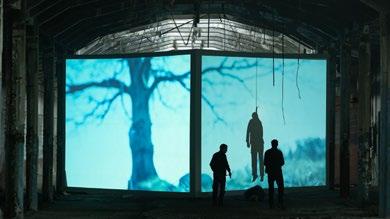
CONTACT: Eva Medjāne, eva.medjane@riga.lv www.filmriga.lv
PUBLIC BROADCASTER
Latvian Television (LTV) is the stateowned public service television company in Latvia. LTV operates two linear channels, LTV1 and LTV7. LTV is part of Public Broadcasting of Latvia, consisting of LTV and radio (6 stations), joint news content and digital access is provided on the broadcaster’s site www.lsm.lv.
LTV acquires Free TV and Free VOD rights to drama series, fiction features, documentaries, children’s content, live events, etc. LTV mainly acquires completed films but is also open to considering projects in production if LOC is needed.
CONTACT: Zane Valeniece, Head of Acquisitions, Zane.Valeniece@ltv.lv
OTHER IMPORTANT CONTACTS:
• Baltic Sea Forum for Documentaries: balticseadocs.lv
• Riga International Film Festival: rigaiff.lv/en/
• Documentary Film Festival Artdocfest/ Riga: artdocfest.com/en/
variety of locations. Riga city has Northern charm, Medieval, Art Nouveau and industrial architecture, as well as Soviet modernism heritage. The most beautiful Art Nouveau buildings in Riga were built by Mikhail Eizenstein, the father of the iconic filmmaker Sergei Eizenstein. Throughout Latvia there is wide range of castles, palaces, ancient fortresses and manor houses. The most popular shooting location is Rundale – a baroque
palace built in 18th century, 100 km from Riga Pristine nature: There are four distinct seasons in Latvia. Over 500 km long white sand beaches –the coastline of the Baltic sea. Abundancy of rivers and forests, lakes and swamps.
Advantages of filming in Latvia: Internationally experienced technical crews, strong art department and construction teams, competitive costs, stages and backlots, wide range of extras.
Photo by Armands Virbulis / Nordisk Film
Danish feature fiction Boundless
FUNDS
How to Find Money in Lithuania
Learn more about how to save money while making your dream project in Lithuania come true.
The
key
funding body: Lithuanian Film Centre
LITHUANIAN FILM TAX INCENTIVE
The Lithuanian Film Tax Incentive came into effect in January 2014 as a new policy measure to foster local and foreign film production in Lithuania. Recently it has been extended until 31st of December 2028. The Lithuanian Film Tax Incentive provides an opportunity to save money on film production budgets through a private investment scheme.
KEY INFORMATION
• Save up to 30% of your film production budget.
• Available for the production of feature films, TV dramas, documentaries, and animated films, including domestically produced, co-produced, or service-based films.
HOW IT WORKS
As a foreign filmmaker, you must cooperate with one of the local production companies that submit the application. The local company takes the responsibility of finding a local business company willing to support up to 30% of your pro-
duction budget in exchange for reduced corporate income tax.
PRODUCTION CRITERIA
The Film Tax Incentive is only available for films that meet the approved production and cultural criteria requirements. For more detailed information on the requirements, visit www.lkc.lt/en.
The project has to meet all of the following production criteria:
• The total amount of eligible spending in Lithuania has to be no less than € 43,000.
• At least three days of shooting take place in Lithuania in the course of the production (except for animation projects).
• At least 30% of an animated film’s production costs in Lithuania must be incurred for producing two of the elements: shooting (if it is required by the script); characters and/or backgrounds design; layouts and/or storyboards; visual effects; 2D, 3D, stop-motion and other forms of animation production.
• At least 51% of the crew hired by the Lithuanian production company are
citizens of Lithuania or citizens of other European Economic Area (EEA) countries.
FACTS AND FIGURES
Due to the Lithuanian Film Incentive, in 2024 film productions received € 18,109,633.
• Service-based films received € 10,854,586.
• Co-productions received € 1,604,252.
• National films received € 5,650,795. In 2024, the Lithuanian Film Incentive was used by 67 national, 10 co-production, and 12 service-based films.
The biggest foreign projects that benefited from the Lithuanian Film Incentive in 2024:
• New adaptation of mystery novel Smilla‘s Sense of Snow (Germany – Constantin Television), € 2,684,115 received.
• Historic mini-series Sisi 4 (Germany, Austria – Epic Drama), € 2,201,050 received.
• Based on a true story, TV drama Truth and Conviction (USA – Truth and Treason), € 1,097,105 received.



MINORITY CO-PRODUCTIONS
Requirements to be considered a minority co-production:
• Co-production (preliminary) agreement that complies with the provisions of the European Convention on Cinematographic Co-production or other international Co-production Treaties between Lithuania and other countries.
• Production companies must deliver substantial information confirming that the financing for production which makes no less than 50% of the whole budget has already been committed.
• 95% of the financial grant should be spent in Lithuania.
• A script or script treatment in Lithuanian.

Maximum amounts of funding per project (agreements must be provided):
• Up to € 100,000, if the project involves at least one Lithuanian film editor, sound designer, costume designer, supporting actor, senior animation artist, or senior animation frame artist.
• Up to € 200,000, if the project involves at least one Lithuanian main actor, co–author–director, scriptwriter, director of photography, production designer, composer, director of animation, or senior animation character artist.

lkc.lt/en
BASIC FACTS
Lithuania is a country in the Baltic region of northern-eastern Europe, with a population of 2.8 million. One of the three Baltic states, it is situated along the south-eastern shore of the Baltic Sea. Lithuania is a member of the EU; its currency is the euro; official language – Lithuanian, although English is widely spoken.
Locations: with an area of 65 200 square kilometres, Lithuania is full of unique and versatile locations. Vilnius, Lithuania’s capital, was founded in 1323. Its Old Town is one of the largest in Europe and is a designated UNESCO World Heritage Site.
The three biggest cities, Vilnius, Kaunas, and Klaipėda, are full of
CONTACT:
Deimantas Saladžius +370 6586 8822 d.saladzius@lkc.lt
Audrius Kuprevičius +370 6506 6873 a.kuprevicius@lkc.lt
Gabija Trakimavičiūtė +370 6902 0351
g.trakimaviciute@lkc.lt
architectural monuments that speak of a multifaceted history and offer gothic, neoclassical, baroque, art-deco, constructivist, and contemporary backdrops.
Nature: 30% of the country is covered with forests, there are 2 830 lakes larger than 0.5 hectares, and 18 rivers longer than 100 kilometres. Thanks to its four seasons, Lithuanian landscapes are rich with colour from white to yellow, red and orange, to green and blue.
Advantages of filming in Lithuania: talented & experienced crew, highspeed internet, wide range of filming backdrops in one place, perfect for projects set in any time period.
Vilnius Old Town
Filming of Truth and Treason in Vilnius Pasažas Square.
Photo by Gabriel Khiterer
Photo by Saulius Žiūra
Photo by Lukas Šalna
Filming of Sisi in Vilnius.
ROOTED & RESTLESS

From quiet dramas to experimental cinematic meditations, the 2025 crop of short films from Estonia, Latvia and Lithuania continues to push the boundaries of form while staying deeply rooted in personal, cultural and emotional terrain. As the Baltic short film ecosystem gains international recognition, this year’s works showcase a region in creative flux - introspective, bold and increasingly visible on the global stage.
By Tara Karajica
7 Films, 7 Vantage Points
Each of the 7 Baltic short films selected in this year’s International and New Talents Competitions at PÖFF
Shorts reflects the thematic and stylistic currents shaping contemporary Baltic Cinema – probing questions of identity, change, and the delicate connections between people and the worlds they inhabit.
LIVE ACTION INTERNATIONAL COMPETITION
No No Place Hotel by Reinis Ūbelis (Latvia)
Inside a grand but eerily desolate hotel, surveillance cameras capture a disturbing sequence of events unfolding in just twelve minutes. Set in a deliberately ambiguous hotel space, the film explores themes of displacement, anonymity, and emotional inertia.


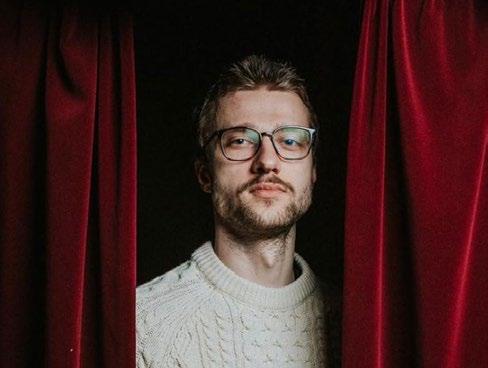
Director Reinis Ūbelis
No No Place Hotel
No No Place Hotel
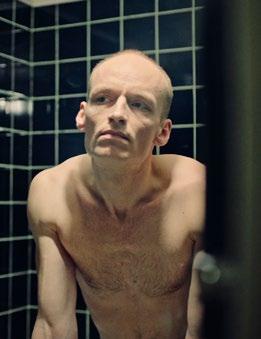
Room Number by

Silvia Lorenzi (Estonia)
Each guest of an hourly hotel deals with a delicate moment in their life, until their routine is interrupted by the suicide of one of the inhabitants, revealing the brittleness of life and its vulnerability. Lorenzi’s film is a poignant exploration of fragility, privacy, and the quiet desperation that unfolds behind closed doors.
Weekend by Rytis Dringelis (Lithuania)
After a breakup, a thirtysomething man moves back in with his parents and begins renting out the apartment he once shared with his partner. As new tenants arrive, so do old memories. Weekend is a subtle character study about emotional dislocation, the awkwardness of transition, and the haunting presence of the past in the spaces we once called home.




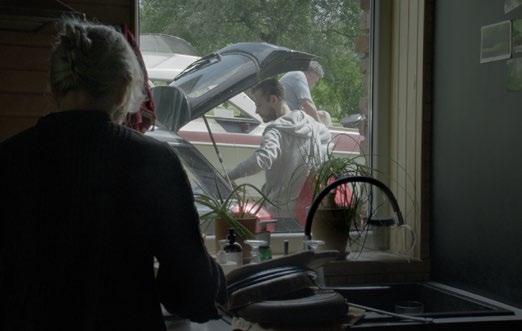

LIVE ACTION INTERNATIONAL COMPETITION – NEW TALENTS
Big Zeus by Johannes Magnus Aule (Estonia)
Father Koit is a clergyman who has fallen prey to gambling, having lost all the decaying church’s funds and donations in an online casino. His savior comes in the form of his daughter Maria, who wants her father to serve God again instead of slot machines. Big Zeus juxtaposes themes of moral collapse, economic pressure, and the quiet strength of children thrust into ethical crises.
Glitter Kiss by Augustė Gerikaitė (Lithuania)

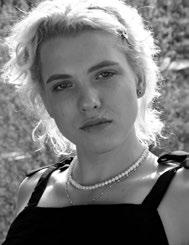
When a drag queen is brutally attacked, a homophobic neighbour becomes the unlikely figure who drives him to the hospital - a moment that challenges his worldview. With raw honesty, Glitter Kiss examines prejudice, vulnerability, and the transformative power of unexpected human contact. It is both a critique and a hopeful exploration of personal change in a polarized society.
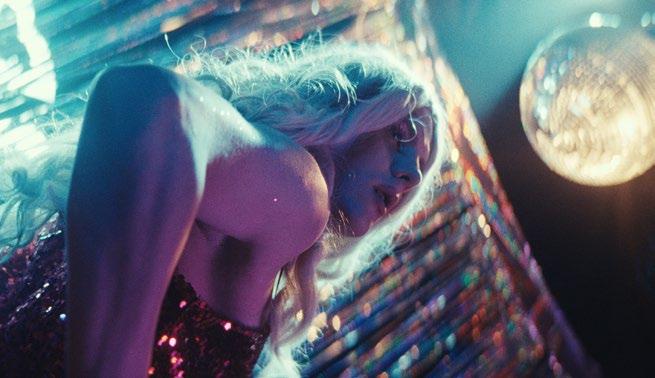
Director Rytis Dringelis
Director Silvia Lorenzi
Director Augustė Gerikaitė
Director Johannes Magnus Aule
Room Number
Glitter Kiss
Big Zeus
Big Zeus Weekend
SHORTS

ANIMATION INTERNATIONAL COMPETITION – NEW TALENTS
Cleanliness by Andrejs Brīvulis (Latvia)
Animated in diary-style vignettes, Cleanliness follows the daily routine of an office worker navigating the mundanity of work, casual sex, and life with a depressed, alcoholic partner. Beneath the surface of order lies emotional chaos. Brīvulis’ film delicately balances dark humor and existential weariness, asking what happens when routine becomes a mask for internal collapse.


Wandering Dot and the Blank Square Page Universe by Ieva Lība Ratniece (Belgium/Latvia)
An experimental animation described as a “visual poem,” this short portrays a journey across a blank page. Through abstract imagery and sound, it evokes the moment of creation — placing the first mark, making the

first move. It’s an artistic meditation on presence, authorship, and the endless potential of a space before it’s claimed.
PÖFF SHORTS PROGRAMMERS WEIGH IN
For Laurence Boyce, Live Action Programme Director at PÖFF Shorts, the Live Action Competition is a snapshot of the current state of short film, taking in the diversity of the medium and the fact that it can push against the restraint of traditional mainstream Cinema. “While animation has always proved popular alongside documentary, there are also huge strides being made in regards to fiction shorts with many a young Baltic filmmaker now making their marks on the international circuit,” he notes.
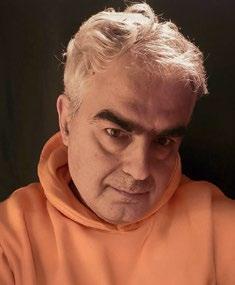
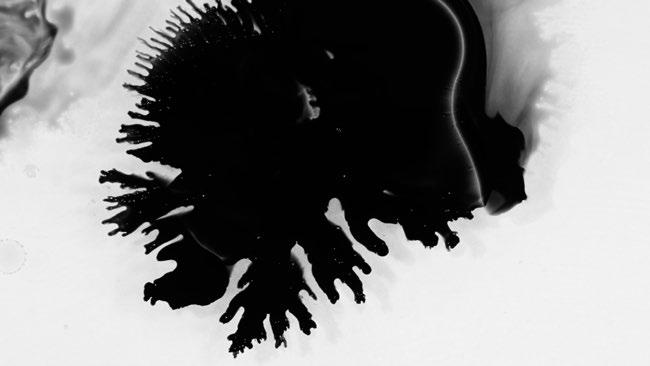
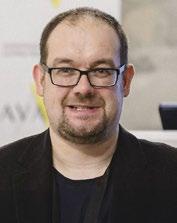
This sentiment is echoed by Vassilis Kroustallis, Animation Programme Director at PÖFF Shorts. “More feature and animation shorts are being prepared by the Baltic animation filmmakers in what proves to be exciting times for Baltic animation visibility,” he adds.

Director Andrejs Brīvulis
Vassilis Kroustallis
Laurence Boyce
Director Ieva Lība Ratniece
Cleanliness
Cleanliness
Wandering Dot and the Blank Square Page Universe
Wandering Dot and the Blank Square Page Universe
International Momentum
One of the clearest signs of Baltic Cinema’s growing prominence is its increased visibility at major international festivals. And this is the consensus among key short film movers and shakers in the Baltics. For several years now, the Baltic Shorts delegation has been making a notable appearance at the Clermont-Ferrand International Short Film Festival, where curated selections from Estonia, Latvia and Lithuania are being screened and promoted to global short film industry players. Such visibility is more than symbolic – it reflects the region’s evolving reputation as a hub of fresh cinematic talent. “Estonia, Latvia and Lithuania are countries with distinct cultural identities that exist individually and in ways very differently from one another, yet ‘Baltic shorts’ as an umbrella term, has become a stamp of quality, which directs the viewer to discover an array of fresh stories and sincere voices,” explains Mirjam Mikk, Marketing and Distribution Expert for Animation and Short Films at the Estonian Film Institute. “On the International film scene, the region is not so obscure anymore, but defined by filmmakers with a unique yet universal perspective.”
Meanwhile, the Baltic Pitching Forum continues to serve as a vital incubator for new voices. The 2025 edition featured 12 short film projects from the three Baltic countries and guest participant Hungary, highlighting not just regional collaboration but also a widening network of creative exchange. “In recent years, it has become clear that a film’s success on the international scene depends first and foremost on talent, not the size of the market. While organising the Baltic Pitching Forum over the past 13 years, we have observed a significant increase in the international visibility of Baltic short films and filmmakers,” says Rimantė Daugėlaitė, Managing Director of Lithuanian Shorts. “It’s also worth celebrating that Baltic filmmakers are increasingly discovering their individual voices and unique artistic styles, allowing them to stand out in the global short film landscape and successfully connect with international audiences.”
National agencies like the Latvian Short Film Agency or Lithuanian Shorts are playing a crucial role too, with initiatives like digital catalogues that promote Baltic shorts to distributors and festival programmers worldwide. Despite the momentum, distribution beyond the festival world is still limited, with few consistent channels for reaching wider audiences. Yet, what some might see as limitations, Baltic filmmakers are turning into advantages.
Indeed, through the art of doing more with less, Baltic filmmakers find striking creative freedom, which coupled with a strong sense of regional community, gives Baltic shorts a rare authenticity – one that’s increasingly being noticed and celebrated, far beyond their borders. “It’s inspiring to see these films

resonate globally while staying true to their cultural roots. Our greatest strength lies in this spirit of collaboration—supporting one another, sharing knowledge, and growing together,” remarks Diāna Trope, Managing Director of the Latvian Short Film Agency. “With that foundation, the future of Baltic short film is bright, driven by a new generation of bold, connected storytellers ready to make their mark.”
LOOKING AHEAD
The infrastructure is strengthening, the storytelling is maturing, and international audiences are beginning to pay attention. With more platforms, more risk-taking, and more regional collaboration, Baltic shorts are becoming a genre in their own right. A place where Cinema experiments, and often surprises. BF

by
Baltic delegation at the ClermontFerrand International Short Film Festival.
Baltic Pitching Forum is a vital incubator of new voices.
Photo
Stukas Studio
EVENT
TOP Picks
Industry@Tallinn & Baltic Event, Northern Europe’s most vibrant summit for audiovisual professionals, will take place from November 14–21 in Tallinn. This year’s edition introduces a rich programme of masterclasses, project presentations, panels, talks and networking opportunities. To help navigate the packed schedule, producers Andreas Kask and Johanna Maria Tamm share their top picks.
ANDREAS KASK
is the Head of Content at Nafta Film, participates in the Baltic Event Works in Progress with Something Real, Evar Anvelt’s debut feature. His previous works include several shorts, such as Sugar, Stina (2025), and Breadsong (2025).
FIRESIDE CHAT: SHORT FILM FESTIVAL ETIQUETTE
• November 15, 12:15
• BFM, SuperNova Cinema
Short film distribution and festival strategy can be tough to navigate—the market is relatively small and unique. If you are producing or planning on making short films, it will be worth listening to someone willing to give guidance.
DIGITAL MARKETING OF GENRE
• November 18, 14:00
• Nordic Hotel Forum, Vega
Our film Something Real at the WIP section is also genre-skewing, which is personally interesting to me. Genre films travel well internationally, but the market is also very competitive, so it helps to know how to stand out.
PANEL DISCUSSION: CAN FILM SCHOOLS KEEP UP WITH THE INDUSTRY?
• November 18, 16:00
• Nordic Hotel Forum, Arcturus
Nafta Films has financially support-
ed the production of last year’s student thesis films at Baltic Film, Media and Arts School, as we still remember how it was to make films on a shoestring budget. As the industry develops rapidly, it is challenging to keep up with the trends. It’s fair to ask if there’s a latency to it for the next generation of filmmakers in schools who should be setting the future currents.
OPEN LECTURE BY COSTUME DESIGNER DEBRA MCGUIRE
• November 19, 16:15
• Nordic Hotel Forum, Capella

One of the best ways to raise films’ onscreen production value is through great costumes. Given Debra’s impressive filmography and experience, I’m sure she can offer useful tips and insight into the world of costumes.
HOW TO BLOW UP THINGS IN ESTONIA (AND GET A REBATE FOR IT): SISU2 CASE STUDY AND ESTONIAN CASH REBATE SCHEME PRESENTATION
• November 19, 18:30
• Kino Sõprus
Estonia is a great place to shoot your next movie, so go and listen to why it’s so, be amazed at how quick and efficient our rebate scheme is, and get in contact!
PROJECT PITCHING: EUROPEAN GENRE FORUM
• November 20, 13:00
• Nordic Hotel Forum, Capella
I always listen to the pitches at the European Genre Forum, and every year, I hear some great pitches for projects that I’d like to co-produce.
PRIVATE FINANCING IN FILM: BETWEEN PROMISE AND ILLUSION
• November 20, 16:00
• Nordic Hotel Forum, Capella
As public funding is being cut across Europe, the importance of private finance is rising. Learn the realities of dealing with private financing; although there’s great potential, there are also limitations.
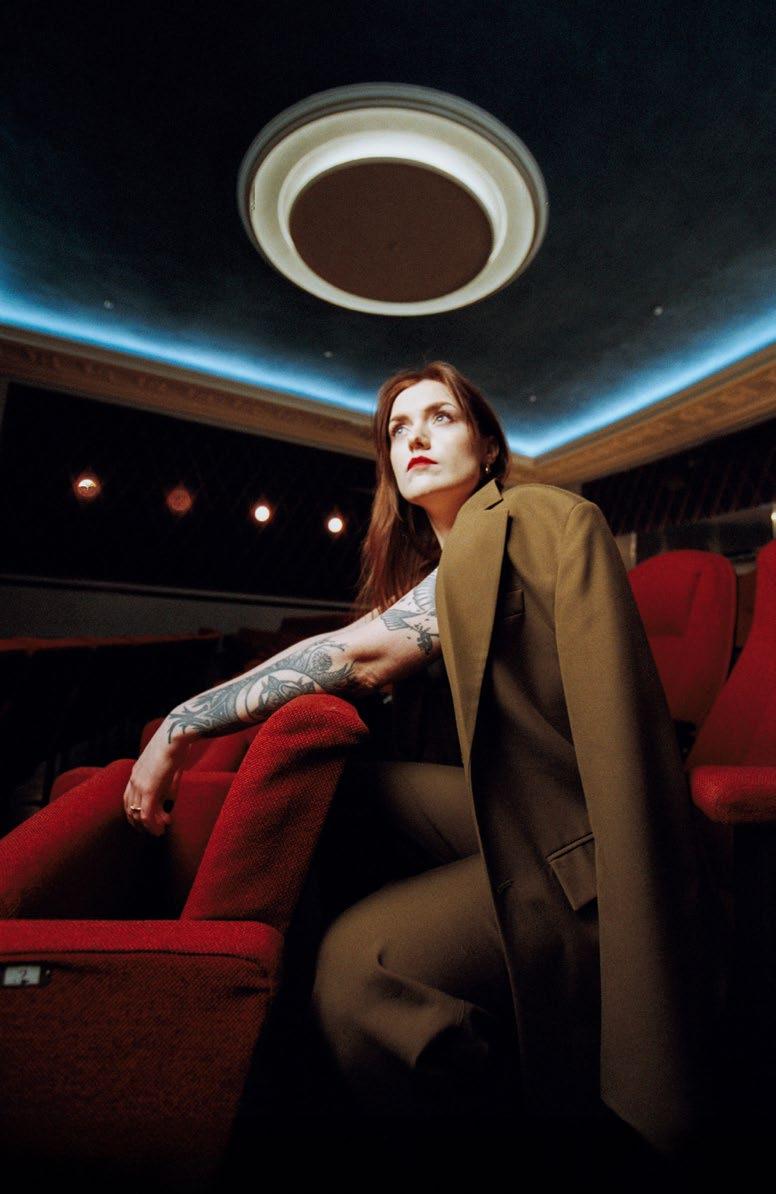
JOHANNA MARIA TAMM
is a producer and partner at Stellar Film. Her works have premiered at leading festivals such as Cannes Critics’ Week, Toronto, Hot Docs, Göteborg, and Tallinn Black Nights. At Industry@Tallinn & Baltic Event, she participates in the TV Beats Co-Financing market with a series project, Business as Usual
LECTURE: FROM SHORTS TO FEATURES - LIVE ACTION
• November 14, 14:15
• Tallink City Hotel, Function Area
Having worked closely with Anna, I know how deeply she approaches each story and how she shares her insights. It’s a great opportunity to hear from a filmmaker whose path has been guided by strong vision and authenticity.
PROJECT PITCHING: TV-BEATS CO-FINANCING MARKET
• November 17, 10:45
• Apollo Kino Coca-Cola Plaza, 1st Lux Hall
Pitching sessions are always a great way to gauge the industry's progress, see what’s being developed, what excites people, and where new collaborations might begin.
November 14–21
CONTEMPORARY SCRIPT STYLE AND DIALOGUE
• November 19, 16:00
• Nordic Hotel Forum, Arcturus
As the industry evolves, so do our ways of telling stories. Everything begins with a script, and as a creative producer, I’m eager to explore how to guide my projects toward stronger, more emotionally engaging storytelling.
THE SHRINKING GAP BETWEEN THEATRICAL AND STREAMING RELEASES
• November 20, 16:00
• Nordic Hotel Forum, Arcturus
We’re clearly moving into a new era, though it’s not yet clear what it will look like. I’d rather be on the train already moving and figure it out together than stay behind.
SUSTAINABLE FILMMAKING WORKSHOP
• November 21, 09:30
• Nordic Hotel Forum, Arcturus
Sustainability in filmmaking is deeply important to me, yet I need to prepare a new funding strategy every time. I want to learn ways to keep what truly matters front and centre while navigating the bureaucracy.
BEYOND THE USUAL SUSPECTS: WHO ELSE IS OUT THERE BUYING INDIE FILM IN INTERNATIONAL DIGITAL
• November 21, 11:30
• Nordic Hotel Forum, Capella
As the streaming landscape keeps shifting, it’s crucial to look beyond the usual players and explore new ways of connecting films with their audiences. I’m particularly interested in hearing Wendy’s insights on how to approach niche and regional platforms, and find the most fitting homes for the films we create.
Photo by Mari Makarov

Building Bridges through Storytelling
Series Mania Institute
Eureka Series 2022
alumna and writer of Von Fock, Leana Jalukse, spoke with Pierre Ziemniak – Director of Programmes at the Series Mania Institute – and Thomas Grand, Regional Audiovisual Attaché for Poland, Estonia, Latvia and Lithuania.
By Leana Jalukse Photos by Marie Rouge and private collection
This year’s TV Beats Forum will host the inaugural Serial Bridges Baltics workshop –five days of intensive mentoring designed to provide participants with a deeper understanding of the international series market and practical guidance on navigating the European co-production and co-financing landscape. Six writer–producer duos from Estonia, Latvia, and Lithuania will also have the opportunity to meet renowned international series professionals during exclusive masterclasses.
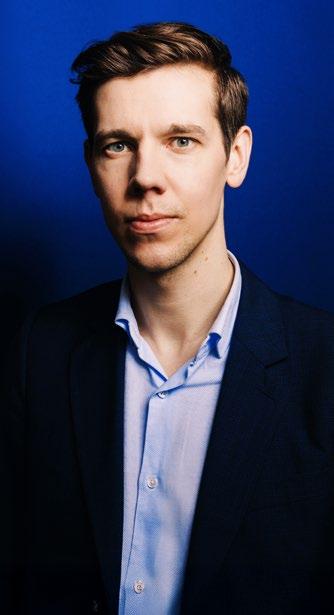
FROM RIO TO THE BALTICS
Serial Bridges Baltics was launched through the efforts of Thomas Grand, whose goal was to strengthen cooperation between France and the Baltic audiovisual sector. With no prior structured partnership between the two regions, collaboration had to start from scratch.
Grand’s motivation came from witnessing the Baltics’ strong collaboration on audiovisual projects, especially scripted series. He highlighted two recent examples: Von Fock, an Estonia-Latvia-Italy co-production that premiered this year, and the Estonian–Ukrainian My Dear Mother, featured in the Berlinale Series Market Selects programme.
“They show the strength of local quality content with authentic roots and
prove that Baltic productions have the potential to reach international audiences,” said Grand. “The next step is to build bridges – to bring together professionals from different regions.”
For this, Grand enlisted Pierre Ziemniak, who had already organised the aptly named Serial Bridges workshops in Rio de Janeiro, Taipei, Almaty and Istanbul over the past two years. The workshops are largely financed by France, through the Institut français and French embassies, alongside local partners. French distributors have also shown openness in partnering with the initiative, exploring new markets with curiosity and a spirit of collaboration.
A CHANGING INDUSTRY
It is particularly important to foster new partnerships at a time when the post–peak TV slowdown has left the series industry seeking new strategies and business models. The globalisation of streaming has accustomed audiences to watching series in many different languages – a change that means local content can now travel internationally without necessarily relying on platform commissions or multinational partnerships.

Pierre Ziemniak
Thomas Grand


However, Baltic producers continue to face the challenge of small markets and limited budgets. International co-production and cross-border talent exchange therefore remain essential tools for enhancing creative and production value. While film co-production frameworks are well established, series models are still emerging, and Serial Bridges aims to help shape them.
“Our ambition,” Grand explained, “is to encourage more creative exchange at the development stage – to support collaboration between writers and producers, and to build the structures that could one day become true European writers’ rooms.”
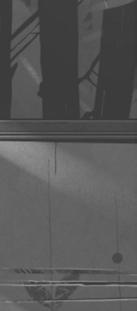
SERIAL BRIDGES BALTICS PROJECTS 2025:
• Aurora Newsroom by Juris Kursietis, Estonia-Finland-Latvia
• Codename: Lighthouse by Raoul Suvi, Estonia
• Midnight Stories by Gabija Siurbytė and Ernestas Jankauskas, Lithuania
• Therapies by Birutė Kapustinskaitė, Lithuania
• The Outskirts by Lelde Kovaljova, Latvia
• Shadows of the Swamp by Raitis Ābele and Lauris Ābele, Latvia

While the industry continues to adapt to new realities, further transformation is imminent. One major force on the horizon is artificial intelligence, whose impact on writing and production the Series Mania Institute is already exploring through its new workshop, the AI Storytelling Bootcamp.
LOOKING AHEAD
Both Grand and Ziemniak hope to make Serial Bridges a recurring initiative and a long-term partnership between France and the Baltics.
While Grand admitted that the number of submissions was not high, he emphasised their strong quality and noted

that most already have broadcasters attached. Ziemniak added that he was impressed by the variety of genres among the projects submitted. The current selection is already in a rather advanced stage, but future editions may focus on projects in earlier stages. Grand emphasised that the more effort invested in creative development, the more likely projects are to travel internationally. BF
The Baltic edition is financed by the French Ministry for Europe and Foreign Affairs and the Institut français, as part of France’s strategy to promote cultural and creative industries internationally, and supported by Industry@Tallinn & Baltic Event, the Estonian Ministry of Culture, Elisa Eesti, Latvian Television, LRT, and the Estonian Film Institute.

Therapies The Outskirts
Shadows of the Swamp
By
Stand Out. Get Hired. Join Creative Gate.
In the audiovisual industry, reputation is based on visibility, credibility, and connection. Whether working as a director, cinematographer, editor, or actor, professionals increasingly find that their next opportunity depends on how easily others can find and evaluate their work online. Creative Gate, developed by Industry@Tallinn & Baltic Event in partnership with the Tallinn Black Nights Film Festival, offers a focused and professional environment for that discovery.
Egle Loor, the Project Manager of Creative Gate says that since launching the platform, they have received lots of encouraging feedback, particularly from emerging filmmakers, who haven’t yet built strong connections within the international film community.
“A polished, industry-specific profile helps creatives and professionals stand out. In the audiovisual industry, the online profile is part of your brand. Today
the digital footprint often replaces the traditional word-of-mouth introduction,” Loor adds.
PURPOSE-BUILT FOR FILM AND AUDIOVISUAL PROFESSIONALS
Unlike many other networking platforms, Creative Gate is tailored specifically for the film and audiovisual sector. It forms part of the Tallinn Black Nights Film Festival’s professional ecosystem, linking creatives, companies, and service providers across the entire production process – from development to post-production.

trustworthiness and visibility within the creative sector.
The Creative Gate profile serves as a professional industry calling card – creating a profile is currently free for both individuals and organisations. It allows users to showcase credits, skills, and showreels in a sleek, cinematic style, providing a single, polished link that reflects their entire creative portfolio. The platform is a verified database aimed at industry professionals, ensuring
CRESCINE’S REALITY CHECK ON EUROPE’S FILM TALENT PIPELINE
CresCine is a Horizon Europe research project with a clear brief: to strengthen the competitiveness of Europe’s audiovisual sector, especially in smaller markets, by understanding how film professionals actually learn, work, and upskill. Over 17 months, the team led by Storytek and the European Film Academy, ran two continent-wide surveys. And in early 2025, eight focus groups across Croatia, Denmark, Estonia, Ireland, Lithuania and Portugal. What did they find? First, willingness to learn is not the problem, resources are. Respondents reported high motivation to acquire new skills, but financial precarity and project-to-project employment constrain their capacity to pay for (or take time off for) training. As a result, professionals lean heavily on short courses, peer networks, festivals
and markets to pick up both craft and “strategic” skills (company development, leadership, finance), while calling for more flexible e-learning options. Second, the hottest topics mirror an industry in flux: AI and virtual production, green practices, and diversity, equity and inclusion. CresCine’s data lines up with wider European evidence that the sector now needs a new blend of digital, tech and creative skills; and fast. Third, the focus groups surface systemic frictions that rarely show in spreadsheets. Access to top-tier training remains gated; recognition for “below-the-line” roles lags; and there are glaring gaps in leadership and management pathways, which feed poor workplace cultures and mid-career churn. Small-market companies struggle to achieve stability because funding tools reward projects, not firms, limiting their
TAKE CONTROL OF YOUR PROFESSIONAL IMAGE
In a business where “who you know” is shifting to “who can find you,” Creative Gate takes a step forward. It allows you to connect with international producers, co-production partners, and people seeking talent. With hundreds of profiles already active, the platform aims to become the main reference point for Baltic and Nordic film professionals, striving to link with global opportunities. BF
ability to grow teams and mentor talent. Meanwhile, emerging technical roles are in short supply outside major hubs.
Finally, the project highlights a competitiveness paradox. Europe produces abundant, diverse works, but distribution dynamics and platform power make it hard for those works, and the people who make them, to find sustainable careers. The EU’s media outlook cautions that audience attention is fragmenting, advertising is shifting toward platforms, and generative AI will accelerate these pressures; the winners will be those who pair audience-first thinking with serious investment in data, technology and skills.
CresCine’s conclusion is pragmatic rather than pessimistic: target support at real bottlenecks (time and money), professionalise leadership, scale flexible learning, and back company-level capacity in smaller markets. Do that, and Europe’s film talent can keep pace with the technologies, and the audiences, remaking the screen. BF



